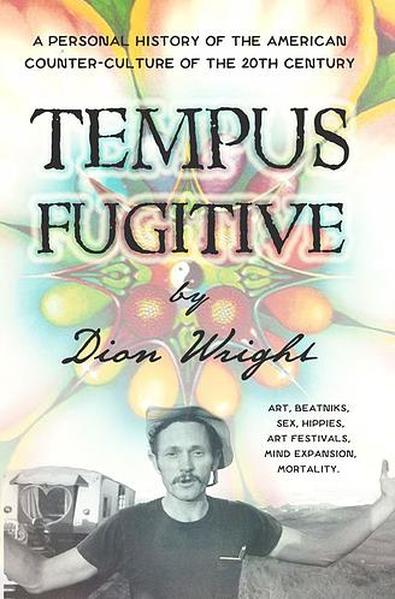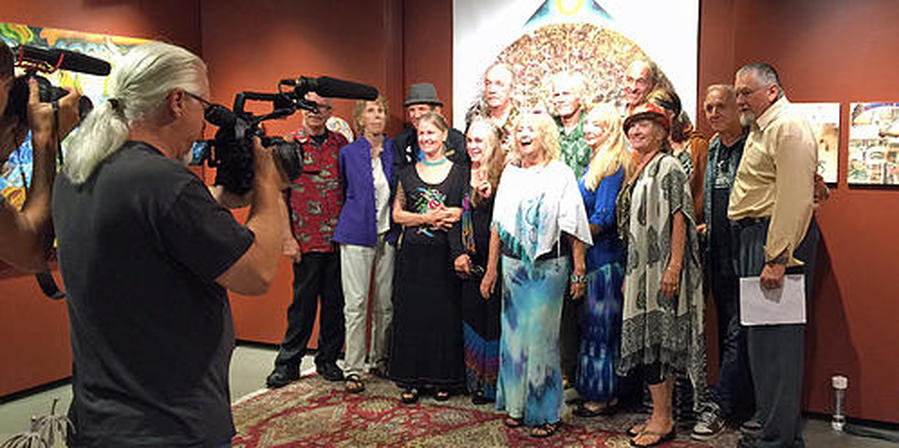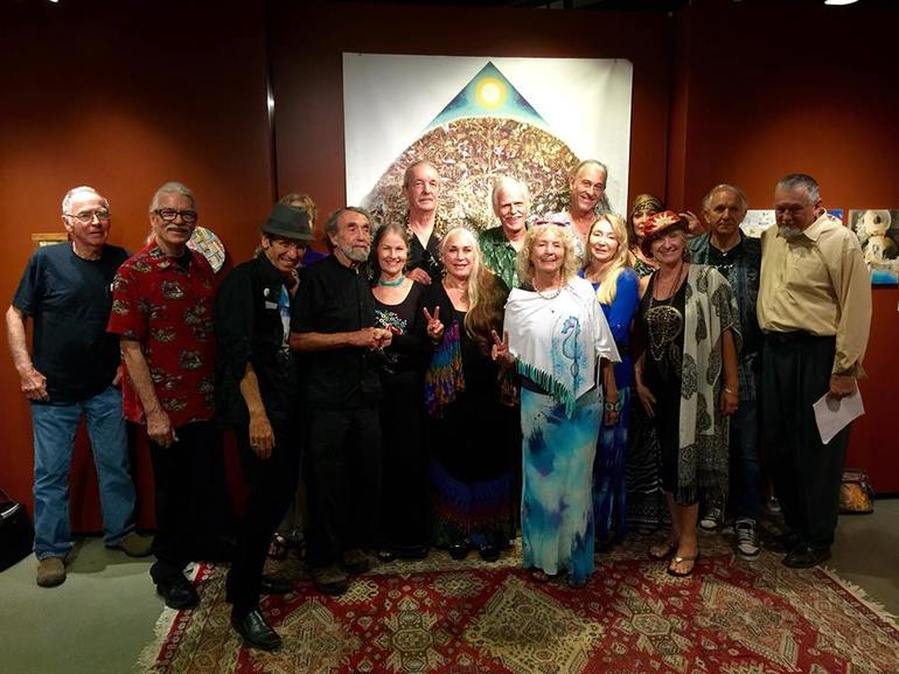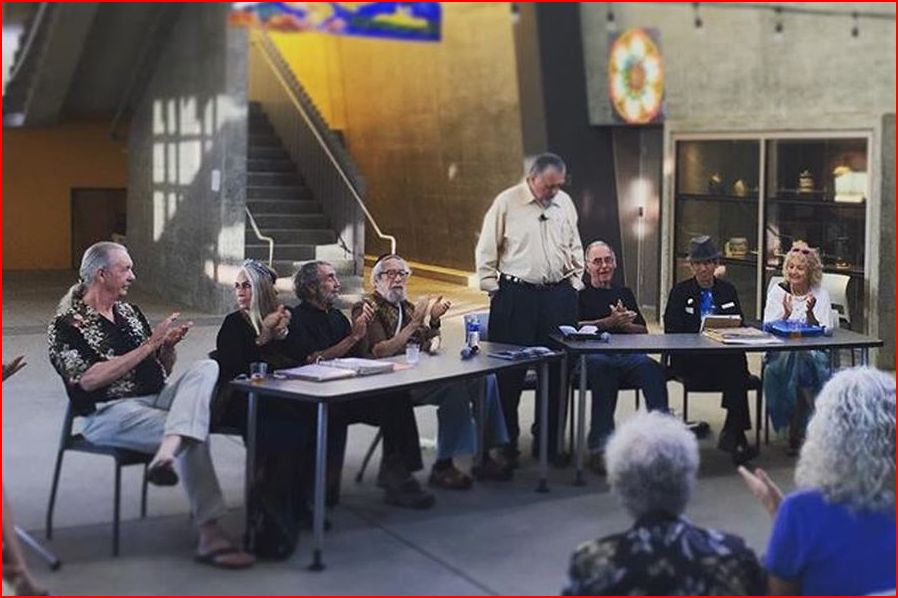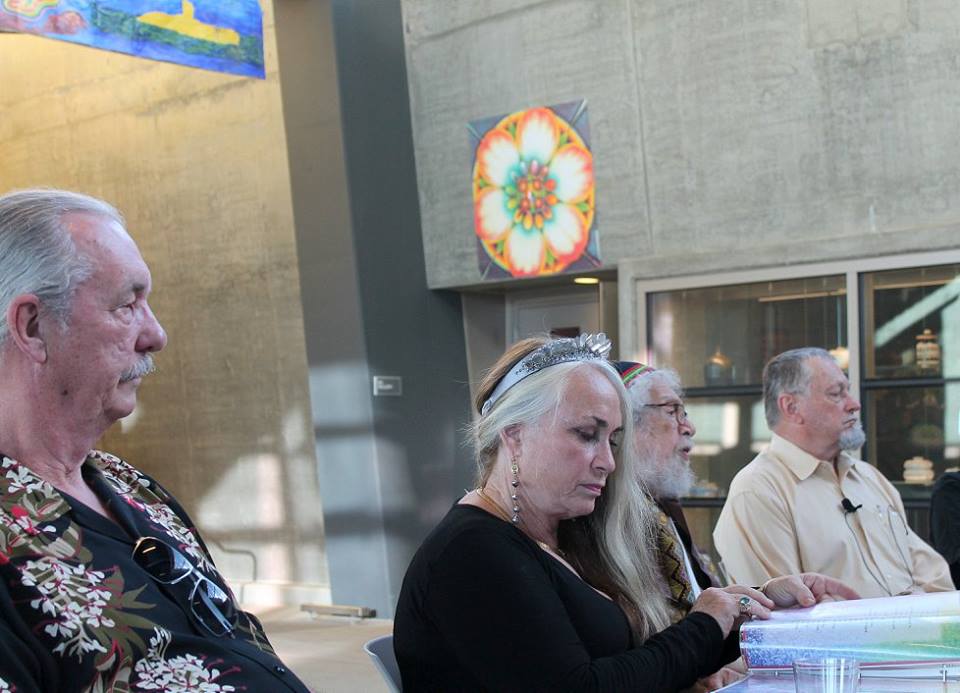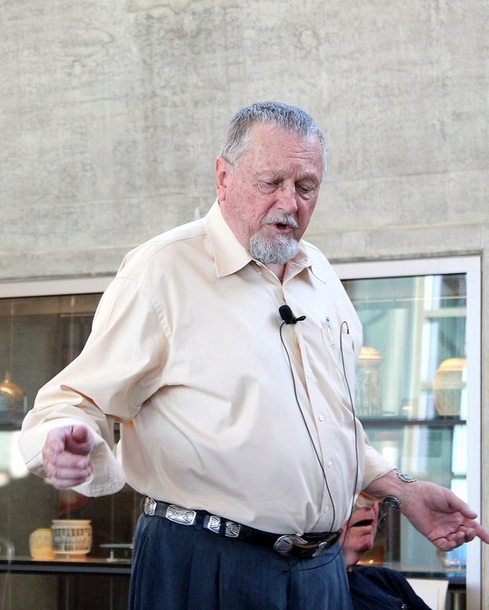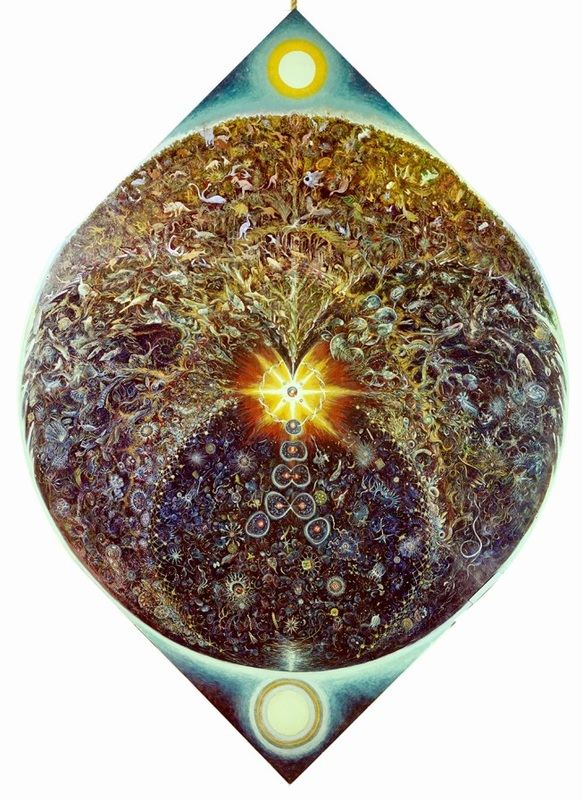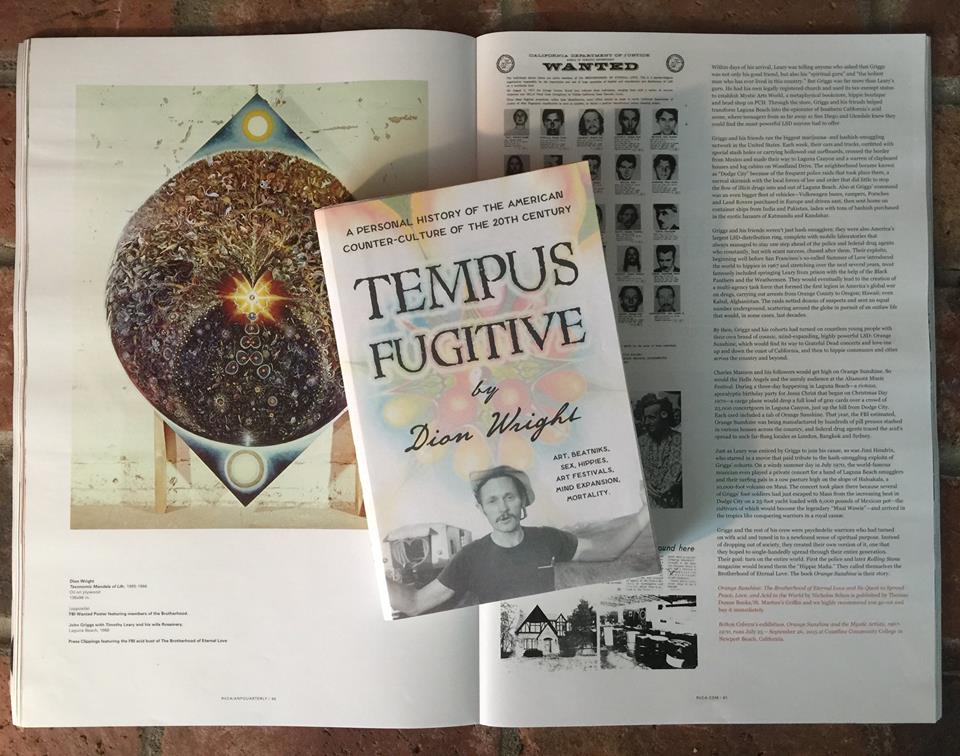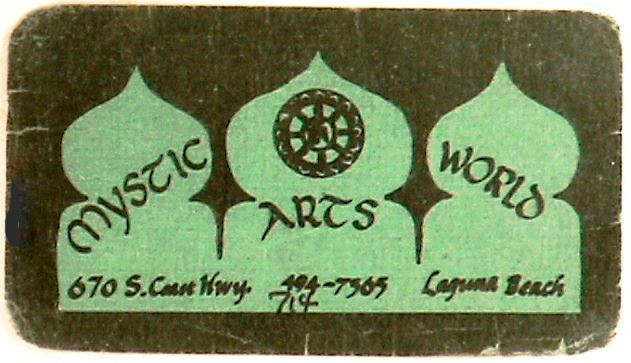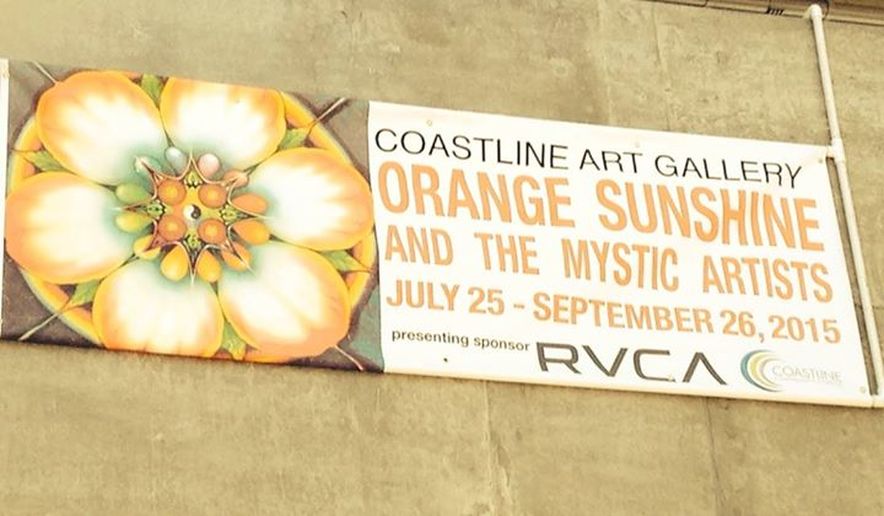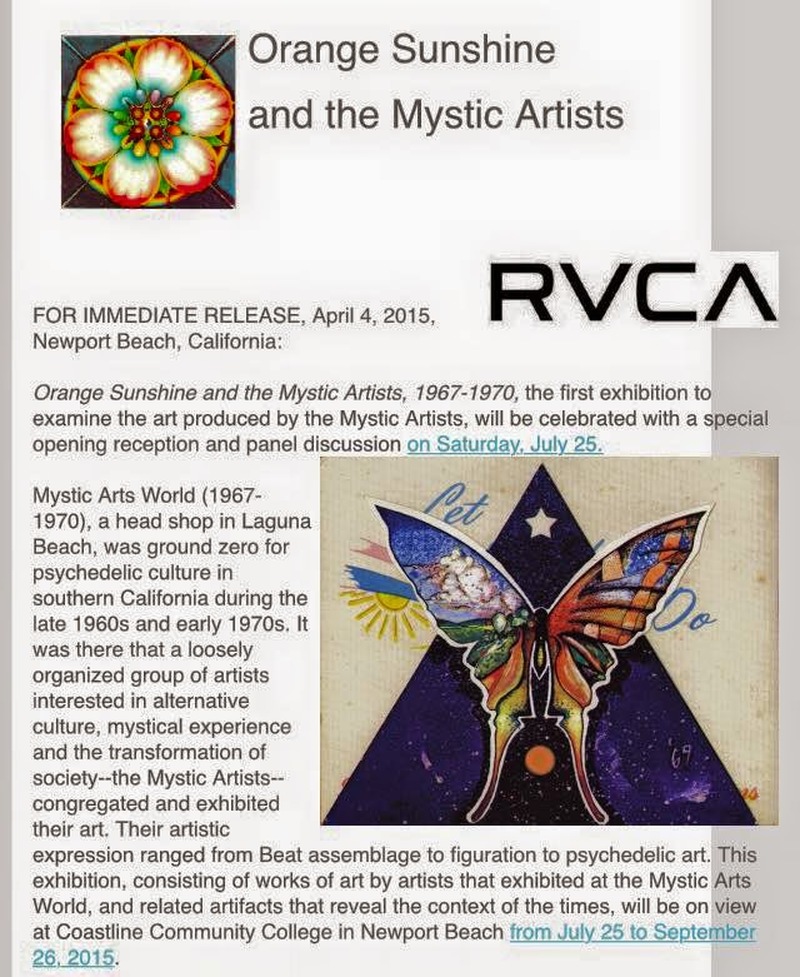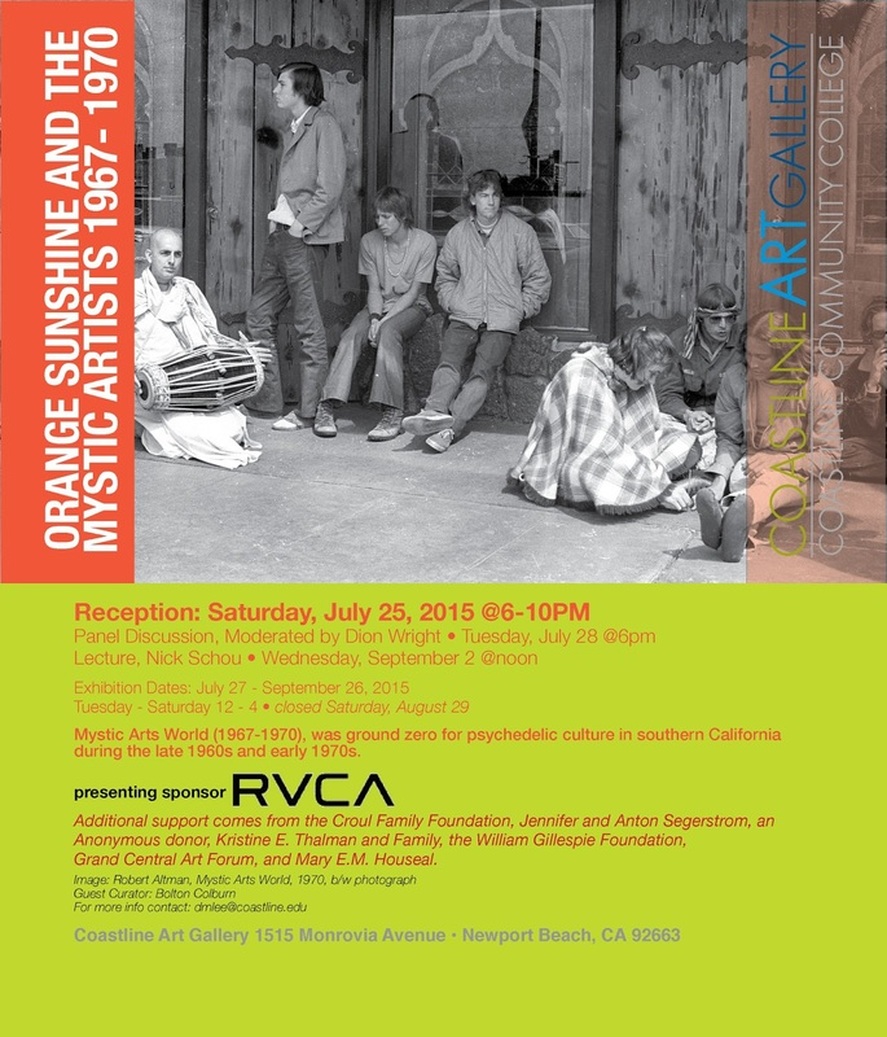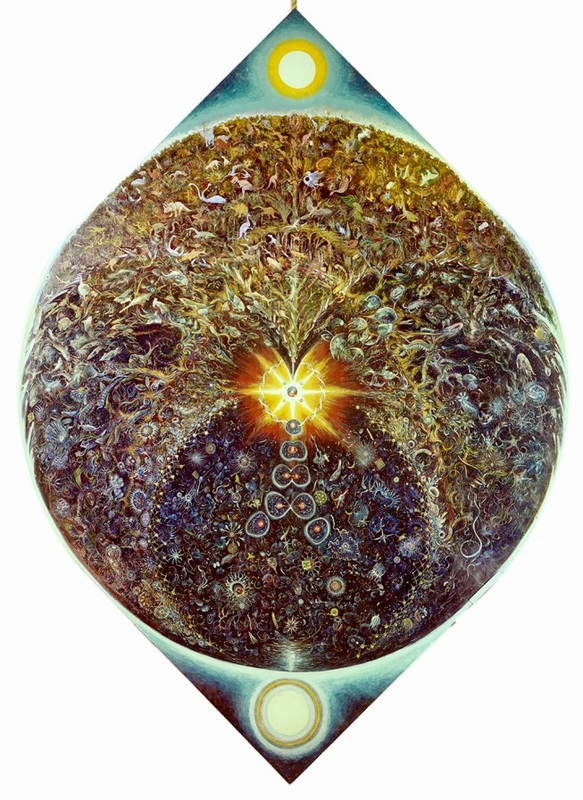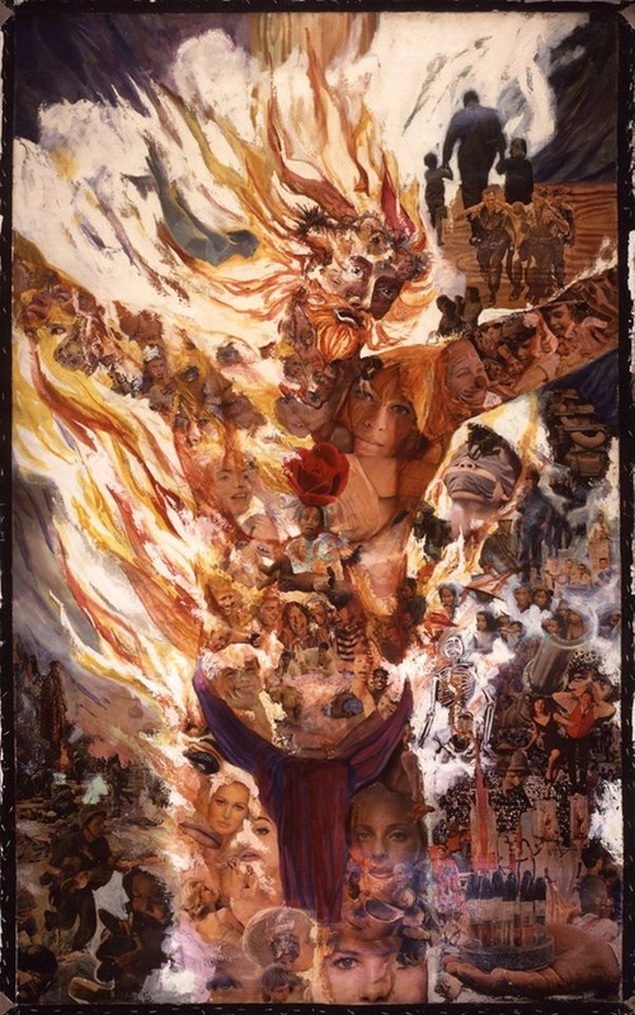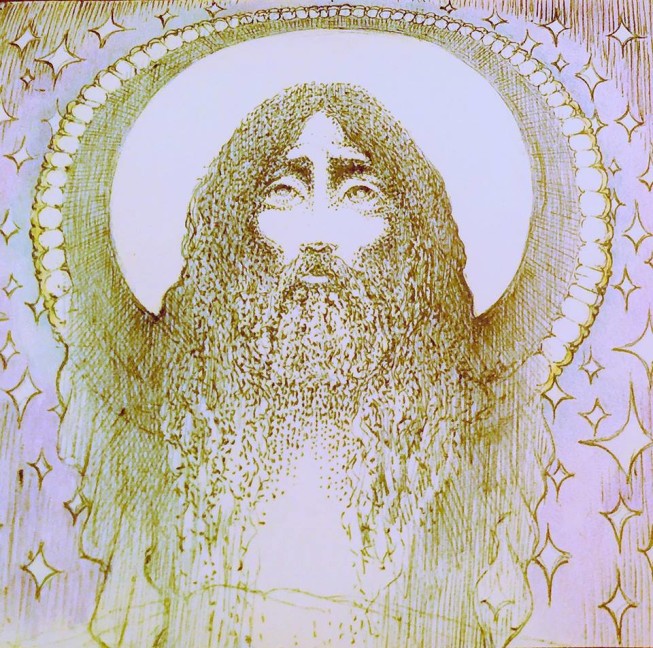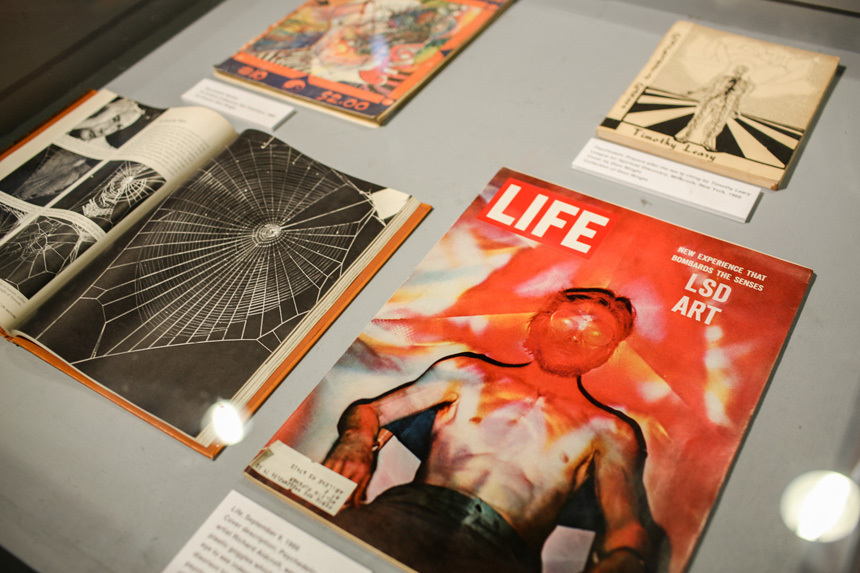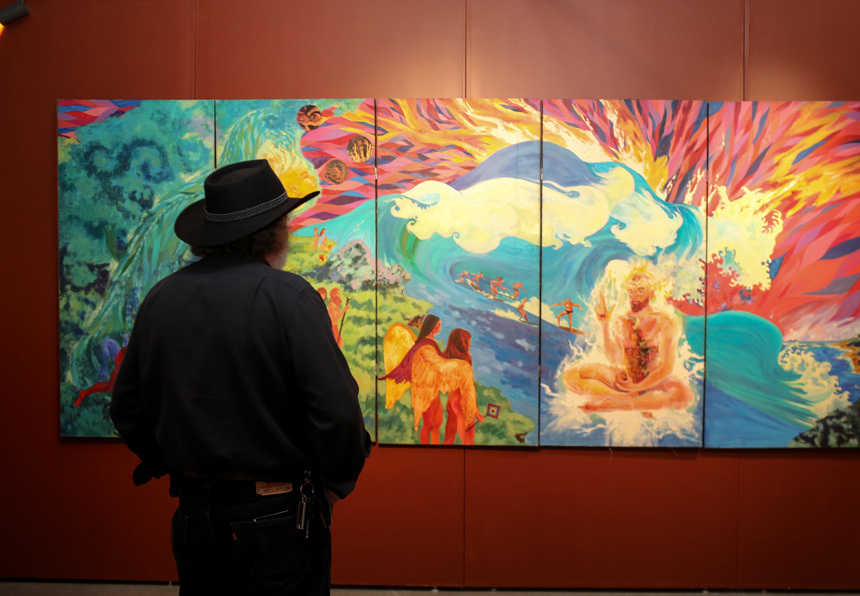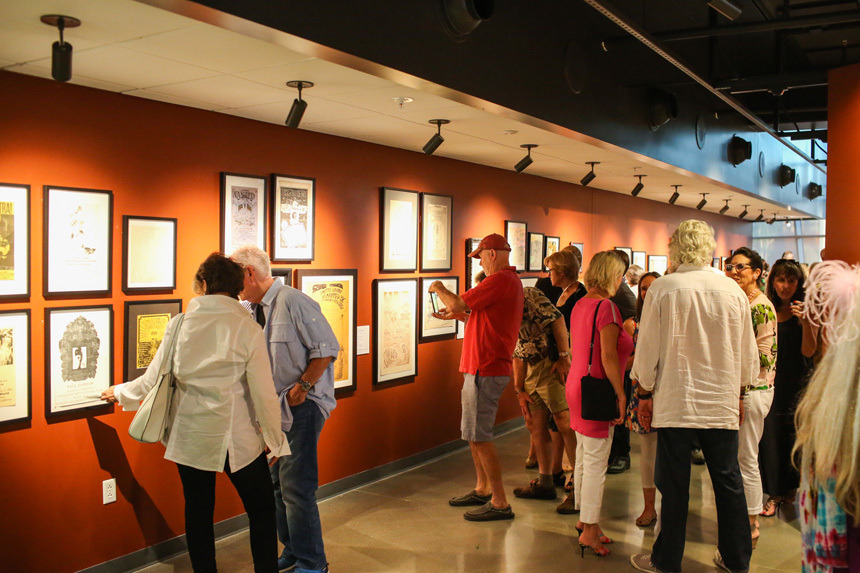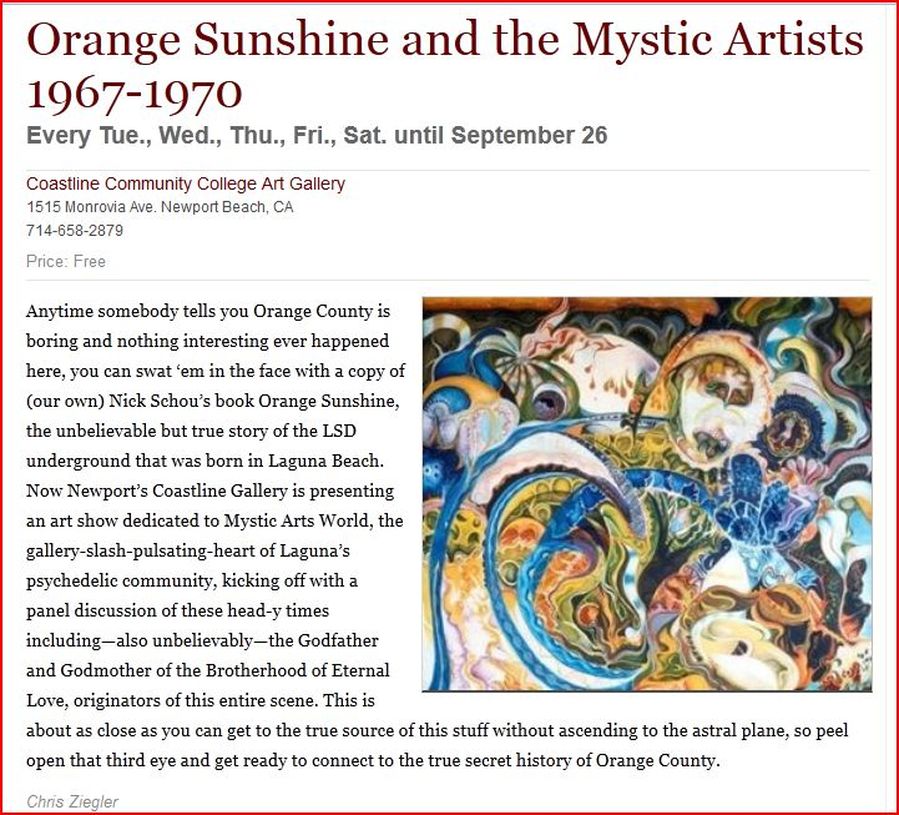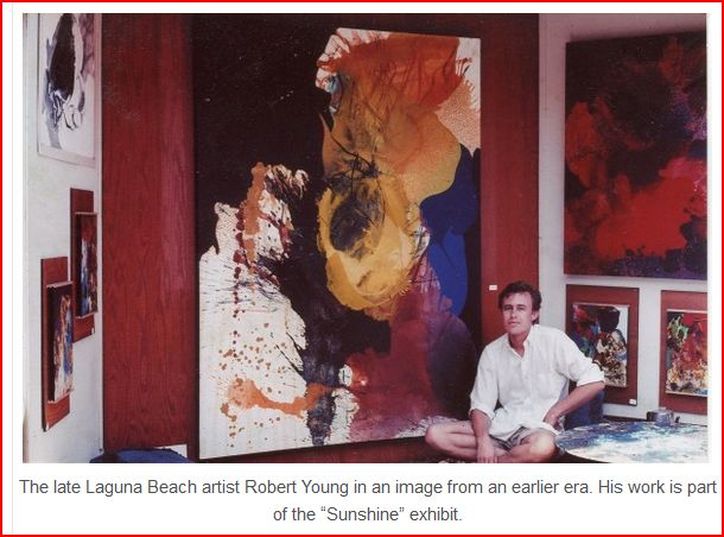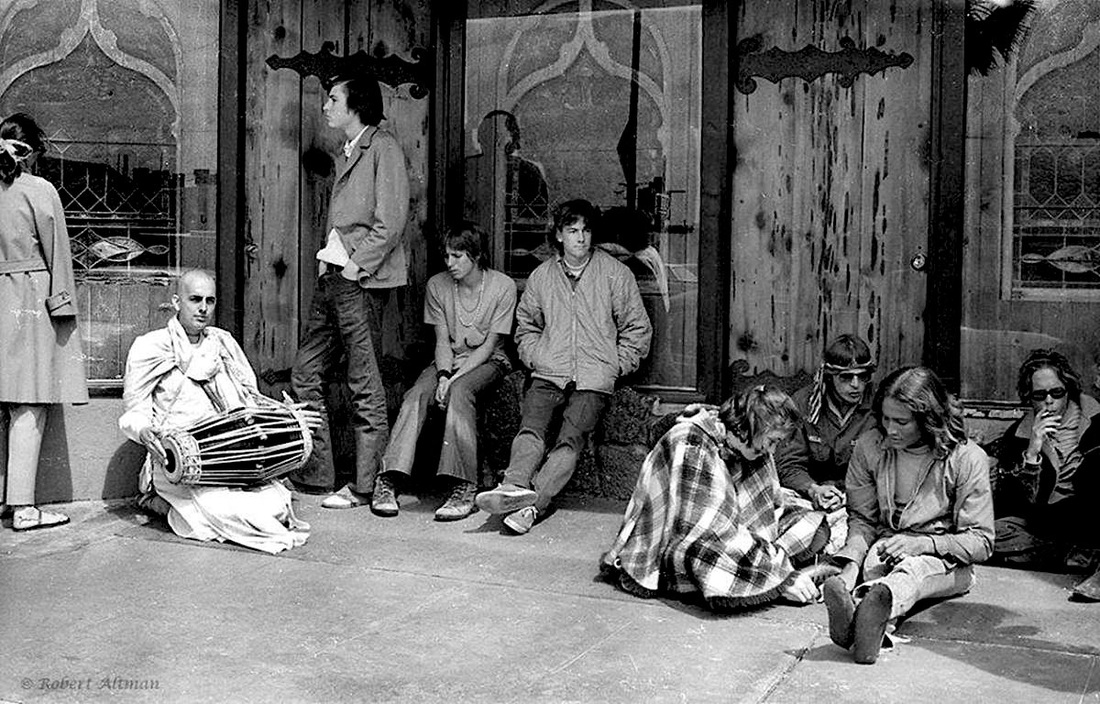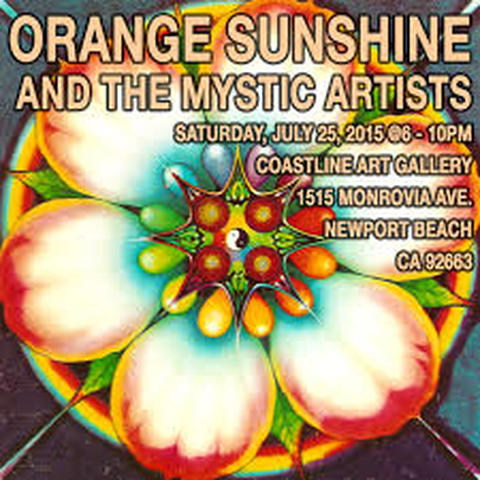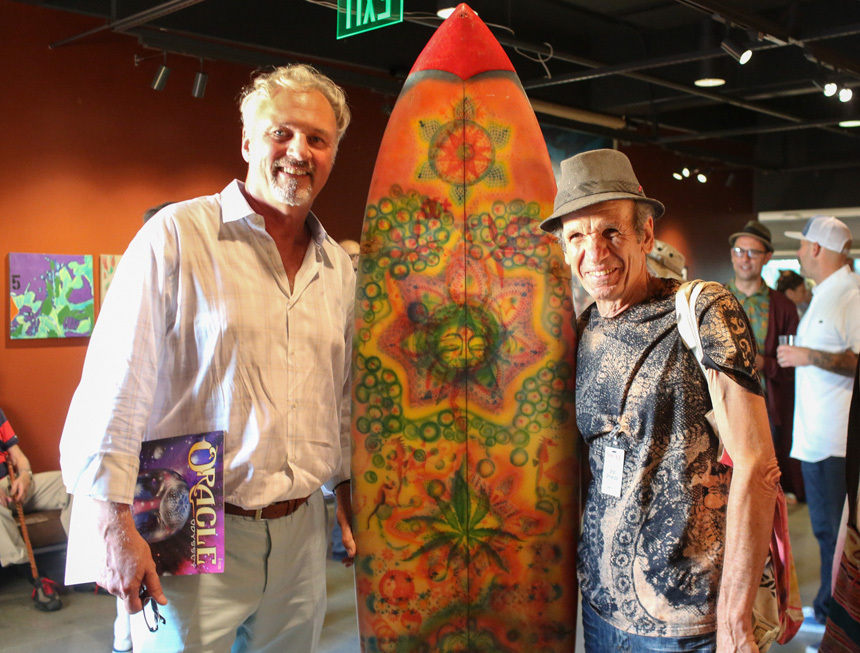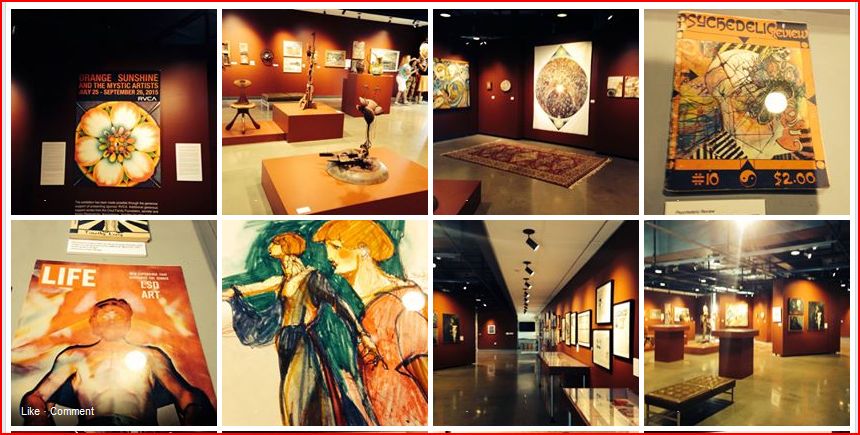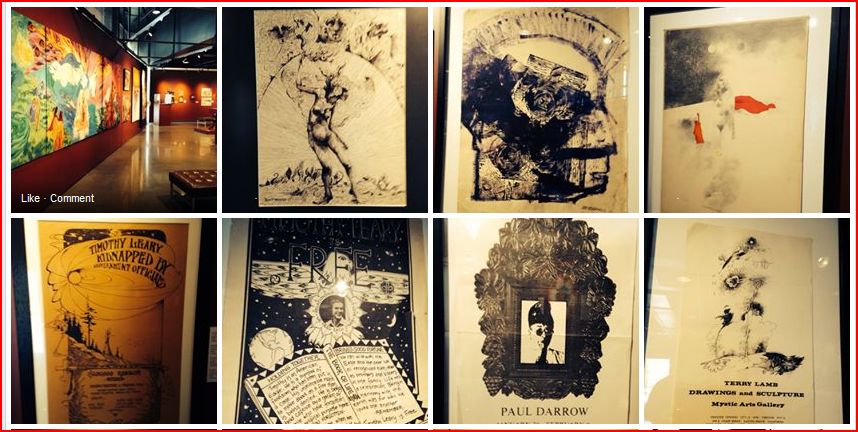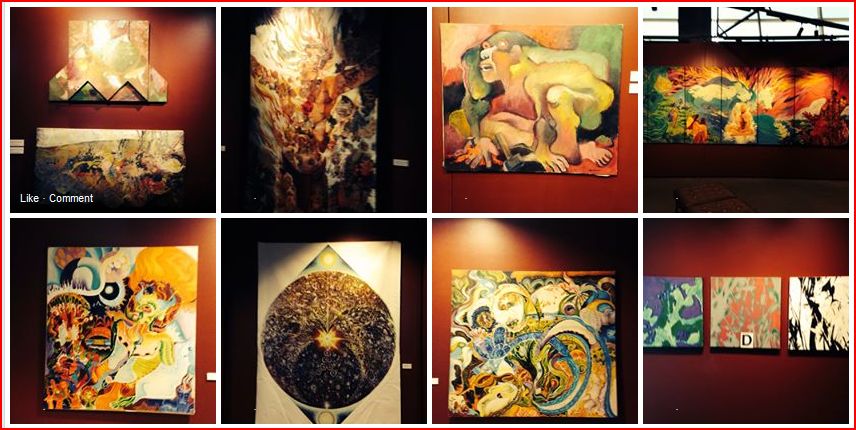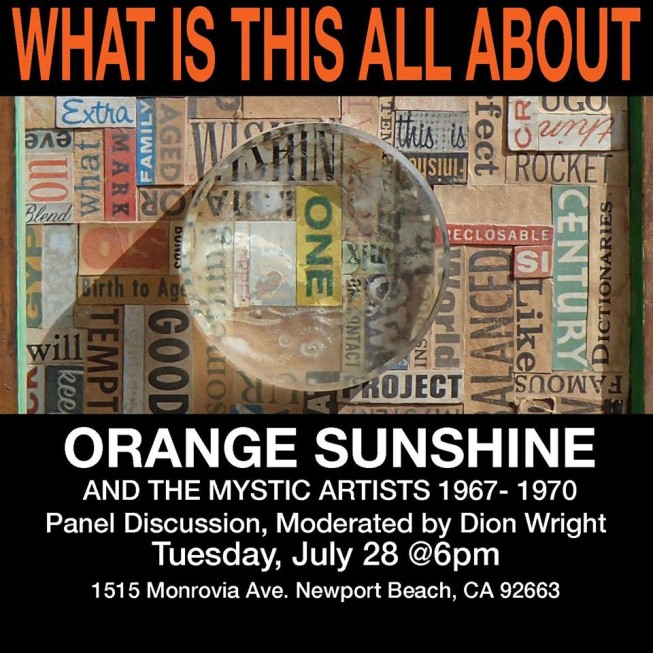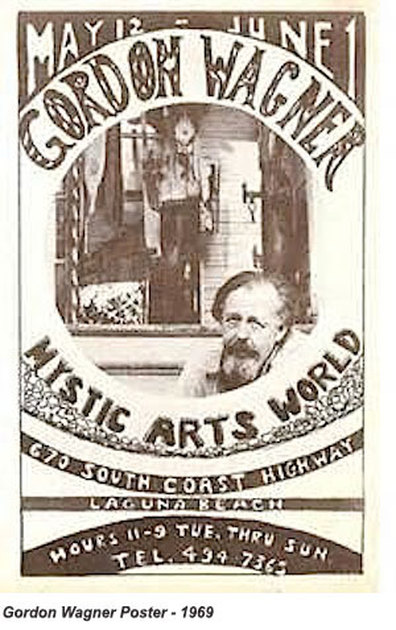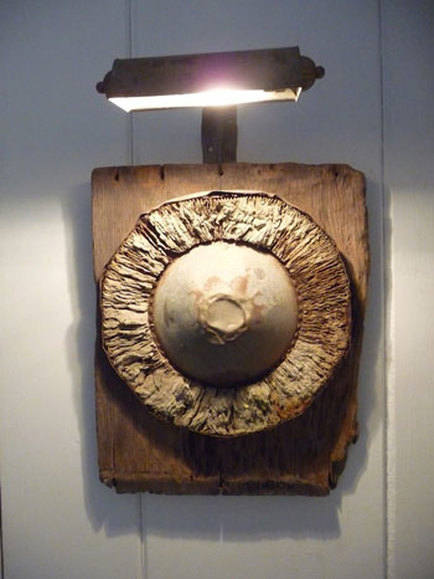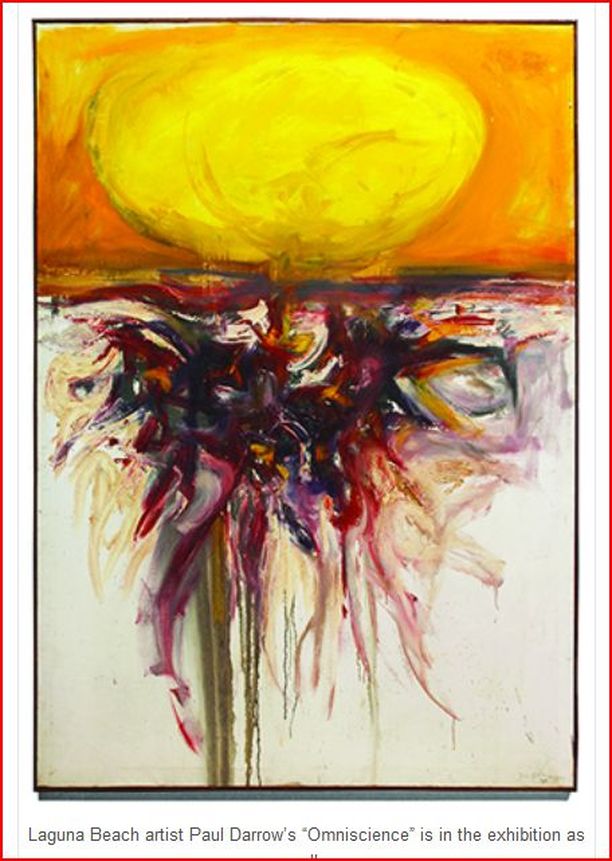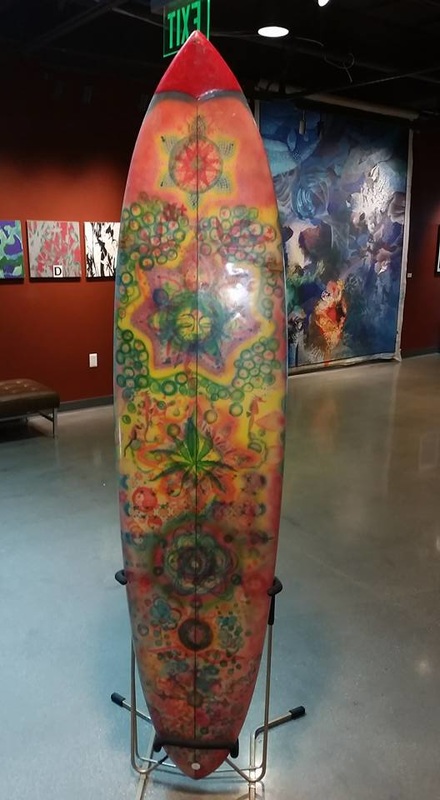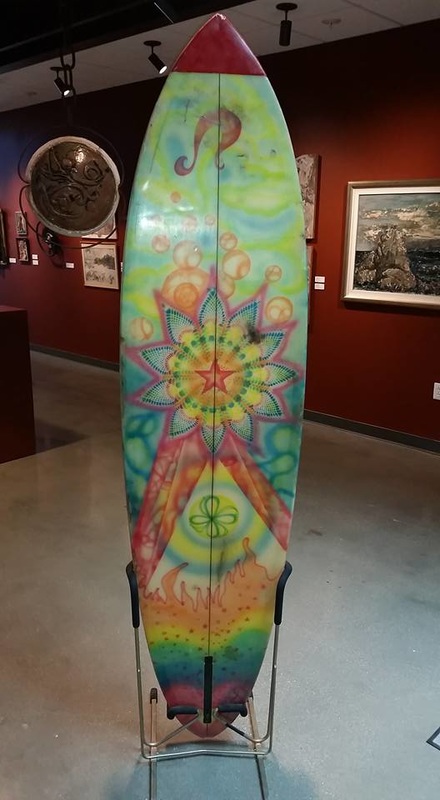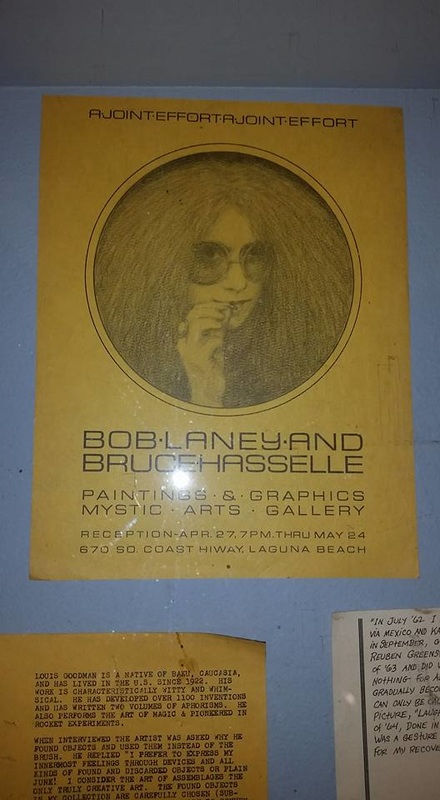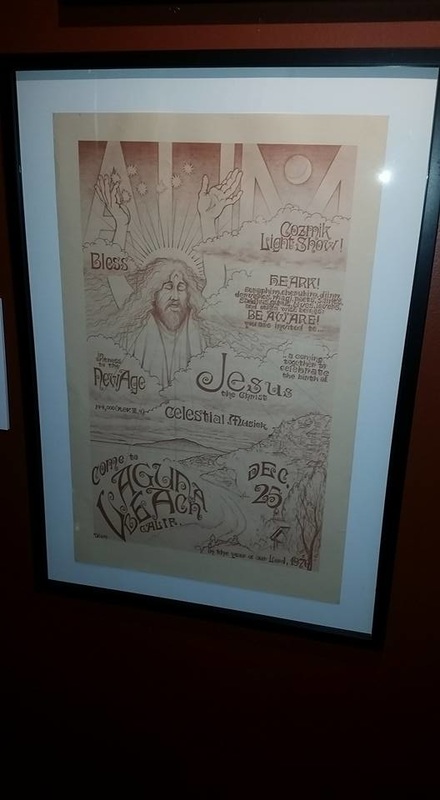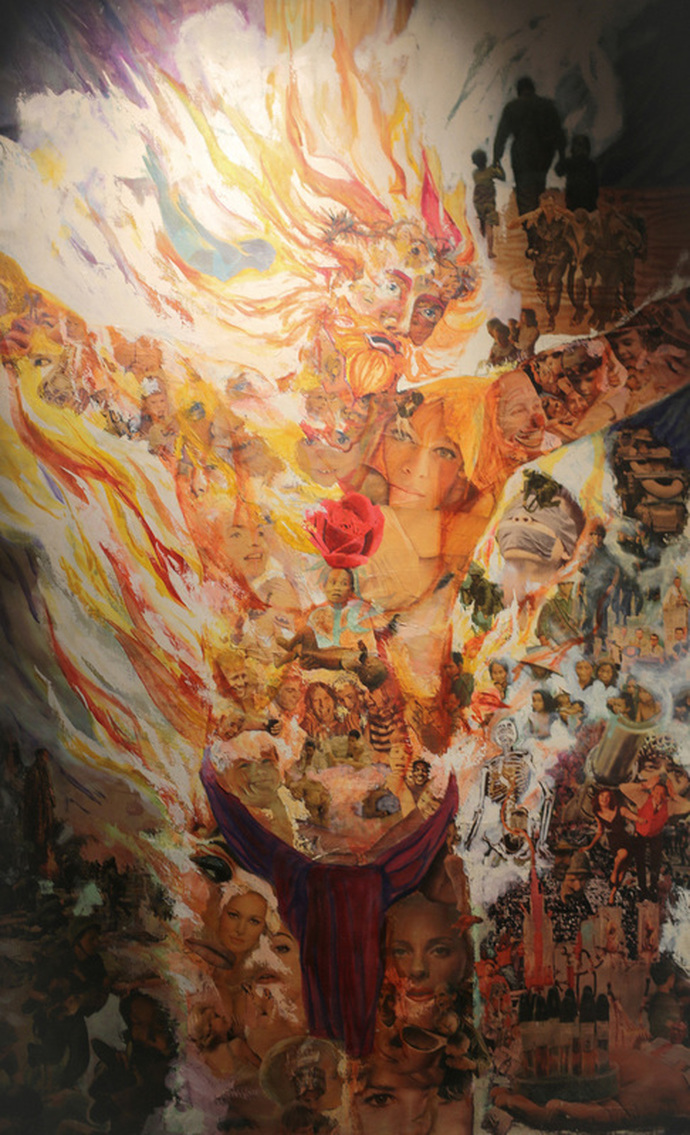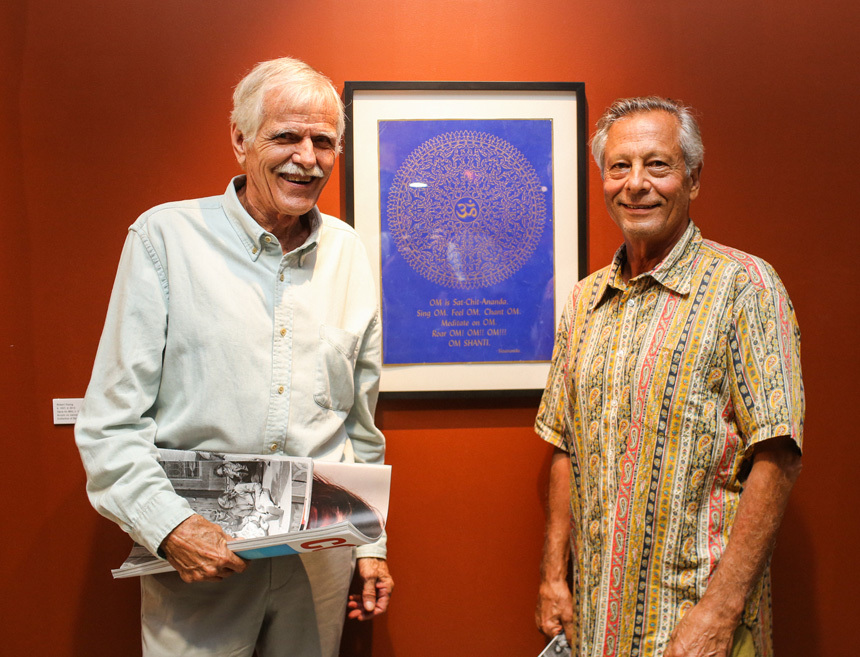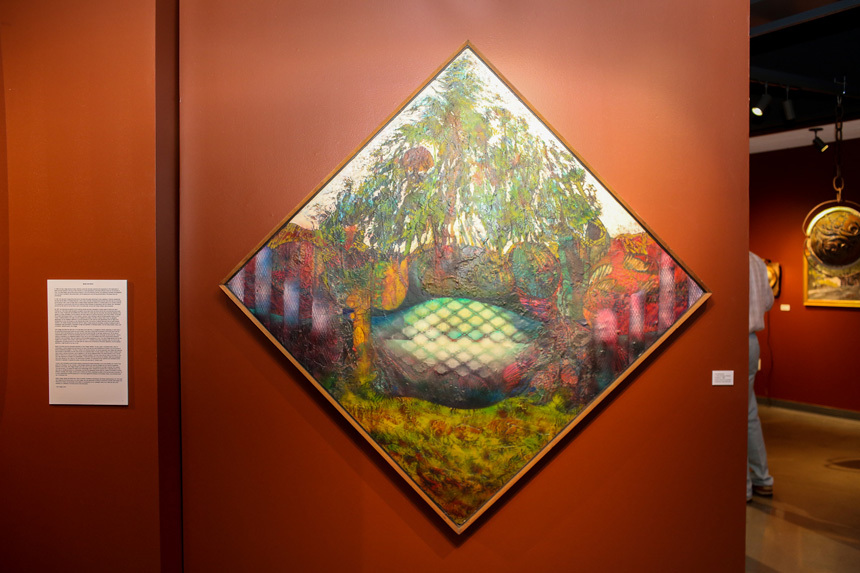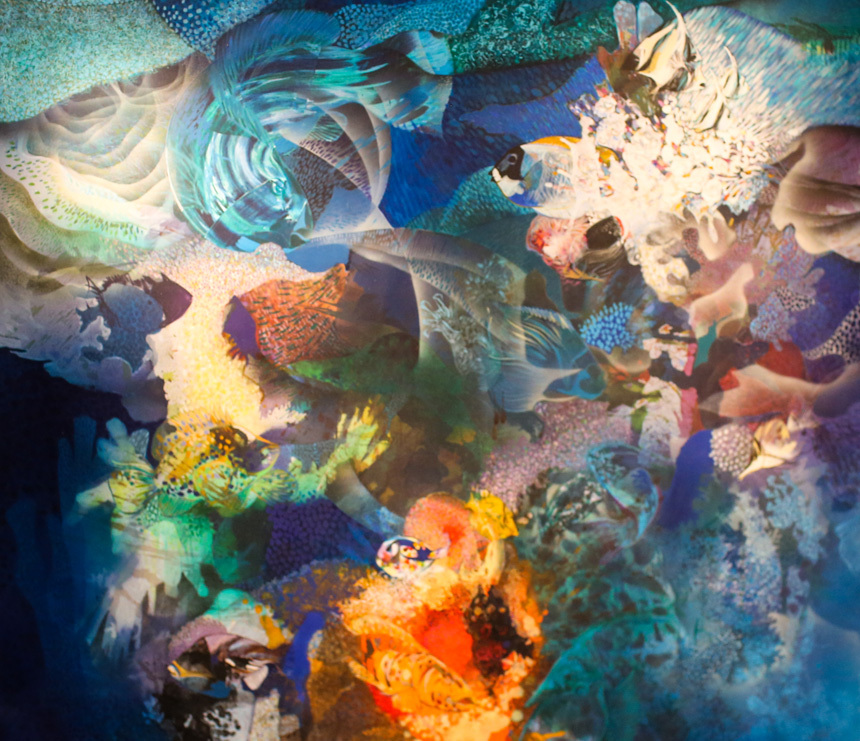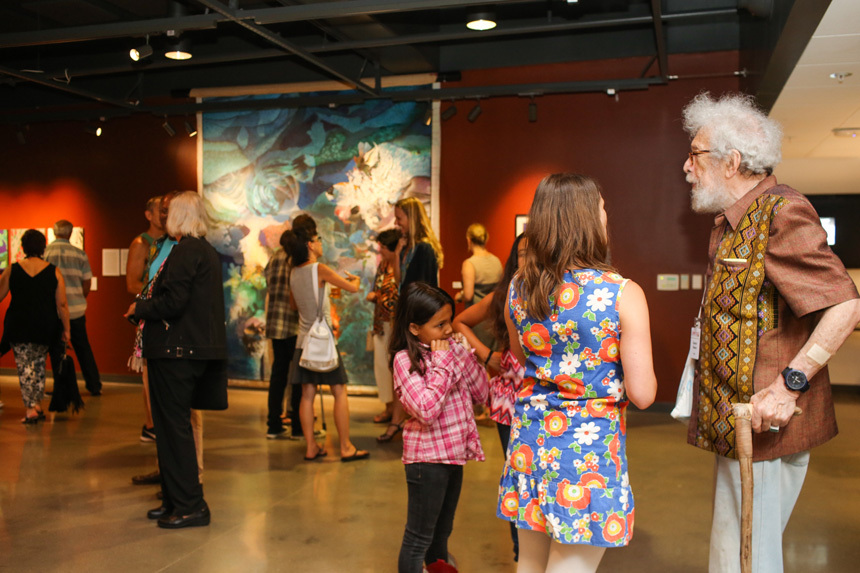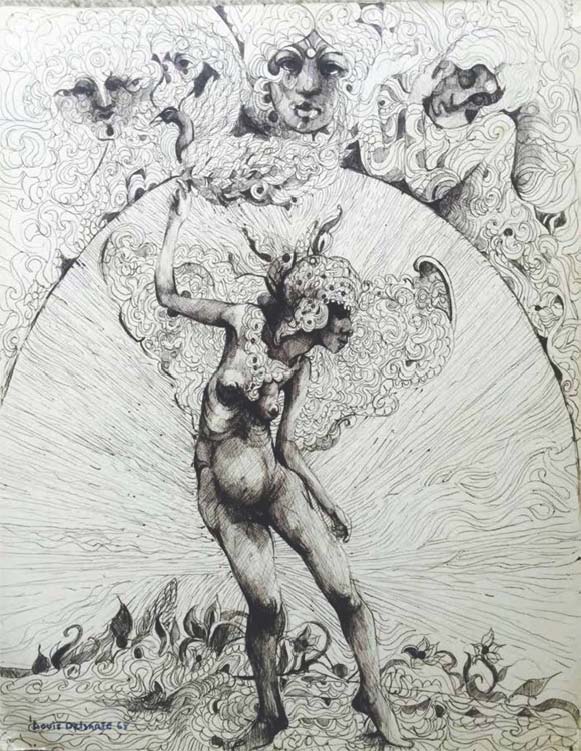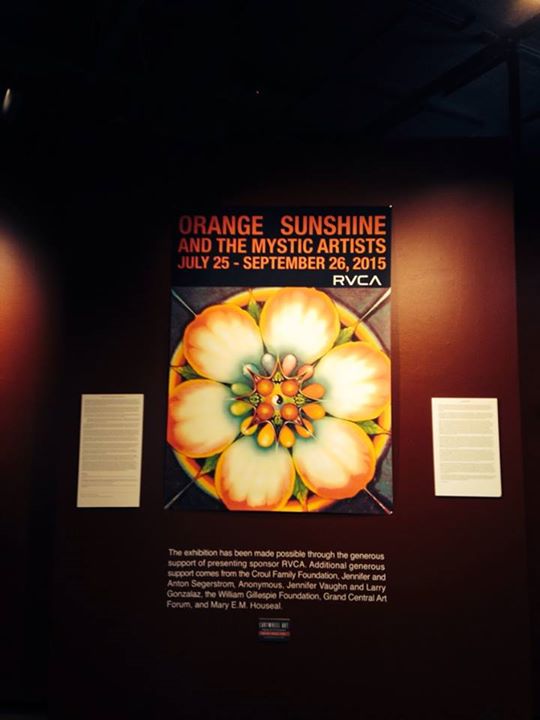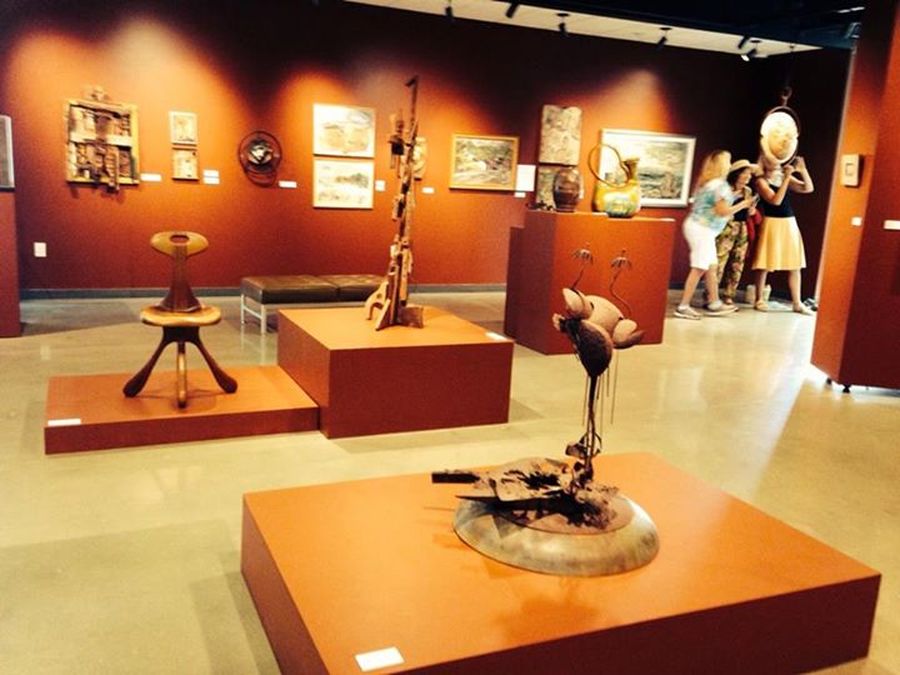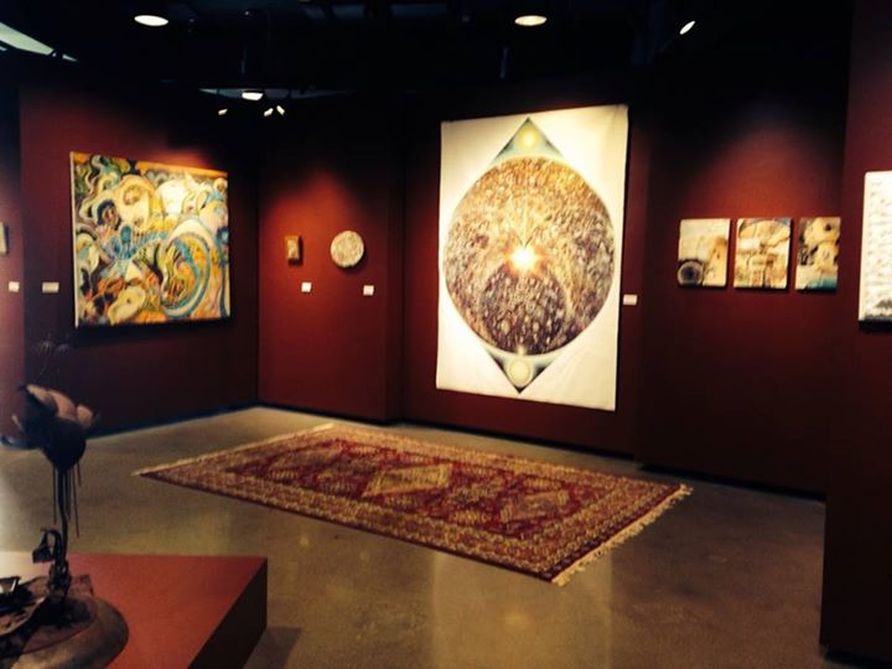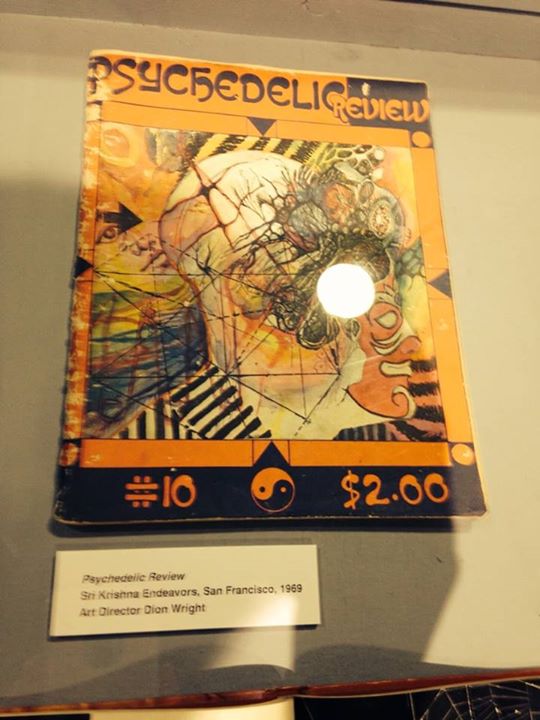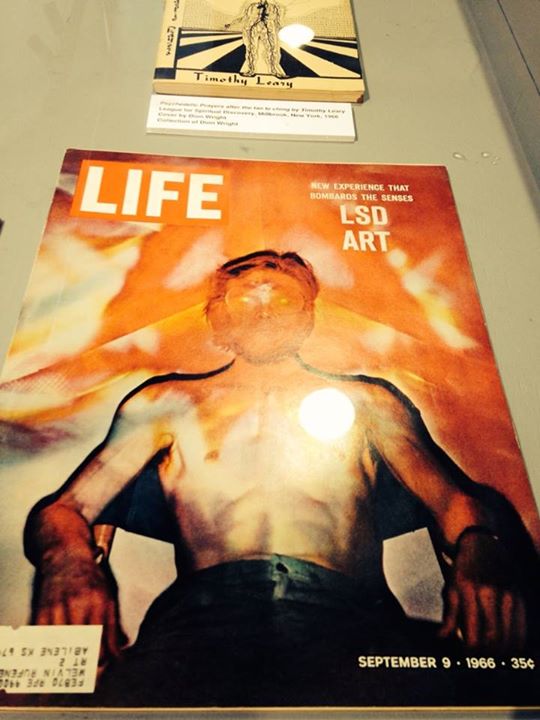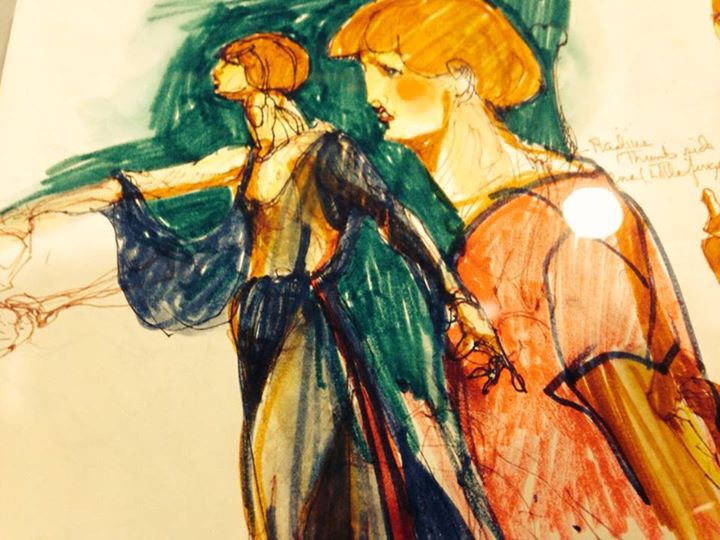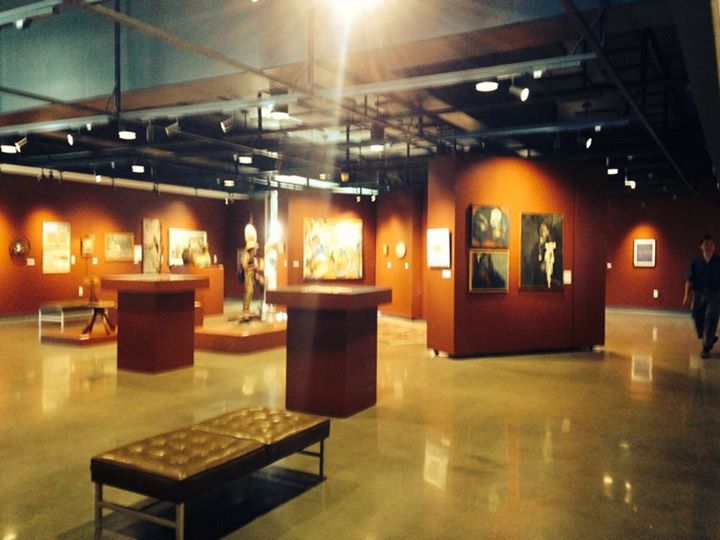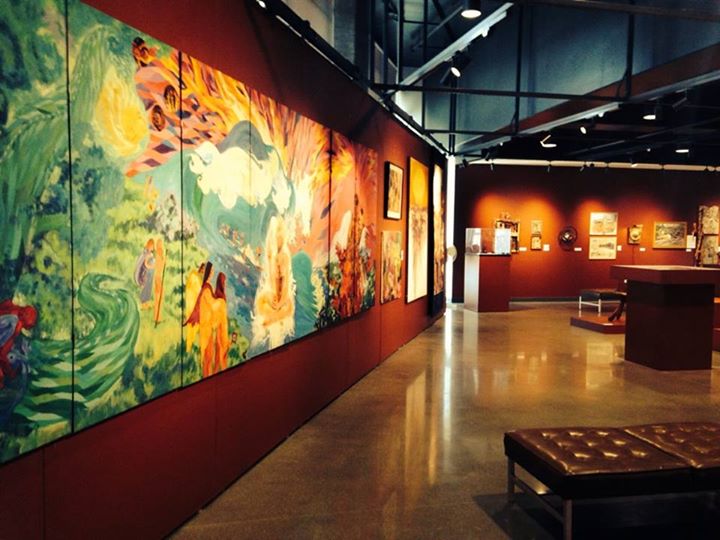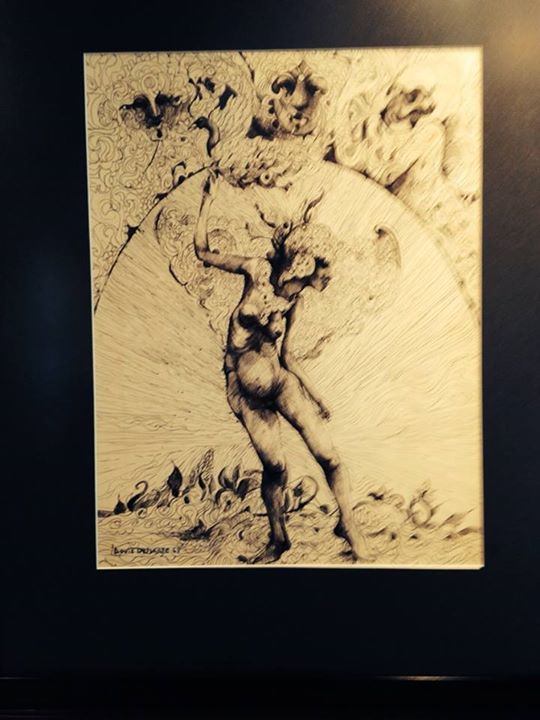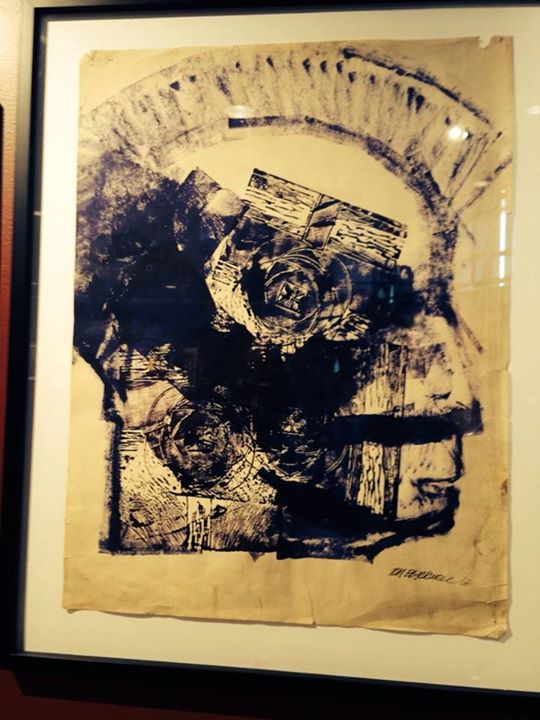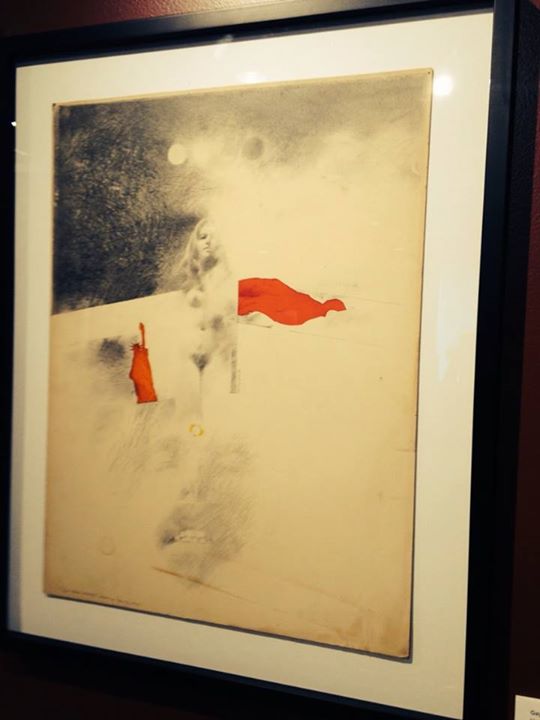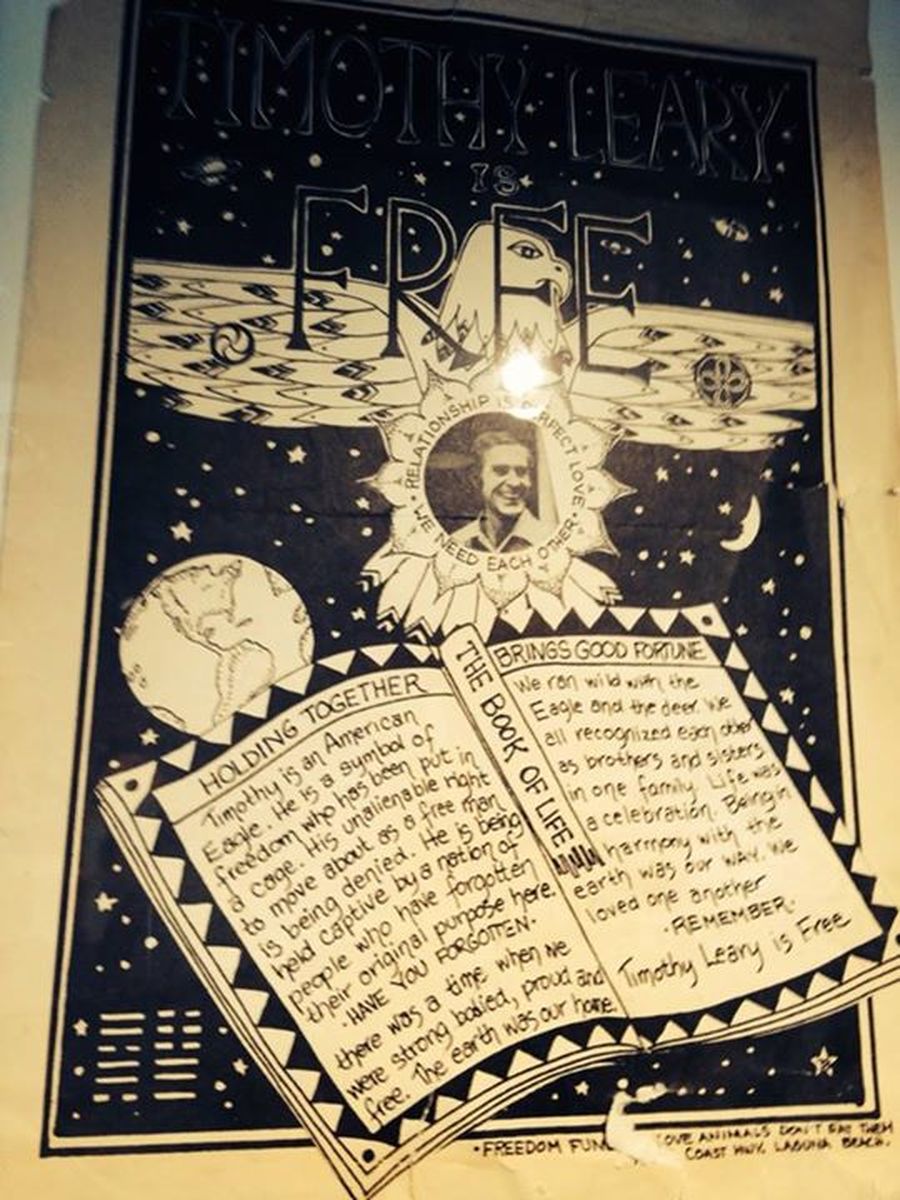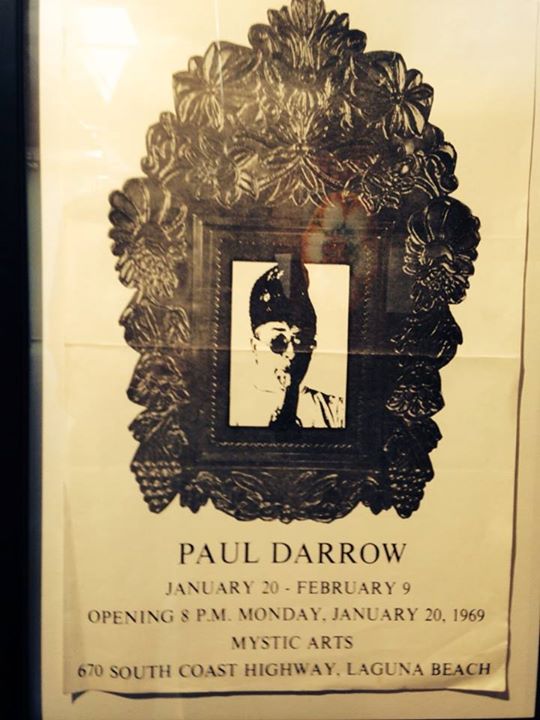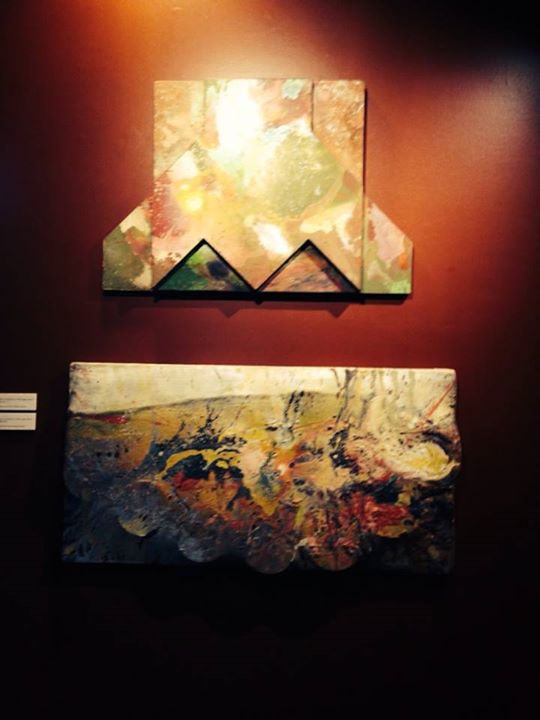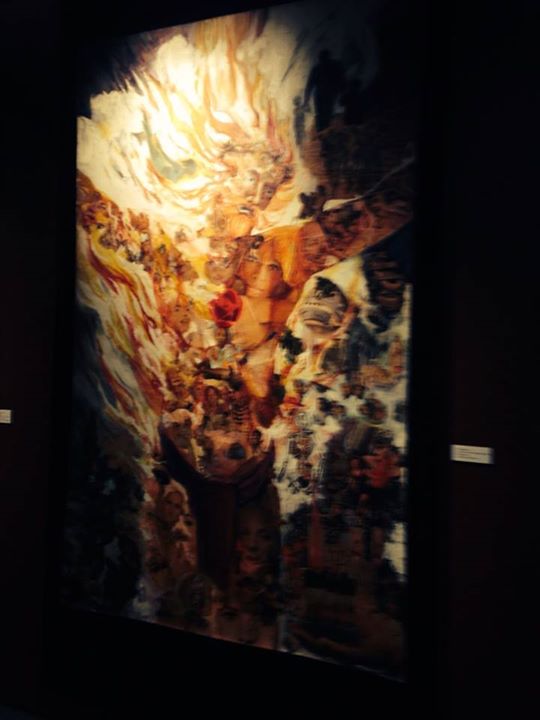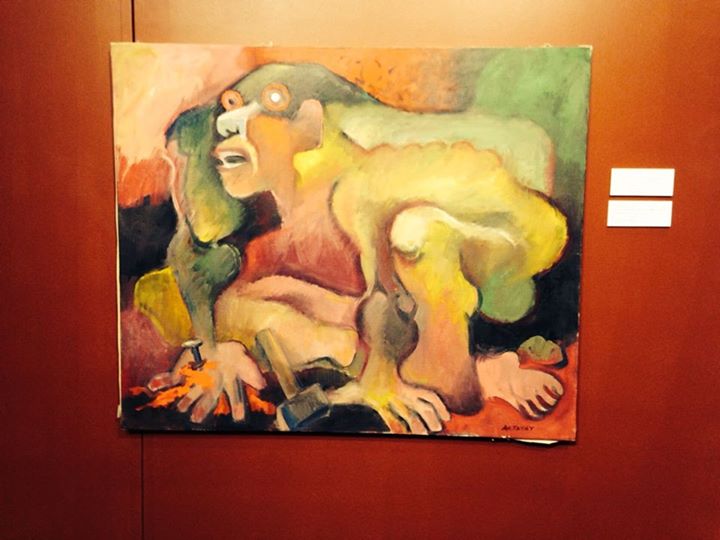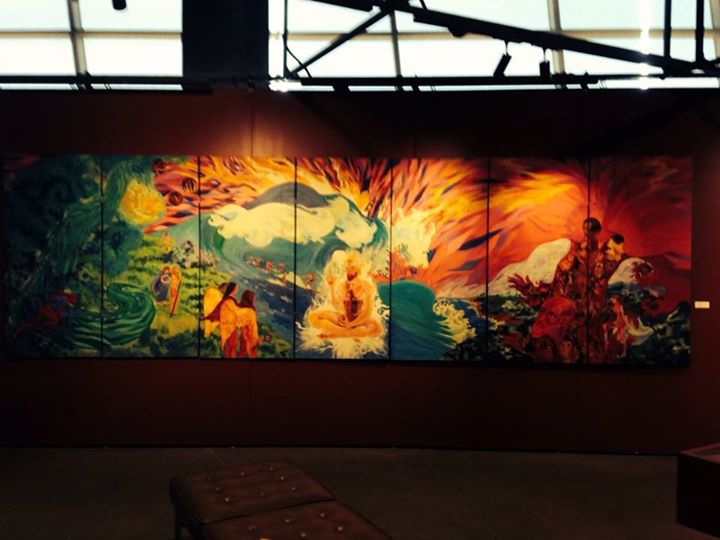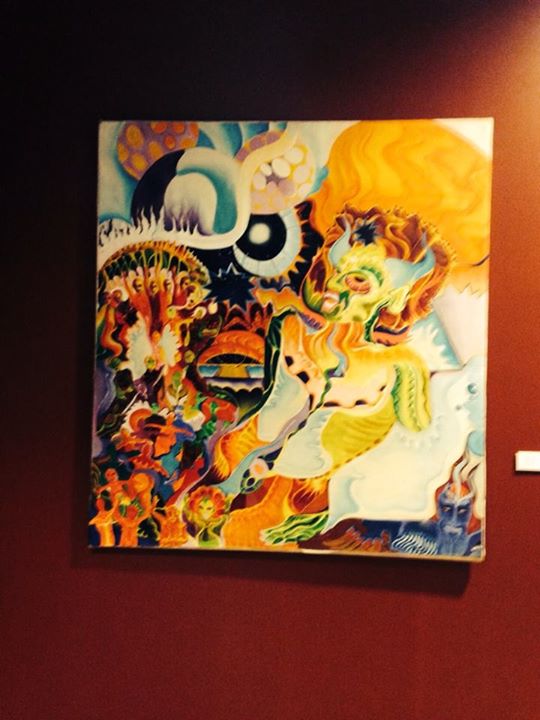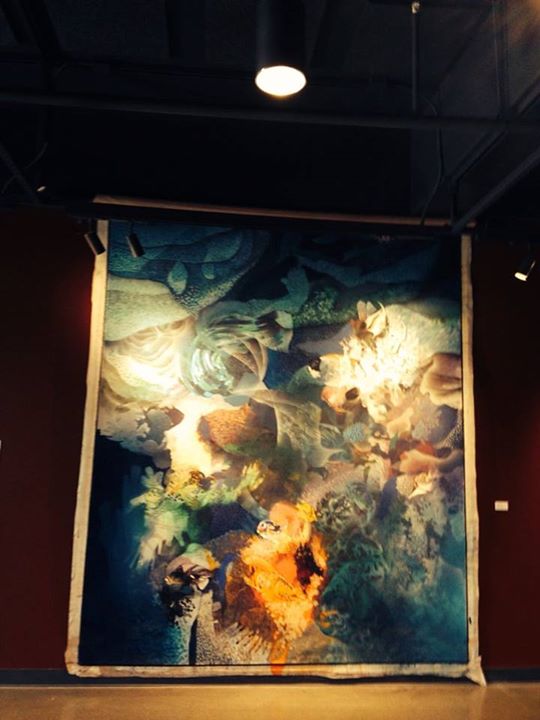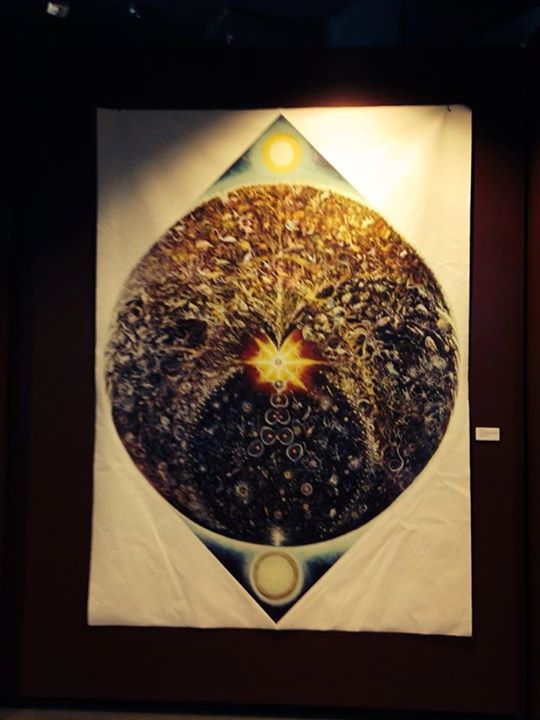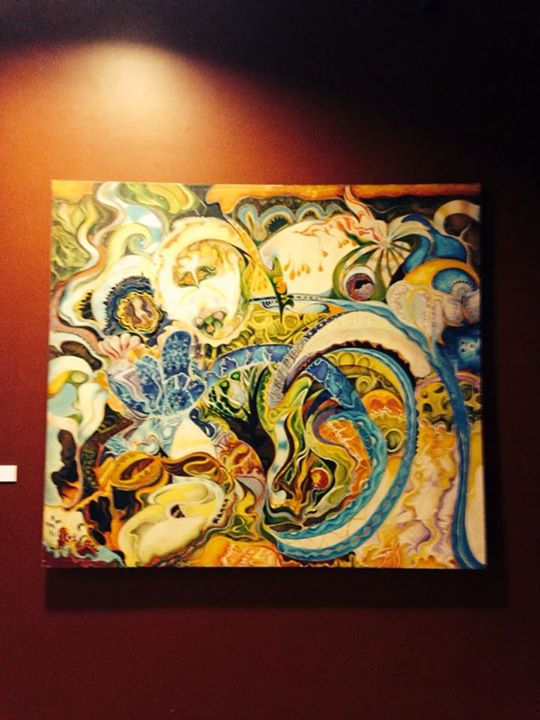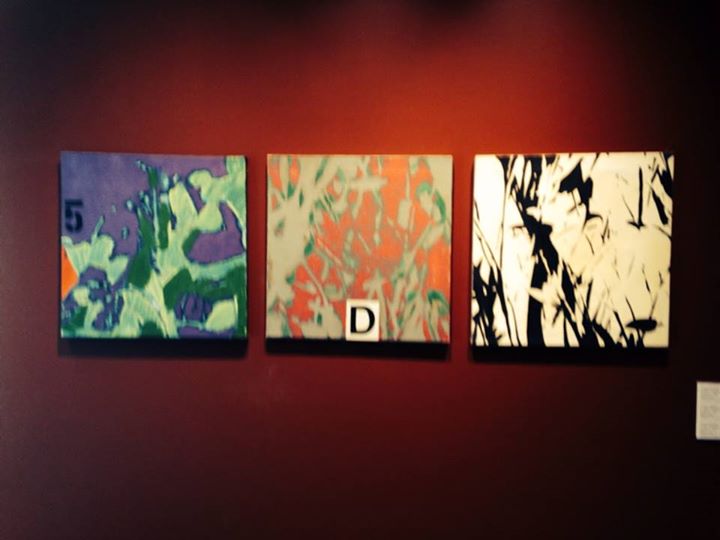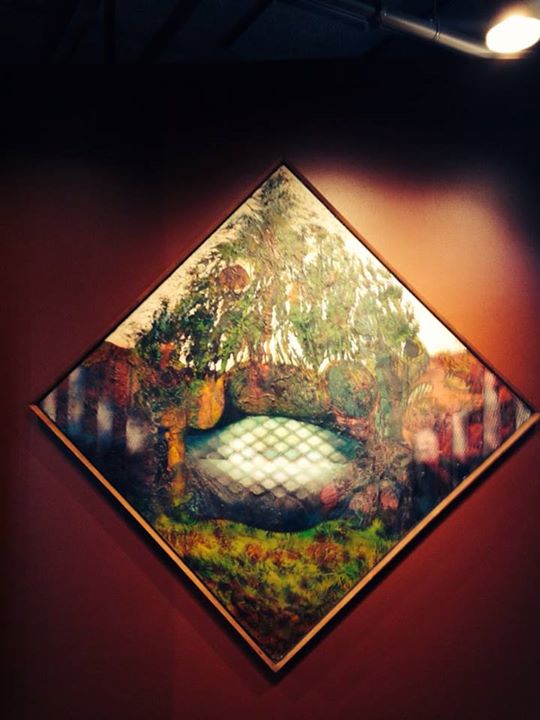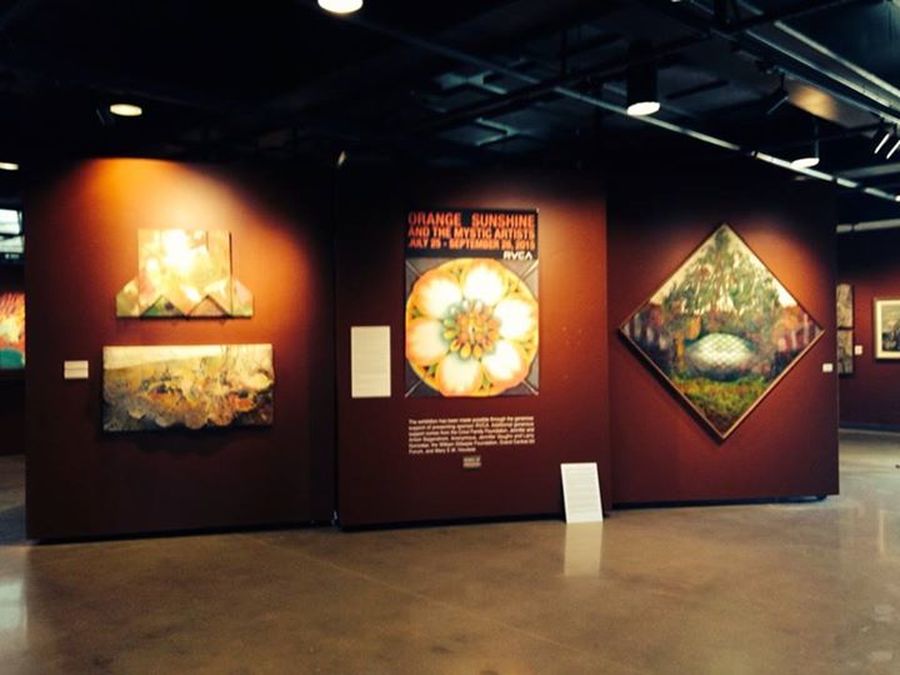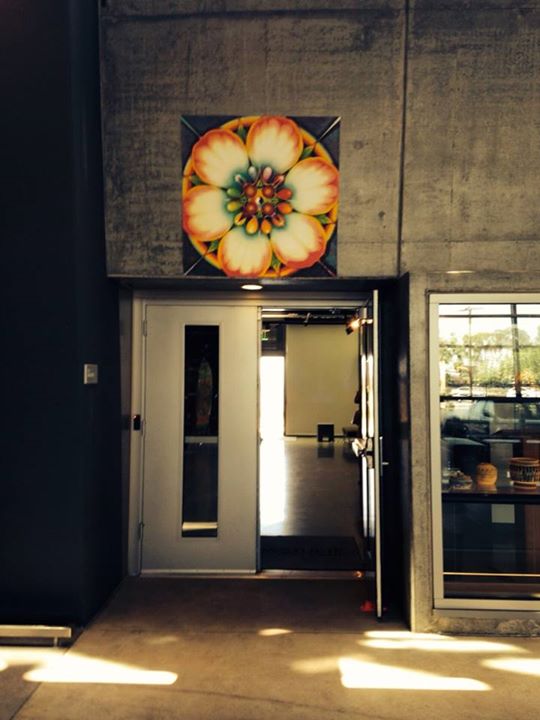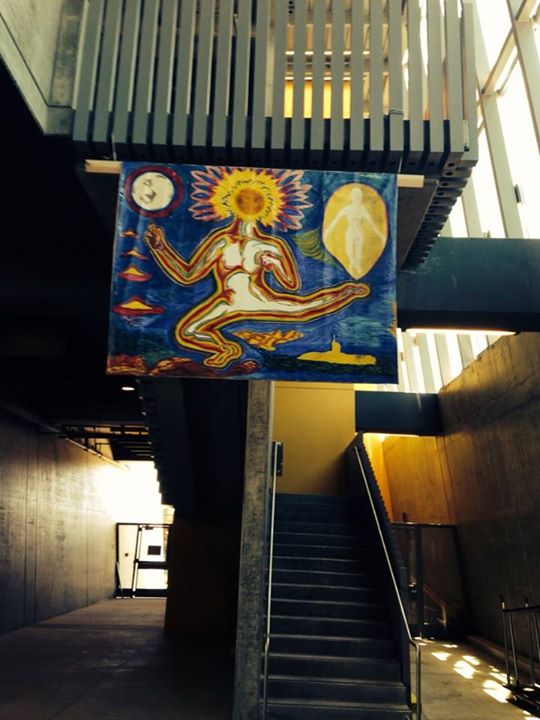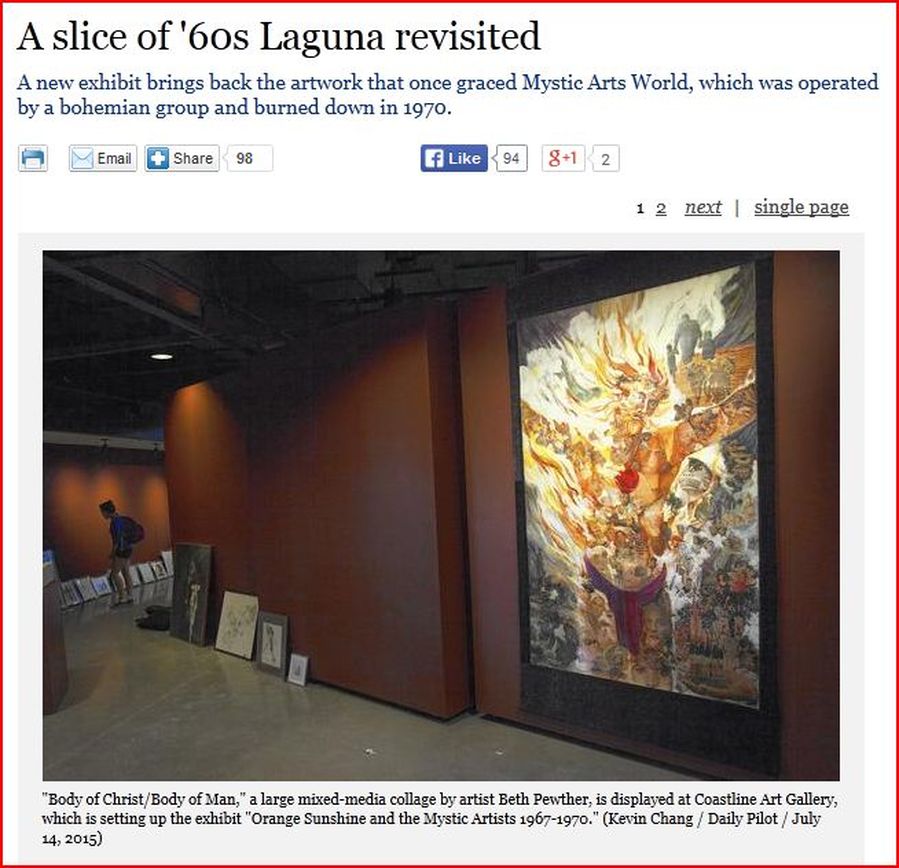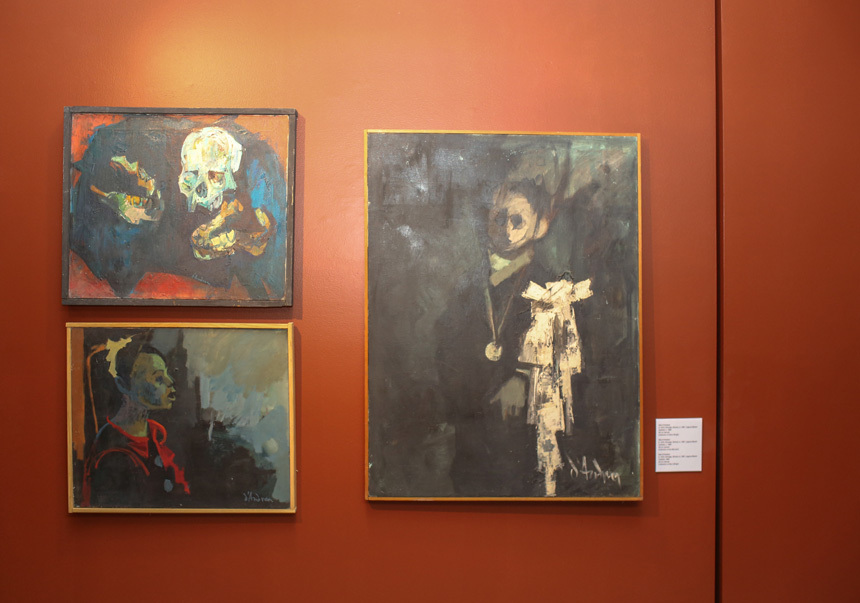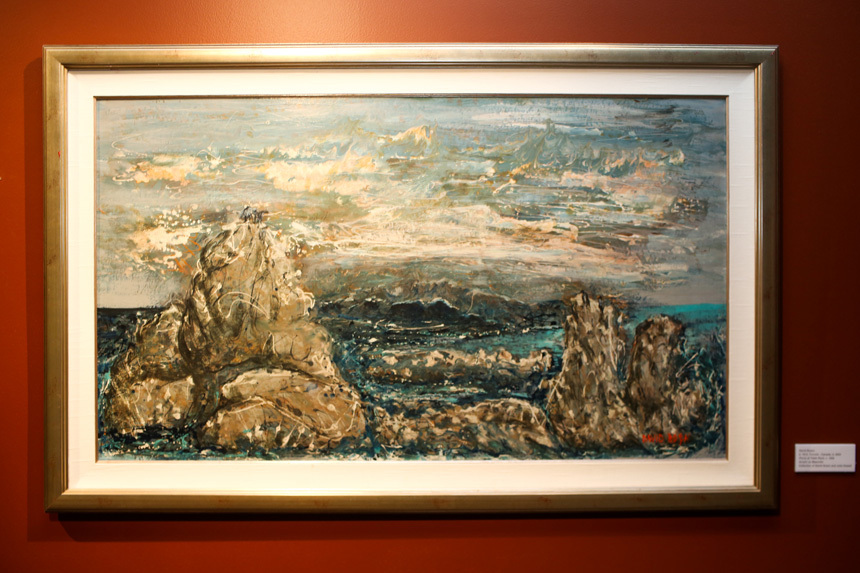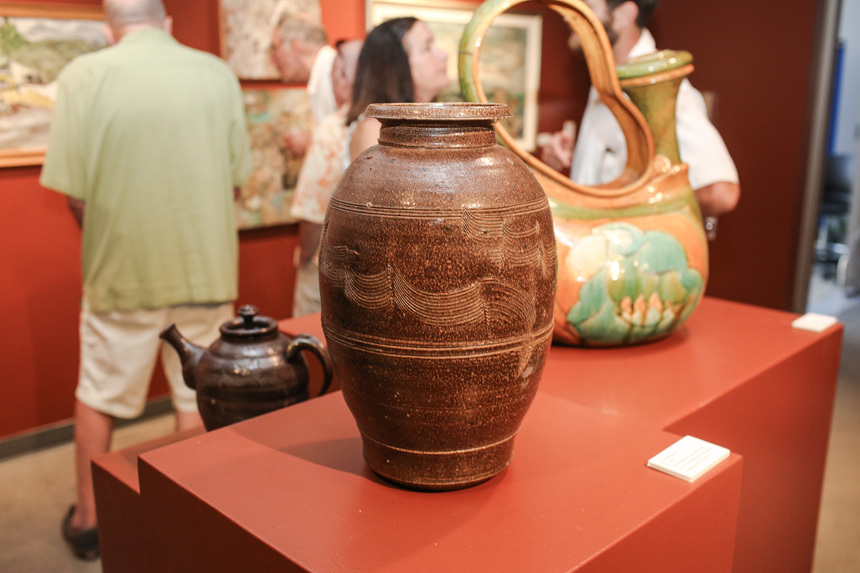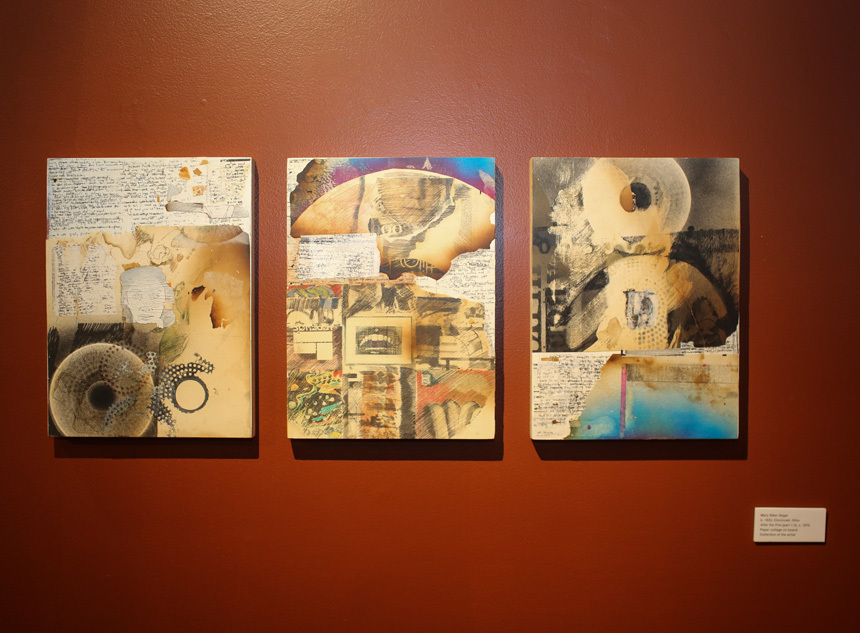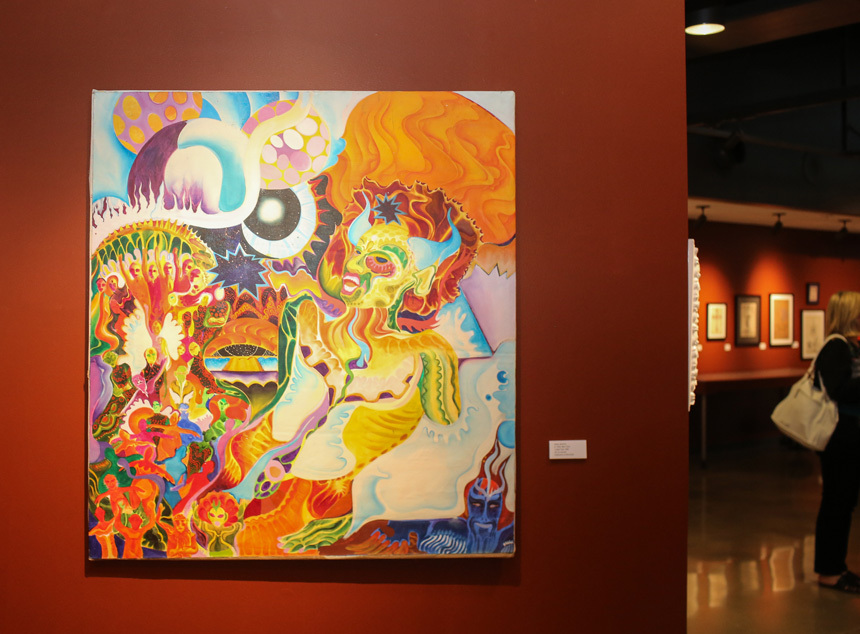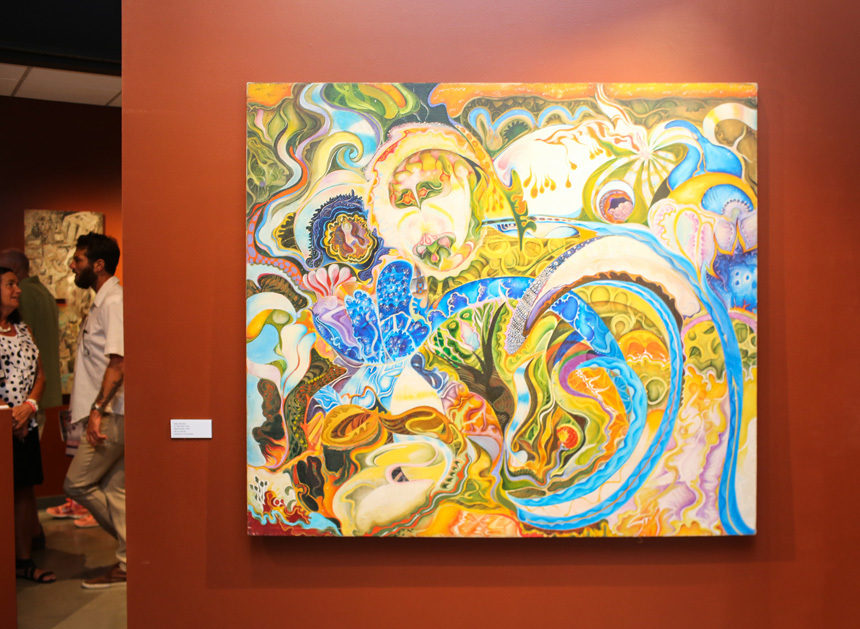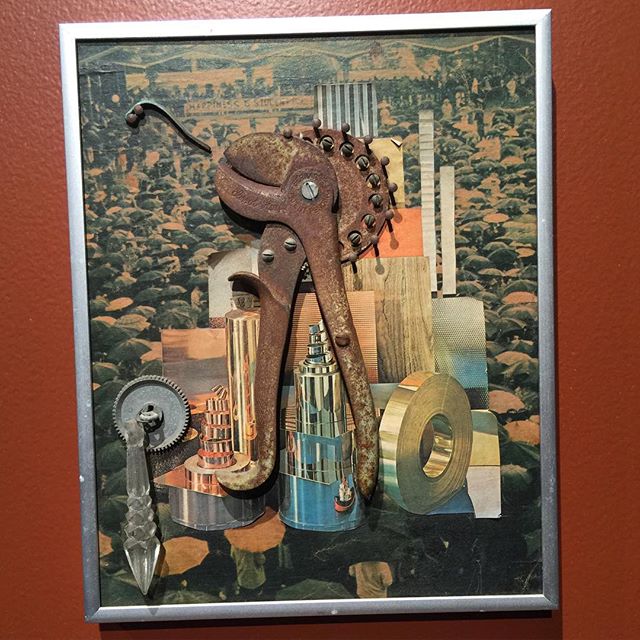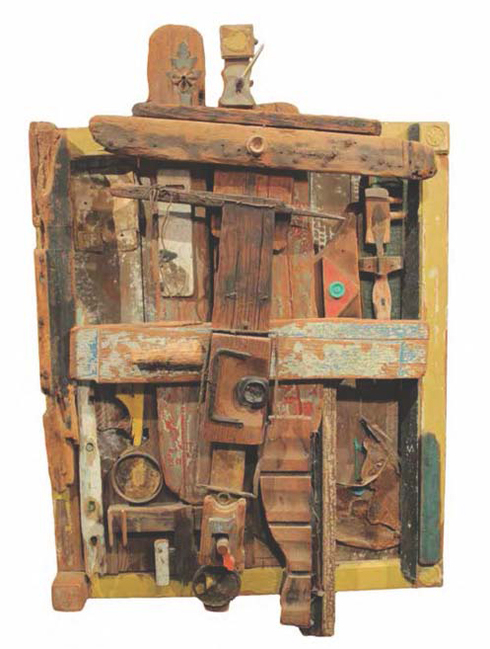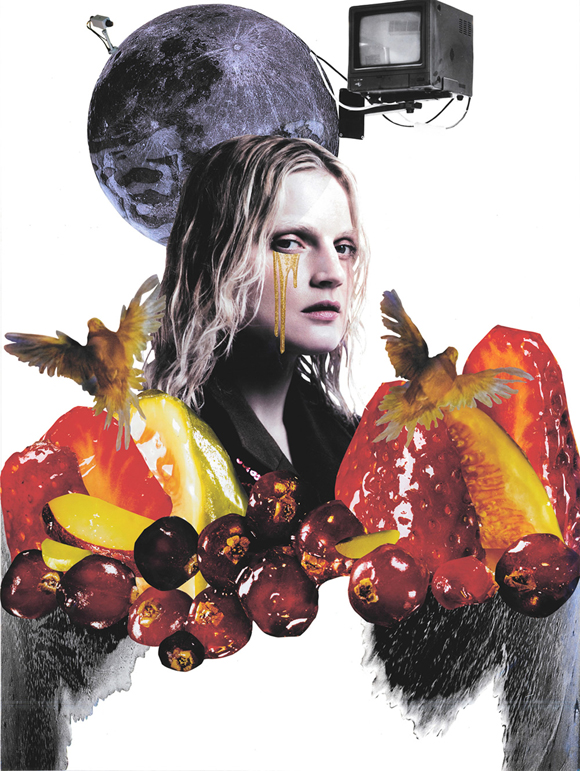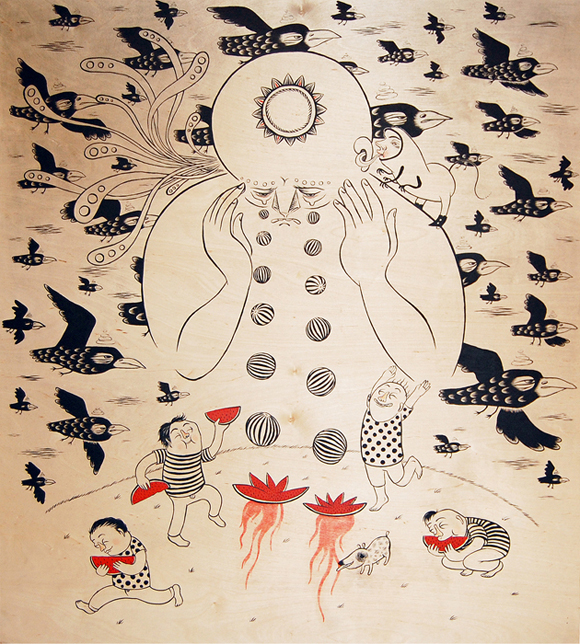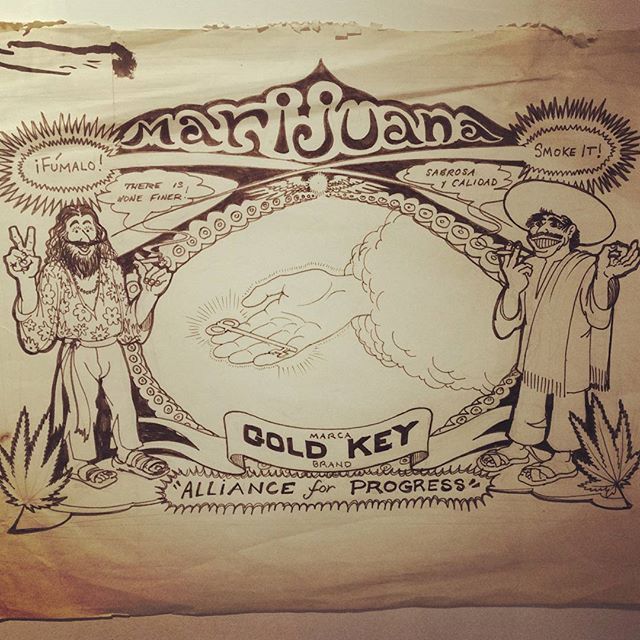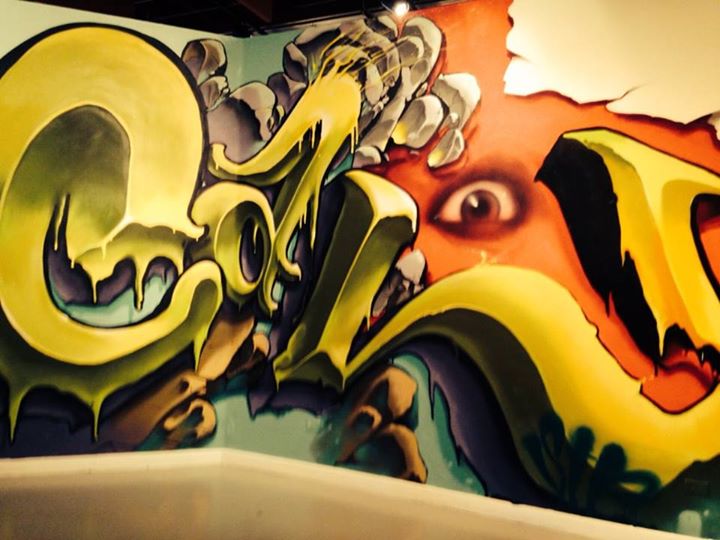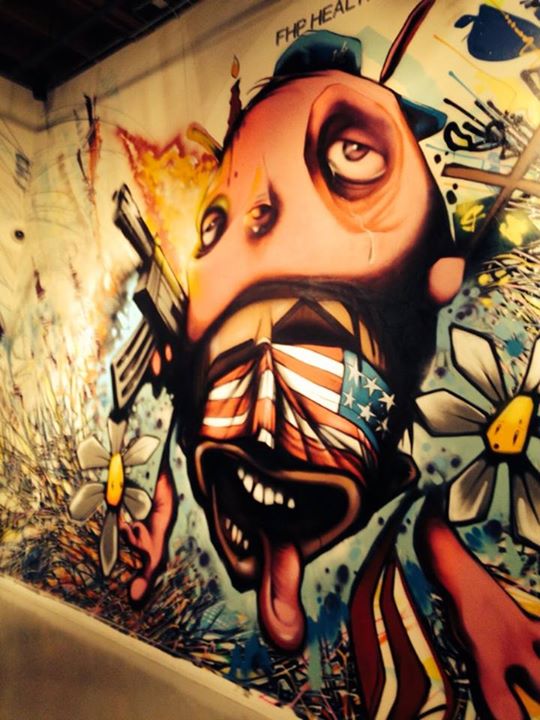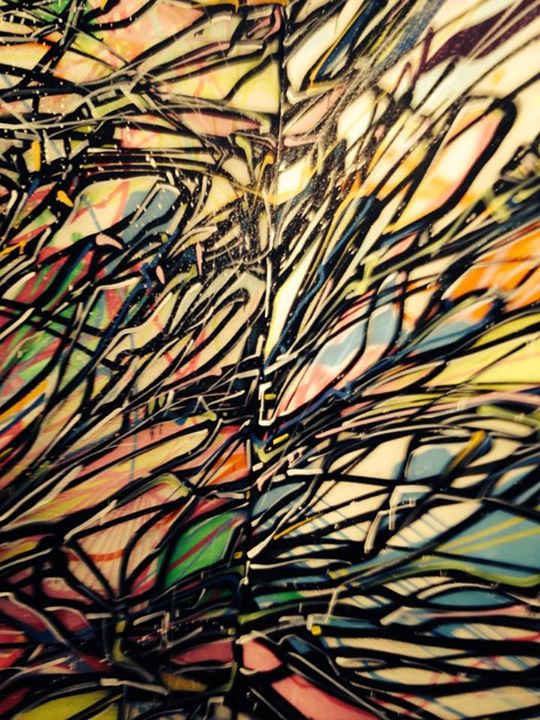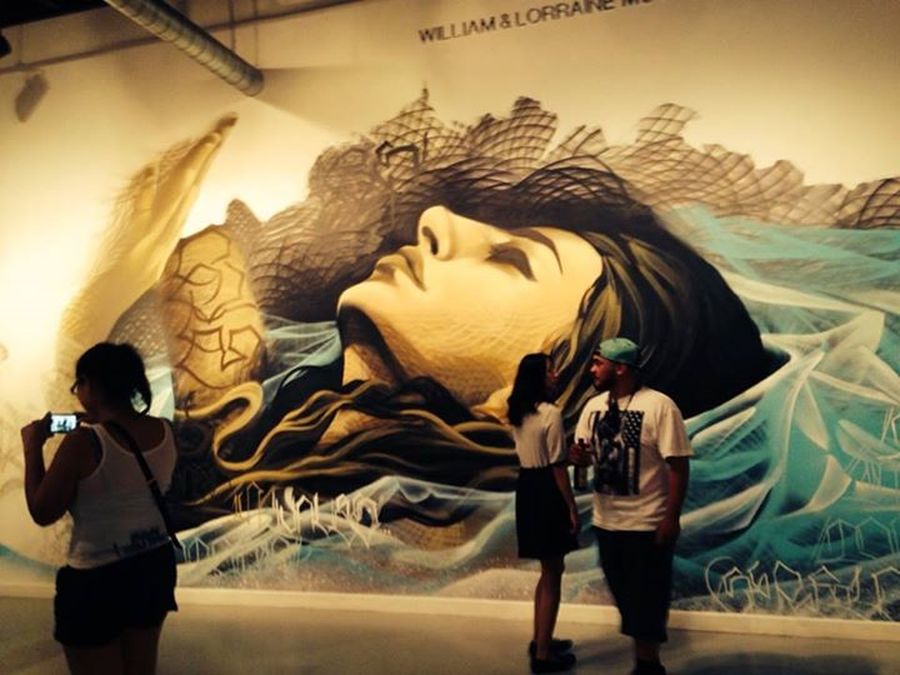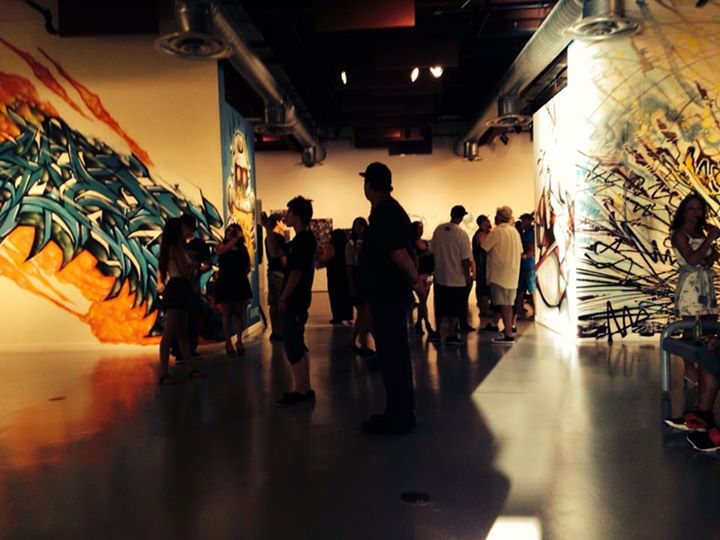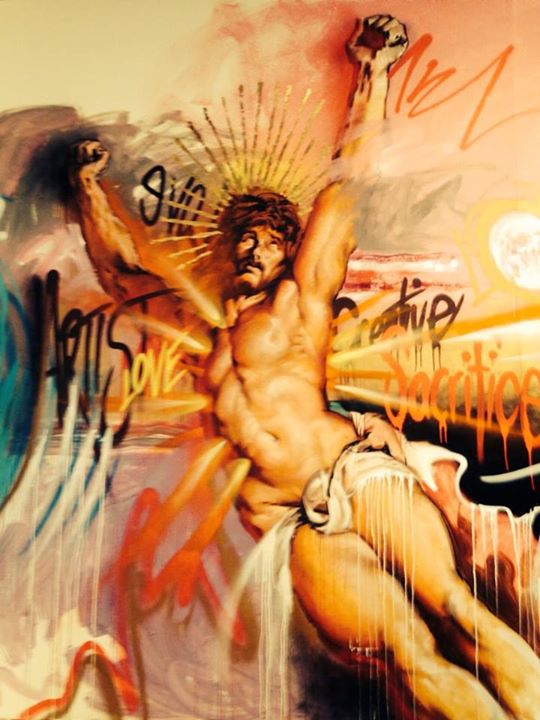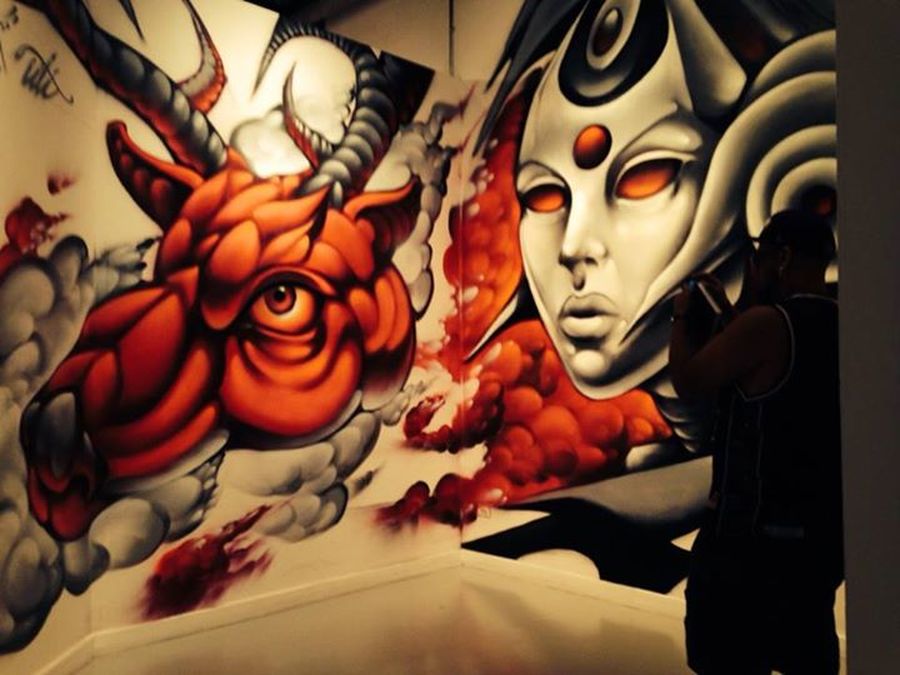OS Artshow
While it lasted, Mystic Arts World was a focus of seminal, sometimes cosmological, and always super-conscious Art. This writer was dragooned into service early-on by John Griggs, who was determined to feature my Taxonomic Mandala within Mystic Arts World, and feature me personally as the maitre d’ of presenting ‘far out, outtasight’ works of Art. What you see in this exhibition is a collection of surviving works of that wild period. --Dion Wright
Find curator Dion Wright's Book here: http://www.dionwright.com/#!books/cnec
Find curator Dion Wright's Book here: http://www.dionwright.com/#!books/cnec
Artshow Press
http://www.dionwright.com/#!news/c1pz
http://www.dionwright.com/#!news/c1pz
July 24, 2015 - Coastline Community College presents an exhibition examining psychedelic art produced in Orange County. "Orange Sunshine and the Mystic Artists, 1967-1970," opening Monday and running through Sept. 26 at Coastline Art Gallery in Newport Beach, will display artwork ranging from Beat assemblage to craft and figuration created by Mystic Artists, a loosely organized group of artists interested in alternative culture.
Mystic Artists congregated and exhibited their art at Mystic Arts World, a psychedelic emporium in Laguna Beach, which operated from 1967 to 1970. The collection curated by Bolton Colburn will include art that was displayed at Mystic Arts World and work by Mystic Artists dating from roughly the same time period. The gallery also will feature cultural artifacts, photographs, posters, fliers and other material relating to Mystic Arts World.
Mystic Artists congregated and exhibited their art at Mystic Arts World, a psychedelic emporium in Laguna Beach, which operated from 1967 to 1970. The collection curated by Bolton Colburn will include art that was displayed at Mystic Arts World and work by Mystic Artists dating from roughly the same time period. The gallery also will feature cultural artifacts, photographs, posters, fliers and other material relating to Mystic Arts World.
Let the Orange Sunshine In with the Mystic Artists!
ORANGE SUNSHINE / MYSTIC ARTS WORLD ARTSHOW 2015
MYSTIC ARTISTS
Artists who exhibited at the Mystic Arts World (MAW) included Carol Abrams, Isaac Abrams, Richard Aldcroft, Roger Armstrong, Jan Peters Babcock, Tom Blackwell, Mark Blumenfeld, Robert Ronnie Branaman, Jane Callender, Italo d’Andrea, Paul Darrow, Louis Delsarte, Khigh Alx Dhiegh, Philip Freeman, Ray Friesz, Louis Goodman, Reuben Greenspan, Bill Groves, George Herms, R.L. “Holly” Hollingsworth, Robert Jocko Johnson, Julie Kahn, Steve Kensrue, Karen Kozlow, Terry Lamb, Bob Laney, Ed Lutz, Robert McCarron, Joe Miller, Dwight Morouse, Jim Nussbaum, Harve Parks, Beth Pewther, Noble Richardson, Larry Rink, David Rosen, R.L. Bob Ross, Mary Riker Segal, Gayl Stenlund, Gerd Stern, Jon Stokesbary, Wiktor Sudnik, John Upton, Gordon Wagner, Andy Wing, Dion Wright, and Bob Young. A small section of the exhibition will include the posters and graphics that Bill Ogden did for the Brotherhood and Mystic Arts World.
The panel moderated by the original Mystic Arts World Gallery Director, Dion Wright, will include many of the people involved with the Brotherhood and MAW, on Saturday, July 25 at 6 p.m.
The public opening reception for Orange Sunshine and the Mystic Artists will be on
Sept 2, when Nicholas Schou, author of Orange Sunshine: The Brotherhood of Eternal Love and Its Quest to Spread Peace, Love, and ACID to the World, will talk about his book.
The exhibition runs from July 26 – September 26 at Coastline Art Gallery, Coastline Community College,
1515 Monrovia Avenue, Newport Beach.
https://books.google.com/books?id=OmDd9XKZ6hoC&pg=PA303&lpg=PA303&dq=orange+sunshine+and+the+mystic+artists&source=bl&ots=JW7E3abZzz&sig=kIgRIhDO67wbPjqgZbEDWBu069E&hl=en&sa=X&ved=0CCkQ6AEwAjgKahUKEwjzv8n2s4HHAhXCKx4KHWiQAFE#v=onepage&q&f=false
ORANGE SUNSHINE / MYSTIC ARTS WORLD ARTSHOW 2015
MYSTIC ARTISTS
Artists who exhibited at the Mystic Arts World (MAW) included Carol Abrams, Isaac Abrams, Richard Aldcroft, Roger Armstrong, Jan Peters Babcock, Tom Blackwell, Mark Blumenfeld, Robert Ronnie Branaman, Jane Callender, Italo d’Andrea, Paul Darrow, Louis Delsarte, Khigh Alx Dhiegh, Philip Freeman, Ray Friesz, Louis Goodman, Reuben Greenspan, Bill Groves, George Herms, R.L. “Holly” Hollingsworth, Robert Jocko Johnson, Julie Kahn, Steve Kensrue, Karen Kozlow, Terry Lamb, Bob Laney, Ed Lutz, Robert McCarron, Joe Miller, Dwight Morouse, Jim Nussbaum, Harve Parks, Beth Pewther, Noble Richardson, Larry Rink, David Rosen, R.L. Bob Ross, Mary Riker Segal, Gayl Stenlund, Gerd Stern, Jon Stokesbary, Wiktor Sudnik, John Upton, Gordon Wagner, Andy Wing, Dion Wright, and Bob Young. A small section of the exhibition will include the posters and graphics that Bill Ogden did for the Brotherhood and Mystic Arts World.
The panel moderated by the original Mystic Arts World Gallery Director, Dion Wright, will include many of the people involved with the Brotherhood and MAW, on Saturday, July 25 at 6 p.m.
The public opening reception for Orange Sunshine and the Mystic Artists will be on
Sept 2, when Nicholas Schou, author of Orange Sunshine: The Brotherhood of Eternal Love and Its Quest to Spread Peace, Love, and ACID to the World, will talk about his book.
The exhibition runs from July 26 – September 26 at Coastline Art Gallery, Coastline Community College,
1515 Monrovia Avenue, Newport Beach.
https://books.google.com/books?id=OmDd9XKZ6hoC&pg=PA303&lpg=PA303&dq=orange+sunshine+and+the+mystic+artists&source=bl&ots=JW7E3abZzz&sig=kIgRIhDO67wbPjqgZbEDWBu069E&hl=en&sa=X&ved=0CCkQ6AEwAjgKahUKEwjzv8n2s4HHAhXCKx4KHWiQAFE#v=onepage&q&f=false
Mystic Arts Retrospective Show 2015
Rick Griffin, Terry Lamb, Peter Darrow, Dion Wright, and more...
Opening reception Saturday July 25, 2015, Coastline College,
1515 Monrovia Ave, Newport Beach CA.
Mark your Calendar for this New Free historic event.
Art exhibit to feature Mystic Arts World: Their Mystic Artists created “works of that wild period”
http://stunewslaguna.com/component/content/article/16038-art-exhibit-to-feature-mystic-arts-world-040715
Orange Sunshine and the Mystic Artists, 1967-1970, is the first exhibition to examine the art produced by the Mystic Artists. There will be a special opening reception and panel discussion on Saturday, July 25. Mark your calendar!
Mystic Arts World (1967-1970), a head shop in Laguna Beach, was ground zero for psychedelic culture in southern California during the late 1960s and early 1970s. It was there that a loosely organized group of artists interested in alternative culture, mystical experience and the transformation of society, “The Mystic Artists”, congregated and exhibited their art. Their artistic expression ranged from Beat assemblage to figuration to psychedelic art.
http://www.cartwheelart.com/2015/07/23/let-the-orange-sunshine-in-with-the-mystic-artists/
“Orange Sunshine and the Mystic Artists,1967-1970″, opening saturday night at Coastline Art Gallery, is the first exhibition to examine psychedelic art produced in Orange County by the Mystic Artists, a loosely organized group of artists interested in alternative culture, mystical experience, and the transformation of society. These artists congregated and exhibited their art at Mystic Arts World, a psychedelic emporium in Laguna Beach, which existed from 1967 to 1970. The shop –which closed due to a fire–was ground zero for hippie culture in Southern California during the late 1960s and early 1970s, and rich artistic and perceptual experimentation grew out of this burgeoning psychedelic culture.
Curator for the exhibition Bolton Colborn says:
Nick Schou’s book Orange Sunshine was a revelation. I had no idea of the breath and depth of what occurred in Laguna Beach during this time. I thought it was culturally significant and wanted to see what the visual side of Nick’s story looked like. I was intrigued by what and who was showed at Mystic Arts World and why it had been swept under the rug.
The exhibition, running from July 27 to September 26, 2015, in the art gallery at Coastline Community College in Newport Beach, includes both art that was exhibited at Mystic Arts World and, out of necessity, work by Mystic Artists dating from roughly the same time period. Artistic expression ranges from Beat assemblage (Jane Callender, George Herms, Paul Darrow, Louis Newman, and Andy Wing), to Visionary (Carol Abrams, Tom Blackwell, Robert Branaman, and Dion Wright) to craft and figuration (Roger Armstrong, Italo d’Andrea, Robert “Jocko” Johnson, Beth Pewther, David Rosen, and Jon Stokesbary). There will also be a digital projection of the work of Richard Aldcroft, who once installed a psychedelic light projection in the gallery.
The sculptures of Robert “Jocko” Johnson, donated by Allan Seymour will also be on display in the exhibition. Allan Seymour, an orange county resident and historian who is deeply connected to the surf culture, said that the exhibit evokes memories beyond Mystic Arts World. He explained to Michael Miller of the Daily Pilot that his now-deceased friend cottoned to the dusty, rural vibe of southern orange county in the 1960’s and left subsequently as the area grew more suburban.
“He moved up to Twenty Nine Palms when it became too civilized here with too many rules. He always missed the living down here.”
In addition, the exhibition features cultural artifacts that provide context for the time period. Dion Wright, who was the curator of the gallery program at Mystic Arts World and collaborated on the exhibition, provided a treasure trove of photographs, posters, exhibition announcements, flyers, and other material relating to Mystic Arts World.
Colborn says while his goal was to give people a glimpse into the visual culture of the era,
We are not trying to recreate MAW, but are trying to evoke it .
Colborn continued:
Today there is a built-in cultural inclination to dismiss works of art that make reference to use of psychedelic substances, While the reasons are many, including the fear of promoting the use of LSD, the attitude is a bit like throwing the baby out with the bathwater. The search for self—the ultimate quest of the Baby Boomer generation—set the stage in the 1960s for one of the most remarkably open-minded and culturally fertile periods of the century, and mindaltering chemicals were a catalyst in making that possible. Given the level of fear and control prevalent in our culture today, it is worth taking a look at the cauldron of art and ideas arising out of the Mystic Arts World. The artists’ countercultural activity and mystical quest can still inspire us today in our thinking about personal and global transformation.
Artists who exhibited in the Mystic Arts World included Carol Abrams, Isaac Abrams, Richard Aldcroft, Roger Armstrong, Jan Peters Babcock, Tom Blackwell, Mark Blumenfeld, Robert Ronnie Branaman, Jane Callender, Italo d’Andrea, Paul Darrow, Louis Delsarte, Khigh Alx Dhiegh, Philip Freeman, Ray Friesz, Louis Goodman, Reuben Greenspan, Bill Groves, George Herms, R.L. “Holly” Hollingsworth, Robert Jocko Johnson, Julie Kahn, Steve Kensrue, Karen Kozlow, Terry Lamb, Bob Laney, Ed Lutz, Robert McCarron, Joe Miller, Dwight Morouse, Jim Nussbaum, Harve Parks, Beth Pewther, Noble Richardson, Larry Rink, David Rosen, R.L. Bob Ross, Mary Riker Segal, Gayl Stenlund, Gerd Stern, Jon Stokesbary, Wiktor Sudnik, John Upton, Gordon Wagner, Andy Wing, Dion Wright, and Bob Young.
Former Mystic Arts World gallery director Dion Wright–who collaborated on the exhibition, and has written a book about Mystic Arts World, Tempus Fugit, which he will be presenting at the July 28 panel discussion–says:
While it lasted, Mystic Arts World was a focus of seminal, sometimes cosmological, and always super-conscious Art. This writer was dragooned into service early-on by John Griggs, who was determined to feature my Taxonomic Mandala within Mystic Arts World, and feature me personally as the maitre d’ of presenting ‘far out, outtasight’ works of Art. What you see in this exhibition is a collection of surviving works of that wild period.
Additionally, Wright was asked if he felt that the gallery would have endured all of these years if it were not for the fire, which he noted began around the same time as the Sawdust Festival. His response while being unsentimental about the shop existing during the era that spawned The Brotherhood of Eternal Love, was as follows:
It was a godawful period full of disaster and it had very little to recommend it, except that it was doing some good work to oppose the Vietnam War. Aside from that it was painful.
To re-create the atmosphere during the Mystic Arts World years, the exhibition space will have the music of Indian sitar master Ravi Shankar playing. It was his music that was often played as background music in the Mystic Art Gallery.
OC Weekly managing editor and author of the book Orange Sunshine, Nick Shou, was asked whether there was still interest in an exhibit about Mystic Artists works. He responded that he suspects so, adding:
I think that even though Laguna has changed dramatically since the 60’s, there’s still a core kind of community who remember what it used to be like. So the story of Mystic Arts World is certainly a key part of the nostalgia that exists for that time period.
Cartwheel Art founder Cindy Schwarzstein agrees. Although Cindy’s family moved to Laguna Beach in 1974, she has memories of the community of artists and their work along with the hippie sub-culture of that time period that was present for many years after Mystic Arts World closed and that can still be seen today, although the style is in not the mainstream of art that is shown in Laguna Beach.
Related press: article by Michael Miller from the Daily Pilot and article by Nick Schou for OC Weekly and article by Gordy Grundy on Huffington Post.
Opening Reception Facebook Invite here.
EXHIBITION
The exhibition is on display July 27 to September 26, 2015,
Tuesday-Saturday, 12:00 p.m.-4:00 p.m., with extended hours on Thursdays until 8:00 p.m. Admission is free and open to the public.
The gallery will be closed on Saturday, August 29.
Orange Sunshine and the Mystic Artists, 1967-1970 is made possible through the generous support of presenting sponsor RVCA. Additional support comes from the Croul Family Foundation, Jennifer and Anton Segerstrom, an Anonymous donor, Kristine E. Thalman and Family, the William Gillespie Foundation, Grand Central Art Forum, and Mary E.M. Houseal.
EXHIBITION PROGRAMMING
Programs will take place at Coastline Art Gallery at Coastline Community College
(1515 Monrovia Avenue, Newport Beach, CA 92663). Admission is free.
Panel Discussion
Tuesday July 28
6:00 p.m.
A panel discussion moderated by the original Mystic Arts World Gallery Director, and author ofTempus Fugit, Dion Wright, features many of the people involved with The Brotherhood of Eternal Love and Mystic Arts World, including Beth Leeds, Joe Miller, Carol Griggs Randall, Michael Randall, Star Shields, and Gerd Stern.
RELATED EXHIBITIONS
The 1968 Exhibit Presented by the Bowers Museum
On display June 13-September 13, 2015
Bowers Museum
2002 North Main Street, Santa Ana, CA 92706
Museum hours: Tuesday-Sunday, 10:00 a.m.-4:00 p.m.
714.567.3600
The Art of Bill Ogden
Presented by Laguna College of Art + Design
On display July 2-August 31, 2015
Opening reception: July 2, 5:00-9:00 p.m.
Laguna College of Art + Design Gallery
374 Ocean Avenue, Laguna Beach, CA 92651
Gallery hours: Tuesday-Saturday, 11:00 a.m.-5:00 p.m.
Contact Andrea Harris McGee for additional information at [email protected]
Rick Griffin, Terry Lamb, Peter Darrow, Dion Wright, and more...
Opening reception Saturday July 25, 2015, Coastline College,
1515 Monrovia Ave, Newport Beach CA.
Mark your Calendar for this New Free historic event.
Art exhibit to feature Mystic Arts World: Their Mystic Artists created “works of that wild period”
http://stunewslaguna.com/component/content/article/16038-art-exhibit-to-feature-mystic-arts-world-040715
Orange Sunshine and the Mystic Artists, 1967-1970, is the first exhibition to examine the art produced by the Mystic Artists. There will be a special opening reception and panel discussion on Saturday, July 25. Mark your calendar!
Mystic Arts World (1967-1970), a head shop in Laguna Beach, was ground zero for psychedelic culture in southern California during the late 1960s and early 1970s. It was there that a loosely organized group of artists interested in alternative culture, mystical experience and the transformation of society, “The Mystic Artists”, congregated and exhibited their art. Their artistic expression ranged from Beat assemblage to figuration to psychedelic art.
http://www.cartwheelart.com/2015/07/23/let-the-orange-sunshine-in-with-the-mystic-artists/
“Orange Sunshine and the Mystic Artists,1967-1970″, opening saturday night at Coastline Art Gallery, is the first exhibition to examine psychedelic art produced in Orange County by the Mystic Artists, a loosely organized group of artists interested in alternative culture, mystical experience, and the transformation of society. These artists congregated and exhibited their art at Mystic Arts World, a psychedelic emporium in Laguna Beach, which existed from 1967 to 1970. The shop –which closed due to a fire–was ground zero for hippie culture in Southern California during the late 1960s and early 1970s, and rich artistic and perceptual experimentation grew out of this burgeoning psychedelic culture.
Curator for the exhibition Bolton Colborn says:
Nick Schou’s book Orange Sunshine was a revelation. I had no idea of the breath and depth of what occurred in Laguna Beach during this time. I thought it was culturally significant and wanted to see what the visual side of Nick’s story looked like. I was intrigued by what and who was showed at Mystic Arts World and why it had been swept under the rug.
The exhibition, running from July 27 to September 26, 2015, in the art gallery at Coastline Community College in Newport Beach, includes both art that was exhibited at Mystic Arts World and, out of necessity, work by Mystic Artists dating from roughly the same time period. Artistic expression ranges from Beat assemblage (Jane Callender, George Herms, Paul Darrow, Louis Newman, and Andy Wing), to Visionary (Carol Abrams, Tom Blackwell, Robert Branaman, and Dion Wright) to craft and figuration (Roger Armstrong, Italo d’Andrea, Robert “Jocko” Johnson, Beth Pewther, David Rosen, and Jon Stokesbary). There will also be a digital projection of the work of Richard Aldcroft, who once installed a psychedelic light projection in the gallery.
The sculptures of Robert “Jocko” Johnson, donated by Allan Seymour will also be on display in the exhibition. Allan Seymour, an orange county resident and historian who is deeply connected to the surf culture, said that the exhibit evokes memories beyond Mystic Arts World. He explained to Michael Miller of the Daily Pilot that his now-deceased friend cottoned to the dusty, rural vibe of southern orange county in the 1960’s and left subsequently as the area grew more suburban.
“He moved up to Twenty Nine Palms when it became too civilized here with too many rules. He always missed the living down here.”
In addition, the exhibition features cultural artifacts that provide context for the time period. Dion Wright, who was the curator of the gallery program at Mystic Arts World and collaborated on the exhibition, provided a treasure trove of photographs, posters, exhibition announcements, flyers, and other material relating to Mystic Arts World.
Colborn says while his goal was to give people a glimpse into the visual culture of the era,
We are not trying to recreate MAW, but are trying to evoke it .
Colborn continued:
Today there is a built-in cultural inclination to dismiss works of art that make reference to use of psychedelic substances, While the reasons are many, including the fear of promoting the use of LSD, the attitude is a bit like throwing the baby out with the bathwater. The search for self—the ultimate quest of the Baby Boomer generation—set the stage in the 1960s for one of the most remarkably open-minded and culturally fertile periods of the century, and mindaltering chemicals were a catalyst in making that possible. Given the level of fear and control prevalent in our culture today, it is worth taking a look at the cauldron of art and ideas arising out of the Mystic Arts World. The artists’ countercultural activity and mystical quest can still inspire us today in our thinking about personal and global transformation.
Artists who exhibited in the Mystic Arts World included Carol Abrams, Isaac Abrams, Richard Aldcroft, Roger Armstrong, Jan Peters Babcock, Tom Blackwell, Mark Blumenfeld, Robert Ronnie Branaman, Jane Callender, Italo d’Andrea, Paul Darrow, Louis Delsarte, Khigh Alx Dhiegh, Philip Freeman, Ray Friesz, Louis Goodman, Reuben Greenspan, Bill Groves, George Herms, R.L. “Holly” Hollingsworth, Robert Jocko Johnson, Julie Kahn, Steve Kensrue, Karen Kozlow, Terry Lamb, Bob Laney, Ed Lutz, Robert McCarron, Joe Miller, Dwight Morouse, Jim Nussbaum, Harve Parks, Beth Pewther, Noble Richardson, Larry Rink, David Rosen, R.L. Bob Ross, Mary Riker Segal, Gayl Stenlund, Gerd Stern, Jon Stokesbary, Wiktor Sudnik, John Upton, Gordon Wagner, Andy Wing, Dion Wright, and Bob Young.
Former Mystic Arts World gallery director Dion Wright–who collaborated on the exhibition, and has written a book about Mystic Arts World, Tempus Fugit, which he will be presenting at the July 28 panel discussion–says:
While it lasted, Mystic Arts World was a focus of seminal, sometimes cosmological, and always super-conscious Art. This writer was dragooned into service early-on by John Griggs, who was determined to feature my Taxonomic Mandala within Mystic Arts World, and feature me personally as the maitre d’ of presenting ‘far out, outtasight’ works of Art. What you see in this exhibition is a collection of surviving works of that wild period.
Additionally, Wright was asked if he felt that the gallery would have endured all of these years if it were not for the fire, which he noted began around the same time as the Sawdust Festival. His response while being unsentimental about the shop existing during the era that spawned The Brotherhood of Eternal Love, was as follows:
It was a godawful period full of disaster and it had very little to recommend it, except that it was doing some good work to oppose the Vietnam War. Aside from that it was painful.
To re-create the atmosphere during the Mystic Arts World years, the exhibition space will have the music of Indian sitar master Ravi Shankar playing. It was his music that was often played as background music in the Mystic Art Gallery.
OC Weekly managing editor and author of the book Orange Sunshine, Nick Shou, was asked whether there was still interest in an exhibit about Mystic Artists works. He responded that he suspects so, adding:
I think that even though Laguna has changed dramatically since the 60’s, there’s still a core kind of community who remember what it used to be like. So the story of Mystic Arts World is certainly a key part of the nostalgia that exists for that time period.
Cartwheel Art founder Cindy Schwarzstein agrees. Although Cindy’s family moved to Laguna Beach in 1974, she has memories of the community of artists and their work along with the hippie sub-culture of that time period that was present for many years after Mystic Arts World closed and that can still be seen today, although the style is in not the mainstream of art that is shown in Laguna Beach.
Related press: article by Michael Miller from the Daily Pilot and article by Nick Schou for OC Weekly and article by Gordy Grundy on Huffington Post.
Opening Reception Facebook Invite here.
EXHIBITION
The exhibition is on display July 27 to September 26, 2015,
Tuesday-Saturday, 12:00 p.m.-4:00 p.m., with extended hours on Thursdays until 8:00 p.m. Admission is free and open to the public.
The gallery will be closed on Saturday, August 29.
Orange Sunshine and the Mystic Artists, 1967-1970 is made possible through the generous support of presenting sponsor RVCA. Additional support comes from the Croul Family Foundation, Jennifer and Anton Segerstrom, an Anonymous donor, Kristine E. Thalman and Family, the William Gillespie Foundation, Grand Central Art Forum, and Mary E.M. Houseal.
EXHIBITION PROGRAMMING
Programs will take place at Coastline Art Gallery at Coastline Community College
(1515 Monrovia Avenue, Newport Beach, CA 92663). Admission is free.
Panel Discussion
Tuesday July 28
6:00 p.m.
A panel discussion moderated by the original Mystic Arts World Gallery Director, and author ofTempus Fugit, Dion Wright, features many of the people involved with The Brotherhood of Eternal Love and Mystic Arts World, including Beth Leeds, Joe Miller, Carol Griggs Randall, Michael Randall, Star Shields, and Gerd Stern.
RELATED EXHIBITIONS
The 1968 Exhibit Presented by the Bowers Museum
On display June 13-September 13, 2015
Bowers Museum
2002 North Main Street, Santa Ana, CA 92706
Museum hours: Tuesday-Sunday, 10:00 a.m.-4:00 p.m.
714.567.3600
The Art of Bill Ogden
Presented by Laguna College of Art + Design
On display July 2-August 31, 2015
Opening reception: July 2, 5:00-9:00 p.m.
Laguna College of Art + Design Gallery
374 Ocean Avenue, Laguna Beach, CA 92651
Gallery hours: Tuesday-Saturday, 11:00 a.m.-5:00 p.m.
Contact Andrea Harris McGee for additional information at [email protected]
Dion Wright
Beth Pewther
Beth Pewther
Hippie Noir, Laguna Beach 1969:
Orange Sunshine and the Mystic Arts World
Posted: 06/18/2015
There are times when an art movement quietly documents the heart and soul of the much louder story of history that surrounds it.
In 1966, LSD was legal. It was available to a large group of first adopters who found the drug to be 'very sensational.'
In 1967, LSD was illegal. Demand was high and supply was low. The desirous were not large in number, but they had a lot of friends and family. LSD was new and untested; its affects promised miracles and great beauty. Questions remained unanswered and there was a whole movement who sought to spread the spiritual vitality that many claim LSD to conjure.
In Laguna Beach, CA, Timothy Leary and local character John Griggs pioneered a movement to expand worldwide consciousness. Its focal point was Mystic Arts World, a bookstore, gallery and convenient place to pick up a dozen tabs of their famous acid, Orange Sunshine, on the way home from work. Law enforcement was caught off guard and soon everyone was trippin'.
This article is about the art work of the Mystic Arts World. The Mystic Arts World is a fevered web of many stories, all legendary, starring the most colorful of characters. One of the artists, Dion Wright, lays out the turf. "Mystic Arts World was the mercantile expression of John Griggs' idealism. He was a great, if somewhat tacky, coiner of nomenclature, having imagined this lurid name for the store, and also the name, "Brotherhood of Eternal Love" for his group of joyous, proselytizing smugglers. The thing to realize is his absolute sincerity. His cultural opponents were riddled with hypocrisy and all stripes of self-interest, but John was as pure as an acetylene flame."
The joy of sharing love and a higher consciousness was soon overwhelmed by the wave of ever-flowing cash. Their drug manufacture and distribution was a self-perpetuating, expansive success story. John Griggs was a pirate with a hippie smuggler crew. It is alleged that they were the first to fill a surfboard with contraband. They earned the AKA "Hippie Mafia." Well-documented is the legendary story of the pirates showering Laguna with acid blotter snow from a helicopter. Woven into the milieu are the Hell's Angeles, Charles Manson, Afghanistan hash and the root cause of the Altamont concert debacle.
In 1969, a three-day, rock and roll concert, in East Bay San Francisco, the Altamont Speedway Free Festival, ended with the Rolling Stones on stage and mayhem, death and violence in the audience. This is what happens when radical hippies and hard-on Hell's Angels take Orange Sunshine acid at the same time, in the same venue.
The Vietnam War is raging. Hippies are thriving. The phenomenon of Mystic Arts World is a saga. Award winning journo Nick Schou details the culture and influence in his book "Orange Sunshine: The Brotherhood of Eternal Love and Its Quest to Spread Peace, Love, and Acid to the World."
Schou's book is very much the impetus for a new arts show at the Coastline Art Gallery in Newport Beach, CA, this July. Bolton Colburn curates and RVCA presents, Orange Sunshine and the Mystic Artists, 1967-1970.
Set in this chaotic otherworld in Laguna, the Mystic Arts World gallery was the nucleus for a group of artists who were tuning in, expanding their minds and dedicatedly making art.
In the Southern California geography that surrounds them, innovation is exploding like a million teardrop starflowers in bright candy colors. Music is mad, surf is king and local artists Rick Griffin and John Van Hamersveld are defining pop culture. Fifteen miles north, the Jesus Maranatha Movement is just getting started. In the South Bay, the aerospace industry has a full throttle on the Vietnam War and the Cold War arm's race. Venice Beach and LA are producing transcendental art in the Light and Space movement. The artists of the Mystic Arts World supported their hive and founded an aesthetic.
"While it lasted, Mystic Arts World was a focus of seminal, sometimes cosmological, and always super-conscious Art," says Dion Wright, who also served as gallery director back in the day. Today, he is a collaborator to "Orange Sunshine and the Mystic Artists, 1967-1970."
Objectively, this is an art show of lurid sensationalism. The stories and legends of The Brotherhood of Eternal Love, threaten to overshadow the quiet and generally contemplative artwork. This history of hippie noir is the star of this large group show. No single artist commands a voice, as over 45 artists engage a true collective.
The diversity of the artwork is a stylistic document of this place, at this time. At this period of history, everything was changing. In the commercial, consumable world, Avocado Green and Harvest Yellow were part of a flood of design distinctions that were generating waves of influence.
I look to Orange Sunshine and the Mystic Artists, 1967-1970 for the nostalgia and the wilder side of Southern California history. The rowdy, madcap stories inspire great imagination and fantasy, but this art show will ground these legends into the tactile and real world.
Valuable shows such as Orange Sunshine and the Mystic Artists, 1967-1970, cannot be made without great support. The exhibition has been made possible through the generous élan of presenting sponsor RVCA. Additional generosity comes from the Croul Family Foundation, Jennifer and Anton Segerstrom, an anonymous donor, Jennifer Vaughn and Larry Gonzalaz, the William Gillespie Foundation, Grand Central Art Forum, and Mary E. M. Houseal.
The Orange Sunshine and the Mystic Artists, 1967-1970 show opens Saturday, July 25 at the Coastline Art Gallery at the Coastline Community College in Newport Beach. Plan a road trip around it.
For more information, Nick Shou and the OC Weekly did a dynamite series on the Orange Sunshine universe. Click here and here. http://www.ocweekly.com/2010-03-18/news/orange-sunshine/full/
Gordy Grundy is an artist and arts writer. His visual and literary work can be found at www.GordyGrundy.com
Orange Sunshine and the Mystic Arts World
Posted: 06/18/2015
There are times when an art movement quietly documents the heart and soul of the much louder story of history that surrounds it.
In 1966, LSD was legal. It was available to a large group of first adopters who found the drug to be 'very sensational.'
In 1967, LSD was illegal. Demand was high and supply was low. The desirous were not large in number, but they had a lot of friends and family. LSD was new and untested; its affects promised miracles and great beauty. Questions remained unanswered and there was a whole movement who sought to spread the spiritual vitality that many claim LSD to conjure.
In Laguna Beach, CA, Timothy Leary and local character John Griggs pioneered a movement to expand worldwide consciousness. Its focal point was Mystic Arts World, a bookstore, gallery and convenient place to pick up a dozen tabs of their famous acid, Orange Sunshine, on the way home from work. Law enforcement was caught off guard and soon everyone was trippin'.
This article is about the art work of the Mystic Arts World. The Mystic Arts World is a fevered web of many stories, all legendary, starring the most colorful of characters. One of the artists, Dion Wright, lays out the turf. "Mystic Arts World was the mercantile expression of John Griggs' idealism. He was a great, if somewhat tacky, coiner of nomenclature, having imagined this lurid name for the store, and also the name, "Brotherhood of Eternal Love" for his group of joyous, proselytizing smugglers. The thing to realize is his absolute sincerity. His cultural opponents were riddled with hypocrisy and all stripes of self-interest, but John was as pure as an acetylene flame."
The joy of sharing love and a higher consciousness was soon overwhelmed by the wave of ever-flowing cash. Their drug manufacture and distribution was a self-perpetuating, expansive success story. John Griggs was a pirate with a hippie smuggler crew. It is alleged that they were the first to fill a surfboard with contraband. They earned the AKA "Hippie Mafia." Well-documented is the legendary story of the pirates showering Laguna with acid blotter snow from a helicopter. Woven into the milieu are the Hell's Angeles, Charles Manson, Afghanistan hash and the root cause of the Altamont concert debacle.
In 1969, a three-day, rock and roll concert, in East Bay San Francisco, the Altamont Speedway Free Festival, ended with the Rolling Stones on stage and mayhem, death and violence in the audience. This is what happens when radical hippies and hard-on Hell's Angels take Orange Sunshine acid at the same time, in the same venue.
The Vietnam War is raging. Hippies are thriving. The phenomenon of Mystic Arts World is a saga. Award winning journo Nick Schou details the culture and influence in his book "Orange Sunshine: The Brotherhood of Eternal Love and Its Quest to Spread Peace, Love, and Acid to the World."
Schou's book is very much the impetus for a new arts show at the Coastline Art Gallery in Newport Beach, CA, this July. Bolton Colburn curates and RVCA presents, Orange Sunshine and the Mystic Artists, 1967-1970.
Set in this chaotic otherworld in Laguna, the Mystic Arts World gallery was the nucleus for a group of artists who were tuning in, expanding their minds and dedicatedly making art.
In the Southern California geography that surrounds them, innovation is exploding like a million teardrop starflowers in bright candy colors. Music is mad, surf is king and local artists Rick Griffin and John Van Hamersveld are defining pop culture. Fifteen miles north, the Jesus Maranatha Movement is just getting started. In the South Bay, the aerospace industry has a full throttle on the Vietnam War and the Cold War arm's race. Venice Beach and LA are producing transcendental art in the Light and Space movement. The artists of the Mystic Arts World supported their hive and founded an aesthetic.
"While it lasted, Mystic Arts World was a focus of seminal, sometimes cosmological, and always super-conscious Art," says Dion Wright, who also served as gallery director back in the day. Today, he is a collaborator to "Orange Sunshine and the Mystic Artists, 1967-1970."
Objectively, this is an art show of lurid sensationalism. The stories and legends of The Brotherhood of Eternal Love, threaten to overshadow the quiet and generally contemplative artwork. This history of hippie noir is the star of this large group show. No single artist commands a voice, as over 45 artists engage a true collective.
The diversity of the artwork is a stylistic document of this place, at this time. At this period of history, everything was changing. In the commercial, consumable world, Avocado Green and Harvest Yellow were part of a flood of design distinctions that were generating waves of influence.
I look to Orange Sunshine and the Mystic Artists, 1967-1970 for the nostalgia and the wilder side of Southern California history. The rowdy, madcap stories inspire great imagination and fantasy, but this art show will ground these legends into the tactile and real world.
Valuable shows such as Orange Sunshine and the Mystic Artists, 1967-1970, cannot be made without great support. The exhibition has been made possible through the generous élan of presenting sponsor RVCA. Additional generosity comes from the Croul Family Foundation, Jennifer and Anton Segerstrom, an anonymous donor, Jennifer Vaughn and Larry Gonzalaz, the William Gillespie Foundation, Grand Central Art Forum, and Mary E. M. Houseal.
The Orange Sunshine and the Mystic Artists, 1967-1970 show opens Saturday, July 25 at the Coastline Art Gallery at the Coastline Community College in Newport Beach. Plan a road trip around it.
For more information, Nick Shou and the OC Weekly did a dynamite series on the Orange Sunshine universe. Click here and here. http://www.ocweekly.com/2010-03-18/news/orange-sunshine/full/
Gordy Grundy is an artist and arts writer. His visual and literary work can be found at www.GordyGrundy.com
http://www.cartwheelart.com/2015/07/23/let-the-orange-sunshine-in-with-the-mystic-artists/
A panel discussion moderated by the original Mystic Arts World Gallery Director, Dion Wright, featuring many of the people involved with The Brotherhood of Eternal Love and Mystic Arts World, is happening at 6pm tonight. The discussion is part of the programming correlating with the exhibition “Orange Sunshine and the Mystic Artists” that opened on Saturday night and runs through August is located at the Coastline Community College Art Gallery. Panelists include Beth Leeds, Joe Miller, Carol Griggs Randall, Michael Randall, Star Shields, and Gerd Stern. Bios follow:
Beth Leeds is an artist and idealist operating mostly in Laguna Beach, whose creative medium beyond painting was largely political action, and the challenges of how to make the positive palatable to people only interested in short-term profits. Politics as Art. Beth was instrumental in several “happening”-type events, where she characteristically ignored the odds against her visions, and pressed on with marked courage and bravery during a time when idealism was often met with violence.
Joe Miller is an artist with cosmopolitan skills and boundless energy, who emerged from the USMC artillery to embrace bohemianism and to enter the field of art, where he might find elbow room for his wide arc of expression. When Mystic Arts World was bogging-down trying to get ready to open through the service of inefficient remodelers, Joe took over as straw boss and got the place up and running expeditiously. In 1968, he joined forces with Dion Wright and some other zanies to build the first Sawdust Festival under the umbrella of The Experimental Artists of Laguna Beach, such as they were, derived from USCO. The entrance of the Joe-Dion axis into the new show made the reactionary wing of the so-called rebel group bolt, in the face of real rebels, with the treasury, to go off and start the Art-A-Fair.
Carol Griggs Randall was the Godmother of the Brotherhood of Eternal Love, and widow of its short-lived founder, John Griggs, who also founded Mystic Arts World. She is the keeper of the keys to the kingdom, and maintainer of spiritual values.
Michael Randall was the Godfather of the Brotherhood of Eternal Love, who was the original general manager of Mystic Arts World, and the de facto chief of the tribe after the demise of his friend and brother, John Griggs. Between them, the Randalls carry the torch of idealism represented by Mystic Arts World, and the movement that created it, up to and following the act of arson, which destroyed that spiritual center.
Star Shields is an artist and activist who expounded the ethereal possibilities of the art of the airbrush, and was the foremost exponent of militant vegetarianism during and after the Mystic Arts World era. He and his colleagues were the founders of the dedicated group, Love Animals: Don’t Eat Them.
Gerd Stern is a poet and originator, along with Allen Ginsberg and Carl Solomon, of the philosophy of the Beat Generation, popularized by Jack Kerouac. He is a renaissance man who helped Harry Partch construct his hand-made percussion instruments, just now being employed in the production: “LSD, the Opera”, for which Gerd wrote the libretto. In the mid-60s, Gerd conceived an art group, USCO, meaning US Company, characterized by joint effort without hierarchy, under the motto, “In a world of simultaneous operations, you don’t have to be first to be on top”. USCO was an experimental society ensconced in a 19th Century Hudson River church where they pushed the frontiers of media to break new aesthetic ground in synch with the ideas of Gerd’s colleague, communications philosopher Marshall MacLuhan. Gerd coined the phrase “Human Be-In”, later expropriated by Doctor Timothy Leary, whose post-Harvard media events were produced by USCO. Stern published several volumes of poetry throughout the period, and continues to be a playful synthesizer of language, and the “matrix-man”, a sort of human switchboard through which cultural exponents were and are connected.
Dion Wright was a Festival of Arts exhibitor from 1959 to 1964, tail-end participant of post-Beat San Francisco culture including the Batman Gallery, and participant of the shift from Beat to Flower Child, Painter of the taxonomy Mandala in Woodstock New York in 1965, 66, while being ensconced within USCO, and showing at “USCO Down by the Riverside”, NYC, plus sampling the airs at Timothy Leary’s Castala Foundation in Millbrook, NY. 1967 participant in Stewart Brand’s “Whatever It Is” media Festival at San Francisco State, bearing witness to the Summer of Love while having a one-man show at the Canessa Gallery of Montgomery Street in San Francisco. Returned to Laguna Beach in 1967 to manage the art gallery function of Mystic Arts World. Maker of many mostly-representational sculptures in welded metals.
For more details about the exhibition, check out the related press here from
Cartwheel Art with their preview and here with a photo re-cap of the opening reception. In addition, this is the article that is related to the exhibition by Daily Pilot, Huffington Post and OC Weekly.
Location of tonight’s panel discussion and exhibition:
Coastline Community College Art gallery
1515 Monrovia Avenue, Newport Beach, CA 92663
Below Right - Paul Darrow
A panel discussion moderated by the original Mystic Arts World Gallery Director, Dion Wright, featuring many of the people involved with The Brotherhood of Eternal Love and Mystic Arts World, is happening at 6pm tonight. The discussion is part of the programming correlating with the exhibition “Orange Sunshine and the Mystic Artists” that opened on Saturday night and runs through August is located at the Coastline Community College Art Gallery. Panelists include Beth Leeds, Joe Miller, Carol Griggs Randall, Michael Randall, Star Shields, and Gerd Stern. Bios follow:
Beth Leeds is an artist and idealist operating mostly in Laguna Beach, whose creative medium beyond painting was largely political action, and the challenges of how to make the positive palatable to people only interested in short-term profits. Politics as Art. Beth was instrumental in several “happening”-type events, where she characteristically ignored the odds against her visions, and pressed on with marked courage and bravery during a time when idealism was often met with violence.
Joe Miller is an artist with cosmopolitan skills and boundless energy, who emerged from the USMC artillery to embrace bohemianism and to enter the field of art, where he might find elbow room for his wide arc of expression. When Mystic Arts World was bogging-down trying to get ready to open through the service of inefficient remodelers, Joe took over as straw boss and got the place up and running expeditiously. In 1968, he joined forces with Dion Wright and some other zanies to build the first Sawdust Festival under the umbrella of The Experimental Artists of Laguna Beach, such as they were, derived from USCO. The entrance of the Joe-Dion axis into the new show made the reactionary wing of the so-called rebel group bolt, in the face of real rebels, with the treasury, to go off and start the Art-A-Fair.
Carol Griggs Randall was the Godmother of the Brotherhood of Eternal Love, and widow of its short-lived founder, John Griggs, who also founded Mystic Arts World. She is the keeper of the keys to the kingdom, and maintainer of spiritual values.
Michael Randall was the Godfather of the Brotherhood of Eternal Love, who was the original general manager of Mystic Arts World, and the de facto chief of the tribe after the demise of his friend and brother, John Griggs. Between them, the Randalls carry the torch of idealism represented by Mystic Arts World, and the movement that created it, up to and following the act of arson, which destroyed that spiritual center.
Star Shields is an artist and activist who expounded the ethereal possibilities of the art of the airbrush, and was the foremost exponent of militant vegetarianism during and after the Mystic Arts World era. He and his colleagues were the founders of the dedicated group, Love Animals: Don’t Eat Them.
Gerd Stern is a poet and originator, along with Allen Ginsberg and Carl Solomon, of the philosophy of the Beat Generation, popularized by Jack Kerouac. He is a renaissance man who helped Harry Partch construct his hand-made percussion instruments, just now being employed in the production: “LSD, the Opera”, for which Gerd wrote the libretto. In the mid-60s, Gerd conceived an art group, USCO, meaning US Company, characterized by joint effort without hierarchy, under the motto, “In a world of simultaneous operations, you don’t have to be first to be on top”. USCO was an experimental society ensconced in a 19th Century Hudson River church where they pushed the frontiers of media to break new aesthetic ground in synch with the ideas of Gerd’s colleague, communications philosopher Marshall MacLuhan. Gerd coined the phrase “Human Be-In”, later expropriated by Doctor Timothy Leary, whose post-Harvard media events were produced by USCO. Stern published several volumes of poetry throughout the period, and continues to be a playful synthesizer of language, and the “matrix-man”, a sort of human switchboard through which cultural exponents were and are connected.
Dion Wright was a Festival of Arts exhibitor from 1959 to 1964, tail-end participant of post-Beat San Francisco culture including the Batman Gallery, and participant of the shift from Beat to Flower Child, Painter of the taxonomy Mandala in Woodstock New York in 1965, 66, while being ensconced within USCO, and showing at “USCO Down by the Riverside”, NYC, plus sampling the airs at Timothy Leary’s Castala Foundation in Millbrook, NY. 1967 participant in Stewart Brand’s “Whatever It Is” media Festival at San Francisco State, bearing witness to the Summer of Love while having a one-man show at the Canessa Gallery of Montgomery Street in San Francisco. Returned to Laguna Beach in 1967 to manage the art gallery function of Mystic Arts World. Maker of many mostly-representational sculptures in welded metals.
For more details about the exhibition, check out the related press here from
Cartwheel Art with their preview and here with a photo re-cap of the opening reception. In addition, this is the article that is related to the exhibition by Daily Pilot, Huffington Post and OC Weekly.
Location of tonight’s panel discussion and exhibition:
Coastline Community College Art gallery
1515 Monrovia Avenue, Newport Beach, CA 92663
Below Right - Paul Darrow
"Omniscience" by Paul Darrow.
G. Kepner photos
"Body of Christ-Body of Man" by Beth Pewther.
By Michael Miller July 18, 2015
The long cardboard box extended across a table at the Coastline Art Gallery, and Bolton Colburn was eager — and more than a little relieved — to view its contents.
Colburn, the curator of the gallery's upcoming show, knew what was inside the box, though he had never seen it in person. He was definitely familiar with the image — Beth Pewther, the artist, had been in contact with him, and he had viewed reproductions of her 1966 mixed-media piece, "Body of Christ — Body of Man."
Before Colburn tracked her down, though, he believed the piece was lost. Mystic Arts World, the Laguna Beach shop and gallery where it once hung, burned down in 1970, and one of Pewther's works perished in the blaze. Dion Wright, the onetime curator at Mystic Arts World, had told Colburn he believed "Body of Christ" was that piece.
But it wasn't, and now the velvet-mounted work emerged from the box. Colburn held one end as Coastline gallery director David Michael Lee slid the piece out and undid the bubble wrap. As "Body of Christ" rolled out on the table, its image — a portrait of Jesus in flames on the cross, with images of the Vietnam War and American magazines surrounding it — looked pleasantly ironic under the circumstances.
"It didn't burn!" Colburn exclaimed with wry enthusiasm. "Although it is burning."
By Michael Miller July 18, 2015
The long cardboard box extended across a table at the Coastline Art Gallery, and Bolton Colburn was eager — and more than a little relieved — to view its contents.
Colburn, the curator of the gallery's upcoming show, knew what was inside the box, though he had never seen it in person. He was definitely familiar with the image — Beth Pewther, the artist, had been in contact with him, and he had viewed reproductions of her 1966 mixed-media piece, "Body of Christ — Body of Man."
Before Colburn tracked her down, though, he believed the piece was lost. Mystic Arts World, the Laguna Beach shop and gallery where it once hung, burned down in 1970, and one of Pewther's works perished in the blaze. Dion Wright, the onetime curator at Mystic Arts World, had told Colburn he believed "Body of Christ" was that piece.
But it wasn't, and now the velvet-mounted work emerged from the box. Colburn held one end as Coastline gallery director David Michael Lee slid the piece out and undid the bubble wrap. As "Body of Christ" rolled out on the table, its image — a portrait of Jesus in flames on the cross, with images of the Vietnam War and American magazines surrounding it — looked pleasantly ironic under the circumstances.
"It didn't burn!" Colburn exclaimed with wry enthusiasm. "Although it is burning."
https://www.rvca.com/b/post/orange-sunshine-and-the-mystic-artists-exhibition
"Untitled" by Louis Delsarte.
Photo essay below by Laguna Beach-trained plein air painter
Mai Kari Hatvag Zimbleman, (c) 2015
“Orange Sunshine and the Mystic Artists” features about 120 objects by 37 artists.
Mai Kari Hatvag Zimbleman, (c) 2015
“Orange Sunshine and the Mystic Artists” features about 120 objects by 37 artists.
By Michael Miller July 18, 2015
The long cardboard box extended across a table at the Coastline Art Gallery, and Bolton Colburn was eager — and more than a little relieved — to view its contents.
Colburn, the curator of the gallery's upcoming show, knew what was inside the box, though he had never seen it in person. He was definitely familiar with the image — Beth Pewther, the artist, had been in contact with him, and he had viewed reproductions of her 1966 mixed-media piece, "Body of Christ — Body of Man."
Before Colburn tracked her down, though, he believed the piece was lost. Mystic Arts World, the Laguna Beach shop and gallery where it once hung, burned down in 1970, and one of Pewther's works perished in the blaze. Dion Wright, the onetime curator at Mystic Arts World, had told Colburn he believed "Body of Christ" was that piece.
But it wasn't, and now the velvet-mounted work emerged from the box. Colburn held one end as Coastline gallery director David Michael Lee slid the piece out and undid the bubble wrap. As "Body of Christ" rolled out on the table, its image — a portrait of Jesus in flames on the cross, with images of the Vietnam War and American magazines surrounding it — looked pleasantly ironic under the circumstances.
"It didn't burn!" Colburn exclaimed with wry enthusiasm. "Although it is burning."
Pewther, who lives in San Francisco, had mailed "Body of Christ" ahead of two other pieces. When "Orange Sunshine and the Mystic Artists 1967-1970" opens July 25 at Coastline, Pewther's efforts will join enough other contributions to cover the walls from floor to ceiling — though the total will still fall short of what the organizers had in mind.
When Colburn and Wright set out to create a retrospective show for Mystic Arts World, they worked from a list of about 50 artists who had once exhibited at the Laguna shop. In the end, they managed to line up about two-thirds of them, since some proved impossible to locate. Not all the artworks were available in original form, for that matter — Wright's "Taxonomic Mandala" painting, which hung in Mystic Arts World's meditation room and has since gone missing, will be represented by a high-resolution copy.
Mystic Arts World operated under the leadership of the Brotherhood of Eternal Love, a bohemian group that took Timothy Leary as its spiritual leader and helped brand Laguna as an epicenter of the 1960s drug scene. Its story has inspired many tellings over the years: in Nicholas Schou's book "Orange Sunshine," in OC Weekly features, in memories shared at Mystic Arts, the artists' cooperative that opened recently in Laguna near the burned-down gallery's former site.
Still, Colburn said, the artistic side of the period has gotten short shrift. The exhibit at Coastline, to his and Wright's knowledge, is the first of its kind.
"In hindsight, it's becoming more apparent that it was an important period — an extremely important period regionally that has been completely overlooked," Colburn said. "And that, I think, makes this exhibition really important."
*
'A burned-out shell'
Wright still remembers the call.
The artist, now a longtime fixture at the Sawdust Art Festival in Laguna, was stirred by the phone around 5:30 a.m. in June 1970. When he answered, he heard the voice of Norm Babcock, a police officer friend, bearing the news that Mystic Arts World had burned overnight.
Wright raced down to the shop and encountered a scene both depressing and, in the context of the time, predictable.
"I went down and it was just a burned-out shell, a smoking hulk," he said during a lunch break at Sawdust last week. "The melted candles from the import store were running out across the sidewalk. Technicolor, organic-looking weirdness. And there were a bunch of hippies on the other side of Coast Highway yelling at Norm Babcock: 'There's the [jerk] who did it! It's all him. He's the fire man!'
"Well, poor Norm, he had nothing to do with anything like that. He was just the scapegoat because he happened to be a cop."
Wright, who has stated before that he believes members of the right-wing John Birch Society lit the fire, remembers the day bitterly for another reason: "That fire took out a lot of good artwork. A lot of disappointed people about that."
Still, plenty of pieces from Mystic Arts World's heyday survived — and ended up in the personal collection of Wright, who became a de facto historian and archivist. In addition to artworks, Wright saved many fliers advertising shows at the gallery, and he dug them out of his files for the Coastline show.
One is the notice for Pewther's solo show, with a reproduction of "Body of Christ" alongside a quote from Wright proclaiming her a "visionary American mythical Christian." Other fliers show different sides of the times: A photography exhibit titled "Faces of the Poor" features a picture of a black child clinging to a fence and gazing warily at the viewer.
The long cardboard box extended across a table at the Coastline Art Gallery, and Bolton Colburn was eager — and more than a little relieved — to view its contents.
Colburn, the curator of the gallery's upcoming show, knew what was inside the box, though he had never seen it in person. He was definitely familiar with the image — Beth Pewther, the artist, had been in contact with him, and he had viewed reproductions of her 1966 mixed-media piece, "Body of Christ — Body of Man."
Before Colburn tracked her down, though, he believed the piece was lost. Mystic Arts World, the Laguna Beach shop and gallery where it once hung, burned down in 1970, and one of Pewther's works perished in the blaze. Dion Wright, the onetime curator at Mystic Arts World, had told Colburn he believed "Body of Christ" was that piece.
But it wasn't, and now the velvet-mounted work emerged from the box. Colburn held one end as Coastline gallery director David Michael Lee slid the piece out and undid the bubble wrap. As "Body of Christ" rolled out on the table, its image — a portrait of Jesus in flames on the cross, with images of the Vietnam War and American magazines surrounding it — looked pleasantly ironic under the circumstances.
"It didn't burn!" Colburn exclaimed with wry enthusiasm. "Although it is burning."
Pewther, who lives in San Francisco, had mailed "Body of Christ" ahead of two other pieces. When "Orange Sunshine and the Mystic Artists 1967-1970" opens July 25 at Coastline, Pewther's efforts will join enough other contributions to cover the walls from floor to ceiling — though the total will still fall short of what the organizers had in mind.
When Colburn and Wright set out to create a retrospective show for Mystic Arts World, they worked from a list of about 50 artists who had once exhibited at the Laguna shop. In the end, they managed to line up about two-thirds of them, since some proved impossible to locate. Not all the artworks were available in original form, for that matter — Wright's "Taxonomic Mandala" painting, which hung in Mystic Arts World's meditation room and has since gone missing, will be represented by a high-resolution copy.
Mystic Arts World operated under the leadership of the Brotherhood of Eternal Love, a bohemian group that took Timothy Leary as its spiritual leader and helped brand Laguna as an epicenter of the 1960s drug scene. Its story has inspired many tellings over the years: in Nicholas Schou's book "Orange Sunshine," in OC Weekly features, in memories shared at Mystic Arts, the artists' cooperative that opened recently in Laguna near the burned-down gallery's former site.
Still, Colburn said, the artistic side of the period has gotten short shrift. The exhibit at Coastline, to his and Wright's knowledge, is the first of its kind.
"In hindsight, it's becoming more apparent that it was an important period — an extremely important period regionally that has been completely overlooked," Colburn said. "And that, I think, makes this exhibition really important."
*
'A burned-out shell'
Wright still remembers the call.
The artist, now a longtime fixture at the Sawdust Art Festival in Laguna, was stirred by the phone around 5:30 a.m. in June 1970. When he answered, he heard the voice of Norm Babcock, a police officer friend, bearing the news that Mystic Arts World had burned overnight.
Wright raced down to the shop and encountered a scene both depressing and, in the context of the time, predictable.
"I went down and it was just a burned-out shell, a smoking hulk," he said during a lunch break at Sawdust last week. "The melted candles from the import store were running out across the sidewalk. Technicolor, organic-looking weirdness. And there were a bunch of hippies on the other side of Coast Highway yelling at Norm Babcock: 'There's the [jerk] who did it! It's all him. He's the fire man!'
"Well, poor Norm, he had nothing to do with anything like that. He was just the scapegoat because he happened to be a cop."
Wright, who has stated before that he believes members of the right-wing John Birch Society lit the fire, remembers the day bitterly for another reason: "That fire took out a lot of good artwork. A lot of disappointed people about that."
Still, plenty of pieces from Mystic Arts World's heyday survived — and ended up in the personal collection of Wright, who became a de facto historian and archivist. In addition to artworks, Wright saved many fliers advertising shows at the gallery, and he dug them out of his files for the Coastline show.
One is the notice for Pewther's solo show, with a reproduction of "Body of Christ" alongside a quote from Wright proclaiming her a "visionary American mythical Christian." Other fliers show different sides of the times: A photography exhibit titled "Faces of the Poor" features a picture of a black child clinging to a fence and gazing warily at the viewer.
"Seed Dream" by Isaac Abrams.
Louis Goodman's assemblage and collage piece from the "Orange Sunshine and the Mystic Artists" exhibition
"Untitled" by Louis Delsarte.
http://www.kcet.org/arts/artbound/counties/orange/mystic-arts-world-psychedelic-timothy-leary-laguna-beach.html
http://www.kcet.org/arts/artbound/counties/orange/mystic-arts-world-psychedelic-timothy-leary-laguna-beach.html
"The Fake History of the World" by Ferris Plock.
http://www.kcet.org/arts/artbound/counties/orange/mystic-arts-world-psychedelic-timothy-leary-laguna-beach.html
http://www.kcet.org/arts/artbound/counties/orange/mystic-arts-world-psychedelic-timothy-leary-laguna-beach.html
"My Weeping Mother" by Carolina Augusta.
http://www.kcet.org/arts/artbound/counties/orange/mystic-arts-world-psychedelic-timothy-leary-laguna-beach.html
http://www.kcet.org/arts/artbound/counties/orange/mystic-arts-world-psychedelic-timothy-leary-laguna-beach.html
"Warm Watermelon Summit" by Mary Delioussina.
http://www.kcet.org/arts/artbound/counties/orange/mystic-arts-world-psychedelic-timothy-leary-laguna-beach.html
http://www.kcet.org/arts/artbound/counties/orange/mystic-arts-world-psychedelic-timothy-leary-laguna-beach.html
Reunion Proves a Strange Trip
By Ann Christoph
The projection screen was down. There was equipment and fussing around with it as author Nick Schou prepared to talk about his 2010 book, “Orange Sunshine, the Brotherhood of Eternal Love and Its Quest to Spread Peace, Love, and Acid to the World.” The noontime event last week was in conjunction with the art exhibit at Coastline Community College, “Orange Sunshine and the Mystic Artists, 1967-1970.”
I expected this to be a typical presentation by a writer: reading from parts of the book, showing a power point of some of the photographs, summarizing some of the key points and then offering to sell and sign books. But this wasn’t typical. No pictures on the screen, no cartons of books. Most of the people in the audience had already read the book and some had copies in their hands. After the introduction by Bolton Colburn, curator of the exhibit, Schou was alone on a stool at the front of the spare college classroom. He summarized the story.
Several years before LSD became illegal in1966, Brotherhood founder John Griggs and cohorts experimented with the drug in ritualized ways, believing that it was a key to enlightenment. Using Timothy Leary’s text for guidance, partakers reported religious, out of body experiences that changed their lives forever. In 1966 they legally formed the Brotherhood of Eternal Love as a church. The group moved from Modjeska Canyon to Laguna Canyon in 1967 and created Mystic Arts World, a center of psychedelic art and culture on South Coast Highway.
It is the art work that was displayed there that is featured in the Coastline College exhibit. The other side of this controversial group involved a network of suppliers, smugglers and promoters of marijuana, LSD and hashish. A 1972 Orange County wanted poster gives the law-enforcement view: “This (Brotherhood of Eternal Love) is a pseudo-religious organization responsible for the importation and sale of large quantities of hashish and manufacture and distribution of LSD on a world-wide level.”
Schou explained how difficult it had been to gather the information for the book. Who really were members of the Brotherhood? Where were they? Who were the reliable sources? Then the all-important question, “Were they willing to talk?” In the five years since the book was published more sources and information have been revealed. “Certainly I could have done a more complete book had some of this been available,” he said in taking responsibility for its contents.
“Are there any questions?” Schou opened up the discussion. It seemed many of the people in the audience had been involved in the Brotherhood in some way. It’s not often that a subject of a book gets to confront the author, but that is what happened. “How can you stop distribution of the book?” a woman in the front row demanded. “It has ruined my life. It’s all lies!” “Will you do a follow-up book making corrections?” another asked.
Schou stood by his book given the limitations of information he had already explained. But he would do a second book, if the publisher were interested. His book describes the three-day 1970 Christmas Happening in Laguna Canyon at which an unmarked plane dropped thousands of cards to the camping concert-goers.
Each card contained a tab of Orange Sunshine LSD, compliments of the Brotherhood. The audience didn’t agree on that story either. “I was there at the Christmas Happening, and there was no plane or helicopter dropping cards with acid. I was there handing them out. I know.” “The Brotherhood was gone by then anyway,” another chimed in. “It wasn’t the Brotherhood behind that Christmas thing.” “I printed the cards,” said another who seemed to be speaking as a Brotherhood member.
This turned out to be like a class reunion of people sharing their remembrances, but they often didn’t agree with the book or with each other. I respected more and more the challenge Schou faced. Still, each person sees events differently, perhaps was part of only a few pieces of the puzzle and wants their part in the story to be told as they saw it. “We just wanted to do good things for people. Selling the hash and drugs was a way to make money to help people. We didn’t make it for ourselves, buying fancy cars or anything like that,” I was told as I wandered through the crowd at the end of the event.
This story could not be told on a power point, there are nuances every way you turn, and the event left us wondering not only what the real story was, but what it all meant. I pondered. The Brotherhood was just one of the more extreme and colorful examples of the love and peace movement that arose nationwide.
Spontaneity and idealism were hallmarks and creative expression was made possible by freedoms we don’t have today—to travel inexpensively, to attend college at reasonable cost, to easily find places to live, to have the time to search for enlightenment… There were dangers and uncertainty lurking around the paths we took, but I feel blessed to be a part of that generation.
By Ann Christoph
The projection screen was down. There was equipment and fussing around with it as author Nick Schou prepared to talk about his 2010 book, “Orange Sunshine, the Brotherhood of Eternal Love and Its Quest to Spread Peace, Love, and Acid to the World.” The noontime event last week was in conjunction with the art exhibit at Coastline Community College, “Orange Sunshine and the Mystic Artists, 1967-1970.”
I expected this to be a typical presentation by a writer: reading from parts of the book, showing a power point of some of the photographs, summarizing some of the key points and then offering to sell and sign books. But this wasn’t typical. No pictures on the screen, no cartons of books. Most of the people in the audience had already read the book and some had copies in their hands. After the introduction by Bolton Colburn, curator of the exhibit, Schou was alone on a stool at the front of the spare college classroom. He summarized the story.
Several years before LSD became illegal in1966, Brotherhood founder John Griggs and cohorts experimented with the drug in ritualized ways, believing that it was a key to enlightenment. Using Timothy Leary’s text for guidance, partakers reported religious, out of body experiences that changed their lives forever. In 1966 they legally formed the Brotherhood of Eternal Love as a church. The group moved from Modjeska Canyon to Laguna Canyon in 1967 and created Mystic Arts World, a center of psychedelic art and culture on South Coast Highway.
It is the art work that was displayed there that is featured in the Coastline College exhibit. The other side of this controversial group involved a network of suppliers, smugglers and promoters of marijuana, LSD and hashish. A 1972 Orange County wanted poster gives the law-enforcement view: “This (Brotherhood of Eternal Love) is a pseudo-religious organization responsible for the importation and sale of large quantities of hashish and manufacture and distribution of LSD on a world-wide level.”
Schou explained how difficult it had been to gather the information for the book. Who really were members of the Brotherhood? Where were they? Who were the reliable sources? Then the all-important question, “Were they willing to talk?” In the five years since the book was published more sources and information have been revealed. “Certainly I could have done a more complete book had some of this been available,” he said in taking responsibility for its contents.
“Are there any questions?” Schou opened up the discussion. It seemed many of the people in the audience had been involved in the Brotherhood in some way. It’s not often that a subject of a book gets to confront the author, but that is what happened. “How can you stop distribution of the book?” a woman in the front row demanded. “It has ruined my life. It’s all lies!” “Will you do a follow-up book making corrections?” another asked.
Schou stood by his book given the limitations of information he had already explained. But he would do a second book, if the publisher were interested. His book describes the three-day 1970 Christmas Happening in Laguna Canyon at which an unmarked plane dropped thousands of cards to the camping concert-goers.
Each card contained a tab of Orange Sunshine LSD, compliments of the Brotherhood. The audience didn’t agree on that story either. “I was there at the Christmas Happening, and there was no plane or helicopter dropping cards with acid. I was there handing them out. I know.” “The Brotherhood was gone by then anyway,” another chimed in. “It wasn’t the Brotherhood behind that Christmas thing.” “I printed the cards,” said another who seemed to be speaking as a Brotherhood member.
This turned out to be like a class reunion of people sharing their remembrances, but they often didn’t agree with the book or with each other. I respected more and more the challenge Schou faced. Still, each person sees events differently, perhaps was part of only a few pieces of the puzzle and wants their part in the story to be told as they saw it. “We just wanted to do good things for people. Selling the hash and drugs was a way to make money to help people. We didn’t make it for ourselves, buying fancy cars or anything like that,” I was told as I wandered through the crowd at the end of the event.
This story could not be told on a power point, there are nuances every way you turn, and the event left us wondering not only what the real story was, but what it all meant. I pondered. The Brotherhood was just one of the more extreme and colorful examples of the love and peace movement that arose nationwide.
Spontaneity and idealism were hallmarks and creative expression was made possible by freedoms we don’t have today—to travel inexpensively, to attend college at reasonable cost, to easily find places to live, to have the time to search for enlightenment… There were dangers and uncertainty lurking around the paths we took, but I feel blessed to be a part of that generation.
ON THE WALL
Street Art exhibit
Artists worked directly on the walls of the
Huntington Beach Art Center's galleries
Artist: Van Saro
Street Art exhibit
Artists worked directly on the walls of the
Huntington Beach Art Center's galleries
Artist: Van Saro
Candid photos (c) Mai Zimbelman, 2015
Fair Use Applies; Educational Purposes Only
Fair Use Applies; Educational Purposes Only
SUNSHINE BOOK_web
- 1. Being an historian of California art and a museum professional that has lived in Laguna Beach since 1988, it was inevitable that I would become interested in the wide array of regional art developments. Susan M. Anderson’s 1993 exhibition at Laguna Art Museum titled Hand and Spirit: Media Exploration in Laguna Beach, 1918-1993 first introduced me to the work of Dion Wright and other interesting artists active in Laguna Canyon during the 1960s. However, it was the publication of Nick Schou’s Orange Sunshine, The Brotherhood of Eternal Love and Its Quest to Spread Peace, Love, and Acid to the World in 2010 that revealed the significance of the active and vibrant exhibition program at the psychedelic emporium called Mystic Arts World in Laguna Beach. That exhibition program turned out to be substantial not only in terms of the number of artists involved but also in terms of its geographic reach. Remarkably, Dion invited some fifty artists from New York to Laguna Beach to show at the Mystic Arts World. This exhibition and publication represent but a cursory look at the art and artists shown during the gallery’s four years in operation. One might question whether such regional studies of obscure developments are worth the time and effort. However, one study builds upon another and over time a clearer picture of the culture and history of a place comes into focus. What has become irrefutable over my last almost thirty years of study is that Laguna Beach has long provided an inspiring and beneficial environment for the artist, one that has few equals anywhere. Historically, that was mainly due to the region being remarkably beautiful and still undeveloped at the turn of the twentieth century, a blank slate that allowed personal freedom and the sense that anything was possible. This aura of openness and infinite possibility surely was still in the air in the 1960s in Laguna Beach. The Mystic Arts World tapped into that earlier zeitgeist, reaffirming decades of artistic aspiration to participate in the birth of a new order. As is always the case with the organization of any art exhibition, many people helped to make this exhibition happen and gave unstintingly of their time and enthusiasm. First and foremost is Dion Wright for his hours and hours helping to identify and recruit the artists, explaining the history of the period, and providing insight at every step in the development of the exhibition. In addition, he wrote an invaluable narrative to accompany the exhibition, parts of which are included in the exhibition labels and this publication. Along with Dion’s observations and commentary on the artists and the period, the exhibition also incorporates additional short narratives by Regumbah Connolly, Craig Lockwood, and Allan Seymour. This exhibition, which I originally conceived in 2011 when I was director at Laguna Art Museum, lay dormant for two years. I am grateful to Greg Escalante for his encouragement, his help in finding Coastline Community College as a site for the show, for tirelessly promoting it, and for helping to find underwriting for the show. David Lee, Assistant Professor and Gallery Director, made amazing things happen, especially given that he is a staff of two (the other invaluable staff member being Mitchell Nomura). Jane Bauman, the Chair of the Visual and Performing Art Department, offered valuable support, enthusiasm, and advice as well. The Grand Central Art Forum board and, in particular, board member Julie Lee, deserve my special thanks for their early, unwavering encouragement and support of the exhibition. I also want to thank Marni Farmer for expertly marketing the exhibition and PREFACE AND ACKNOWLEDGEMENTS Paul Darrow, Omniscience, c. 1968 Oil on canvas, 71 x 50 inches. Courtesy of BC Space (cover) Robert Altman, Mystic Arts World, 1968 Black and white photograph
- 2. Cindy Schwarzstein at Cartwheel Art for being the media sponsor. Finally, I want to thank my wife, Susan M. Anderson, for her thoughts on the show and for making several insightful suggestions. As always, her advice and feedback were invaluable. The exhibition has been made possible through the generous underwriting of presenting sponsor RVCA. Pat Tenore, Casey Holland, Aaron Rose, and Brian Cassaro at RVCA immediately saw the potential of the show and realized how it dove-tailed with RVCA’s interest in this era. Additional generous support comes from the Croul Family Foundation, Jennifer and Anton Segerstrom, an Anonymous Donor, Jennifer Vaughn and Larry Gonzalaz, the William Gillespie Foundation, Grand Central Art Forum, and Mary E.M. Houseal. Many others played important roles in helping to make this project happen including: Sarah and Michael Abram, Isaac Abrams, Gary Aldcroft, Tom Aldcroft, Robert Altman, Kevin Ancell, Abbie Argersinger, Mark Arico, Mike Bajc, Ian Bernard, Tom Blackwell, Art Brewer, Nathaniel Colburn, Regumbah Connolly, Hugh Davies, Paul Darrow, Jeff Devine, Janet Eggers, Anne England, Chuck Everts, Diane Factor and the Factor Family, Herbie Fletcher, Mark Chamberlain, Jason Cohn, Christine Hallen- Berg, Andrea Harris, Sue Henger, George Herms, Dave Hickey, Eric Jessen, Adam Kaplan, Kent Kelley, Steve Kensrue, Terry Lamb, Craig Lockwood, Julie Lee, Beth Leeds, Ashley Lopez, Gordon McClelland, Doug Miller, Joe Miller, Valerie Miller, Tobey Moss, Mitchell Nomura, Sara Murray Novak, Bill Ogden, Jimmy Otto, Nelson Petrovich, Beth Pewther, Mary and Herb Rabe, Carol Griggs Randall, Mike Randall, Noble Richardson, Mary Riker Segal, Allan Seymour, Star Shields, Gerd Stern, Mike Stice, Jon Stokesbary, John Upton, Surfing Heritage & Culture Center, Debbie Young, George Wanlass, and Ruth Wright. Artists who exhibited at the Mystic Arts World included: Isaac Abrams, Richard Aldcroft, Roger Armstrong, Jan Peters Babcock, Tom Blackwell, Mark Blumenfeld, Robert Ronnie Branaman, Jane Callender, Italo d’Andrea, Paul Darrow, Louis Delsarte, Khigh Alx Dhiegh, Philip Freeman, Ray Friesz, Louis Goodman, Reuben Greenspan, Bill Groves, George Herms, R.L. “Holly” Hollingsworth, Robert “Jocko” Johnson, Julie Kahn, Steve Kensrue, Karen Kozlow, Terry Lamb, Bob Laney, Ed Lutz, Robert McCarron, Joe Miller, Dwight Morouse, Jim Nussbaum, Harve Parks, Beth Pewther, Noble Richardson, Larry Rink, David Rosen, R.L. Bob Ross, Mary Riker Segal, Gayl Stenlund, Gerd Stern, Jon Stokesbary, Wiktor Sudnik, John Upton, Gordon Wagner, Andy Wing, Dion Wright, and Bob Young. To them I owe my deep appreciation for their vision and contribution to the history of art in California. Richard Aldcroft,Two screen shot photographs from the film Infinity Machine, copyright 1992 (opposite) Photograph of Richard Aldcroft, Black and white photograph. Courtesy of Gary Aldcroft
- 3. (clockwise from top left) Photograph of Italo d’Andrea by Doug Miller; Photograph of Beth Pewther by Reuben Greenspan; Photograph of Isacc Abrams; Photograph of Mary Riker Segal (opposite) Beth Pewther, Body of Christ-Body of Man, 1966 Collage and oil on canvas, 72 x 48 inches
- 4. Orange Sunshine and the Mystic Artists, 1967-1970 is the first exhibition to examine the art and culture of the Mystic Artists, a loosely organized group of artists interested in alternative culture, mystical experience and the transformation of society. These artists congregated and exhibited at Mystic Arts World, a psychedelic emporium in Laguna Beach, which was ground zero for psychedelic culture in southern California during the late 1960s and early 1970s. This groundbreaking exhibition includes works of art by artists that exhibited at the Mystic Arts World as well as related ephemera. Together they provide a glimpse of an adventurous, experimental flowering in the cultural history of southern California. Who were the Mystic Artists and what did they exhibit? Dion Wright, who was the curator of the gallery program at Mystic Arts World and collaborated on this exhibition, archived a treasure trove of photographs, posters, exhibition announcements, flyers, and other material relating to Mystic Arts World. These ephemera helped to reconstruct a list of some fifty exhibiting artists, few of who are well known today. The exhibition includes both art that was exhibited at Mystic Arts World and, out of necessity, work by Mystic Artists dating from roughly the same time period. Many of the works of art and artifacts in the show are in fragile condition. Unfortunately, some Mystic Artists and their work could not be located. However, what we did find is revealing. Artistic expression ranges from Beat assemblage (Jane Callender, George Herms, Paul Darrow, Louis Newman, and Andy Wing), to Visionary (Carol Abrams, Tom Blackwell, Robert Branaman, and Dion Wright) to craft and figuration (Roger Armstrong, Italo d’Andrea, Robert “Jocko” Johnson, Beth Pewther, David Rosen, and Jon Stokesbary). According to Wright, “While it lasted, Mystic Arts World was a focus of seminal, sometimes cosmological, and always super-conscious Art. This writer was dragooned into service early-on by John Griggs, who was determined to feature my Taxonomic Mandala within Mystic Arts World, and feature me personally as the maitre d’ of presenting ‘far out, outtasight’ works of Art. What you see in this exhibition is a collection of surviving works of that wild period.” The exhibition program of the Mystic Arts World had precedents regionally in a psychedelic emporium in Los Angeles off Fairfax called The Infinite Mind (1966-1967) and the Café Frankenstein at 860 South Coast Highway in Laguna Beach. Café Frankenstein, owned by Doug Myers, existed from 1958-1960 and was a Beat hangout with black walls that featured poetry readings and music. The Infinite Mind, TRANSFORMATION AND THE MYSTIC ARTISTS, 1967-1970 Jeff Devine, David Nuuhiwa and Johnny Gale, 1972 (opposite) Robert “Jocko” Johnson, Jocko’s Pocket Rockets, Humidor, and Streamliner Scale Models. Courtesy Classicsurf.com (following spread) Dion Wright, Taxonomic Mandala of Life on Earth, 1965-66 Oil on plywood, 138 x 96 inches
- 5. owned by Regumbah Connolly, exclusively exhibited works of art by Laguna Beach artists, focusing on Tom Blackwell, Andy Wing, and Dion Wright. According to Wright, sometime around 1964 (about two years before LSD was declared illegal), an entrepreneurial young man named Bill Baldwin enlisted a chemistry savant named Mike Moon to manufacture LSD in Laguna Beach.1 The psychedelic substance in the form of an electric blue liquid was made in the basement of a house at the south end of Glenneyre Street, distributed in the community, and said to be very pure. Those that shared its use were committed to a natural healthy lifestyle and centered around Bill Baldwin’s house. This circle included some of the most prominent artists working in the region at the time, many of whom later showed at Mystic Arts World. Rich artistic and perceptual experimentation grew out of this burgeoning psychedelic culture in Laguna Beach. 2 There are a number of key works in the exhibition that give a sense of the diversity of expression shown at Mystic Arts World. One pivotal piece is Robert Young’s large Opus for Milo (c. 1968-1969). A transitional work for Young, Opus for Milo bears some of the sensibility of his earlier color-field abstractions and anticipates his later hyperreal underwater sea-life paintings. Opus for Milo hovers on the edge of chaotic abstraction, manifesting itself in a vibrant primordial sea of shape and color, with Baroque spatial twists and turns. Other key works include Tom Blackwell’s Periphery, 1966, and Dion Wright’s Taxonomic Mandala, 1966, both of which make reference to primordial earth and, indirectly, to the growing environmental movement of the 1960s. Blackwell’s Periphery, like seeing something out of the corner of your eye or on the edge of your vision, is hard to grasp visually. The entire painting is slightly out of focus and its details muted. What you see in Periphery is the skin of the earth. According to Blackwell, his paintings “are concerned with the transformation of matter into energy and vice versa, with the thin line between subjective and objective reality.”3 Wright’s monumental Taxonomic Mandala was the centerpiece of the meditation room at Mystic Arts World and a breath-taking, incredibly detailed, biologic description of the world. Painted at Woodstock and then installed at Mystic Arts World, it miraculously survived the fire that burned Mystic Arts World to the ground in 1970.4 Mandalas are ritual symbols that are believed to establish a sacred space and stimulate transformation of the psyche. 5 Beth Pewther’s Body of Christ-Body of Man, 1966, reflects the turbulent ethos of the period, and in particular, juxtaposes American consumer culture with the realities of the Vietnam War. Photo-based artists in Southern California like Robert Heinecken and Martha Rosler were also mining the crossover between artistic experimentation and dissenting politics at the time. However, it is the fusion of psychedelic culture and Christianity in the work of Pewther that is of note. Psychedelic Christianity, a subgenre of “born again” Christianity, would eventually have an influence on Calvary Chapel and other religious organizations in Southern California. Alistair Gordon aptly sums up the cultural gestalt of the 1960s versus that of today in his online overview for his book Spaced Out (Rizzoli, 2008). Gordon explains that he wrote the book “in response to the culture of control that arose after September 11, 2001” versus the freedom of the sixties, which he saw as “a period of unbridled experimentation.” 6 Today there is a built-in cultural inclination to dismiss works of art that make reference to use of psychedelic substances. While the reasons are many, including the fear of promoting the use of LSD, the attitude is a bit like throwing the baby out with the bathwater. The search for self--the ultimate quest of the Baby Boomer generation--set the stage in the 1960s for one of the most remarkably open-minded and culturally fertile periods of the century, and mind-altering chemicals were a catalyst in making that possible. Given the level of fear and control prevalent in our culture today, it is worth taking a look at the cauldron of art and ideas arising out of the Mystic Arts World. The artists’ countercultural activity and mystical quest can still inspire us today in our thinking about personal and global transformation. Bolton Colburn Guest Curator (Endnotes) 1 Dion Wright, Bathtub Chemistry, an unpublished manuscript emailed to me by the author in January 2015. This was prior to the Brotherhood of Eternal Love’s presence in Laguna Beach. 2 Just over the hill from Laguna Beach, the University of California Irvine was being established along with its art department and gallery program. There are parallels between the art experimentation and perceptual exploration occurring at UCI and in the growing psychedelic culture in Laguna Beach. Additional work needs to be done on this crossover and the cultural forces in play at the time that affected every young person in California in unprecedented ways. 3 Robert E.L. Masters & Jean Houston, Psychedelic Art, Grove Press, Inc. New York, 1968, page 174. 4 Nicholas Schou, Orange Sunshine, The Brotherhood of Eternal Love and Its Quest to Spread Peace, Love, and Acid to the World, Thomas Dunne Books, St. Martin’s Press, New York, 2010, page 228. 5 Marie von Franz, C.G. Jung: Man and His Symbols, p. 225. 6 Alistair Gordon, online overview of his book Spaced Out, www.spacedoutthebook.net/overview.html.
- 6. In 1966 LSD was a legal avenue to hope. American youth who had been opened by the experience of LSD made plans to gather the next summer in the City of San Francisco in a semi-spontaneous, semi-tribal catharsis known as The Summer of Love. The initial foliation was all that could be hoped for, but by the following summer, the awakening authorities had illegalized LSD, the lines of contention were being drawn, and the tipping-point onto the long downhill slide to the present day had commenced. In 1967 LSD was still a hopeful thing that had not yet been thoroughly demonized. It was a gateway to visionary experiences that also had the effect of revealing hypocrisy. Once a person had been smacked across the brain with what was so convincing as the obvious Truth, it was no longer easy to swallow slogans apparently foisted on a trusting public by an unworthy authority. The mainspring of social tension that drove the widening fracture between the generations was the Vietnam War. Remember that this era was “led” by LBJ and Nixon, both on the same side, as far as the Flower Children were concerned. By 1967, the subconscious bedrock of the American psyche had been marinating in nuclear angst for twenty-two years. Growing up in that milieu made perceptive youngsters unsure about their own future and far from convinced that there would even be a future. People who had solidified their views before the nuclear age may have been less profoundly affected by the specter of nuclear annihilation, but the suspicion that there might be no tomorrow was all too real to their children. All through the troubled psychological history of Homo sapiens, carrying in each individual’s cells the terrifying genetic memory of the hungry, coughing leopard in the night, we have imagined the predator, and often in places where it was not altogether appropriate. But the qualitative difference in survival-motivation by 1967 was the novel apprehension that we might all be extinguished at once, and through our own tinkering folly at that. The horrors of Vietnam were proof that we hadn’t learned anything. LSD eroded lockstep synchronicity with the Leader, at least among the inoculated, by plainly revealing the web of propaganda, false assumptions, and political cynicism that created the war. Youth, as usual, was cannon- fodder, for all the indubitable courage and patriotism of individual soldiers. Into this roiling situation came a sort of eccentric, redneck savant, John Griggs. John Griggs was either the right man in the right place at the right time, or a dangerous criminal, depending on which side of the expanded-consciousness divide one found oneself. There was no doubt that he had been on the wrong side of the law during his violent post-adolescence, and there was even less doubt that after he had been opened up by LSD he was an unquenchable prophet. He knew that everything was God, and he constantly said MYSTIC ARTS WORLD Louis Delsarte, Untitled, 1968 14 x 10 inches, Pencil and ink on paper
- 7. so all through his all-too-brief life. There is nobody so relentless as an enlightened testifier of God, and no one on the idealistic side of the consciousness-expansion movement was as energetic, clear and inspired as this boundless sparkplug of a man. (The name Griggs derives from the Old English noun meaning “merry cricket,” which suited John to a T.) Unfolding events piled vicissitudes upon him until he was extinguished, but during his short run he pried open the vaults of the unconscious so that direct experience, and the idealism attending it, might flourish for an hour or two. Mystic Arts World was the mercantile expression of John Griggs’ idealism. He was a great, if somewhat tacky, coiner of nomenclature, having imagined this lurid name for the store, and also the name Brotherhood of Eternal Love for his group of joyous proselytizing smugglers. The thing to realize is his absolute sincerity. His cultural opponents were riddled with hypocrisy and all stripes of self-interest, but John was as pure as an acetylene flame. His idea, based on Aldous Huxley’s utopian novel Island, about a spiritual community, was to capitalize on LSD and the legitimate Mystic Arts World business to buy a remote island on which to try to work out and into a future of spiritual revelation. This was a pie-in-the-sky vision on the face of it, but John was impervious to thoughts of its improbability. It would have been fine to see how the idealism might have developed, had it been allowed to, but it was not. The social forces of reaction, not untouched by fear, gathered and marshaled all their resources of repression to squelch the zanies, and their cat’s paw was Dr. Timothy Leary. Timothy Leary eventually proved himself capable of betraying his closest associates, but he was probably not a snake in the grass from the get-go. He was, however, a self-indulgent sybarite who loved the limelight and who used his exceptional brilliance in this cause. John Griggs thought Leary was a sort of savior and subdued his own light to become Tim’s acolyte. This was his doom. Tim warped the stage of the Huxley/Griggs vision, changing the scenario from a separated island in the open sea to a landlocked ranch on a mountaintop, and here the catastrophe worked itself out, ending in the deaths of several Brothers, including John Griggs, and the arson of Mystic Arts World, perpetrated by pillars of the law-and-order community. All of these melodramatic scenarios played out in a few years against the backdrop of the endless, dreary, and somewhat racist war in Southeast Asia. While it lasted, Mystic Arts World was a focus of seminal, sometimes cosmological, and always superconscious Art. This writer was dragooned into service early on by John Griggs, who was determined to feature my taxonomic mandala within Mystic Arts World and to feature me personally as the maître d’ of presenting “far out, outtasight” works of art. What you see in this exhibition is a collection of surviving works of that wild period. - Dion Wright, 2015 Gerd Stern, Untitled, c. 1968 Collage, 10 x 10 inches
- 8. (clockwise from top left) Photograph of Bob Young; Isaac Abrams, Seed Dream, 1969, Oil on canvas, 54 x 44 inches; Photograph of Steve Kensrue
- 9. *The following chapter title is resented by some erstwhile manufacturers of guerrilla chemicals. They assert absolute purity, without the processes having been monitored by oversight. For this reason I grouped such substances under the generic (and I thought humorous) label, “bathtub chemistry,” as an echo from the days of Prohibition; of “bathtub gin.” There are correspondences between the bootleggers of the 1920s and the smugglers of the 1960s. Both groups operated outside of the law, and both dealt with materials to be ingested by human beings. The ‘60s activists lacked machine guns, but died in equal numbers anyway. In the case of bathtub gin, many ill-effects were recorded. In the case of sub-rosa psychotropic chemical production, whether one quibbles with the nomenclature justifiably, or not, any reasonable person will acknowledge that such a chemistry could be dangerous. We have seen injury through the ingestion of pharmaceutically pure chemicals of this psychotropic kind which were endorsed by government agencies. Shall we be any less concerned with chemicals only endorsed by the people who made them, OUTSIDE of control agencies? “Trust me.” One chemical merchant thought I was implying that their product was actually made in a bathtub. Upon long and deep reflection, I’ve decided to let the chapter title stand, having added this italicized caveat to mollify the touchy. Human beings will pursue the light, and if the light comes through a chemical, they will pursue that chemical. Psychedelic consciousness-expansion is the case in point. The chemicals that helped the pursuit of heightened awareness had been made illegal almost as fast as they had appeared. Apparently Society, being largely a conglomeration of historical privileges and vested interests, doesn’t easily tolerate sudden and extreme consciousness expansion, maybe because it sometimes has the drastic effect of demonstrating how “the emperor has no clothes.” Human beings will also pursue chemicals which make them feel good, but which dim the light, such as alcohol and opiates, one being legal and the other illegal. Why is there a distinction of this kind? Both are destructive. All that is necessary to encourage a personal pursuit to bloom into a major social confrontation, it seems, is to prohibit it. People, being what they are, will test laws which deny them what they see as their innate rights. If the Happiness Tent at the Laguna Beach Christmas Happening, 1970, Photo by Jim Koch. Courtesy BC Space (opposite) May the Great Spirit Watch Over You, 1970 BATHTUB CHEMISTRY
- 10. no convincing. Bill was a slippery eel, and always managed to stay ahead of the Law, although the Law was well-aware of him, and longed to arrest him. Norm Babcock, our wholesome and rosy- cheeked cop on the Laguna Beach Police Force, often mentioned Bill Baldwin, and how his smooth operation was so frustrating to the folks down at City Hall. Norm, who was raising three boys himself, was always at pains to present a reasonable facade, however agitated he may have been underneath, commenting laconically and moderately in his mid- western twang, observations which might be supposed to have strong underlying emotions. His wife, Jan Peters Babcock, was the perky purveyor of in-your-face enthusiasms, which may have been, partially at least, a symptom of denial that her sons might be drifting into the fringes of expanded consciousness. Bill Baldwin was not a raging criminal. In his own estimation he was a public servant. When Bill decided there might be both some bucks and public service in the manufacturing of LSD, ca. 1964, he searched for somebody who could do it. Somehow he found a sort of juvenile savant of chemistry, a pubescent kid serendipitously named Mike Moon. However Bill had managed to discover this pimply, bespectacled and overweight prodigy, he’d struck gold, because Mike Moon could definitely produce results. Bill set him up with a laboratory in the garage/basement of his large and charming white-framed house on the south end of Glenneyre Street in Laguna Beach, where young Moon began turning out a lot of LSD in the form of electric blue liquid. Mike Moon was happy as long as he was provided with a constant supply of comic books and candy bars. Who knows if he sampled his own product? He must have. Bill Baldwin and his colleagues certainly did. New horizons were opening in all directions. One day I looked up from welding on the giant brass serpent I was making in my driveway on the Big Bend of Laguna Canyon, for the facade of the Santa Ana Medical Arts Building, and there was the smiling Bill Baldwin with his short, trim haircut, his button-down collar and his Sansabelt slacks, breezily offering me glass vials full of brilliantly blue liquid of a color that would please a neon tetra. “Try out this LSD,” said he, “and tell me what you think of it.” “OK,” I replied, “but give me three. Chipmunk and Charlene will want to try it too.” We all loved it. It was ‘da kine,’ as the idiom later went, despite its indubitable “bathtub” nature, being mixed up in a cellar by an adolescent, as if invented by Charles Addams. Janie Chipmunk liked it so much that she wheedled more of it out of Bill Baldwin, and started turning on the neighbors, including our morbidly obese landlady, Sally. When she came on, Sally fell on her back on the kitchen floor like a beached pilot whale, waving her arms and legs helplessly in a swoon unfolding of their nature comes through the use of a substance, they will want that substance, whether society nixes it, or not. Commercial exploiters will see profit in egging-on resistance to prohibitive statutes. In America, partly because of Puritan cultural roots, substance- use is often characterized by some moralists as substance-abuse. Substance abuse is a real thing which does occur, but all substances are not the same, although many basically different sorts of chemicals are lumped together as unacceptable, while others are accepted, despite their obvious destructiveness, alcohol and nicotine being the most clear examples. No chemical groups could be more different than psychedelics and opiates, yet they are forced together within the social mechanics by definition as “drugs.” The stewards of proper behavior react to unlicensed freedom, especially in their children. Reaction comes in the form of repression. A culture of suppression takes shape, soon punctuated by all the excesses that go along with trying to control the uncontrollable, up to and including murder and mayhem. A bureaucratic machine emerges, and grows into an establishment with a life of its own. As such, it wants to survive, like any organism. Once the control mechanism has gathered momentum, the conflict between repression and resistance naturally gives birth to an illicit commerce. After that it becomes almost impossible to get back into a state of balance. When economic forces are in play, the inertia becomes tidal. Reevaluation of the “problem” in the light of new knowledge, and reconsidering data once misunderstood, become next to impossible. The police function is concerned with its own survival, annual budgets need to be increased because of the momentum, and illicit commerce becomes concerned with maintaining profits, both for the malefactors and the police, locked together into a symbiosis where commensalism, mutualism and parasitism are all in play. The individual, as usual, is caught between titanic corporate forces. The experiment of Prohibition in the American 1920s was our parents’ and grandparents’ case-in-point. The most otherwise well-behaved citizens went to “speak-easies” to have a drink or three. It became a fashionable behavior, associated with entertainment and being ‘modern’, to support a culture which was driven and made possible by gangsters. These gangsters set a deplorable mode of behavior, which, nonetheless, and through the very media run by the conservative element of society, became romantic icons of resistance. Thugs were willy-nilly embraced as Robin Hoods. This folly had echoing effects into the future, when bad boys later aped these worst persons in the history of the Republic as some sort of heroes. Prohibition, an experiment so profound that it was defined in a constitutional amendment, and then un-defined by a subsequent amendment of repeal, failed utterly, but the lesson of it was lost to subsequent generations. It was repeated in all its woes when the Consciousness-Expansion movement within academia blossomed into the Psychedelic Revolution, which was carried into the streets by blue-collar activists led by the novelist Ken Kesey and rebel academics like Dr. Timothy Leary, the Harvard University psychologist. During the ‘20s, “moonshine,” or “white lightning” was the fire-water concocted in “stills,” short for distilleries, which dotted the rural backwaters of the nation, producing alcoholic beverages utterly without quality control, and only inhibited by violent repression. Instead of regulation to ensure quality, anything went, and people sometimes died or went blind behind poison “hootch.” The same mechanism of legal suppression leading to home-made liquor during Prohibition occurred four decades later with regard to psychedelic chemicals. The professional manufacturing controls on LSD, legal as it was before 1966, were stringent enough to be a bottleneck. Soon after entering government (CIA) and academic circles, where it was lavishly distributed as an “inside” marvel, a demand for chemical enlightenment had been created by turned-on citizens wishing to turn on all their friends. Because of the bottleneck it became a profitable endeavor for some entrepreneurial persons to start trying to make “bathtub” chemical LSD outside of the control of the pharmacological houses like Sandoz in Switzerland, far less the Food and Drug Administration of the U.S. Government. One of these new entrepreneurs was Bill Baldwin of Laguna Beach, California. Bill Baldwin was a breezy, slender, button- down Ivy-League style young man who looked like he might be a car or real estate salesman, so toothy and wide was his perpetual smile. The last thing he looked like was the society’s idea of a dope dealer. How could anyone talk like that and never stop grinning all the while? He had the gift of gab, alright, polished and accelerated by chemistry. Bill Baldwin had a constant air of expectancy about him, as if he were waiting for your signature on the dotted line, and sure he’d get it, too. It was an instance of Southern California controlled style. He was a salesman, alright, and what hesold was marijuana. The clientele was there, requiring (from above) Photograph of Dion Wright by Doug Miller Dion Wright, Starseed, c. 1975 Acrylic on canvas, 30 x 30 inches
- 11. back yard was a large mound of compost which was solid carrot pulp. In my mind is burned a memory of Bill Baldwin’s spacious kitchen. Large plastic bags of carrots are leaning against the counter cupboards while Rosalie feeds one after another into the humming juicer. Once in a while she adds a beet or a stalk of celery. On the floor against the wall is a collection of one gallon glass jugs, at least three dozen of them, half of which are full of opaque orange carrot juice, and half of which are full of dazzlingly blue, transparent LSD. Tom Blackwell is tossing back one glass of juice after another. His pale complexion has actually turned orange from so many carrots; almost as orange as his hair, and the riveting effect is enhanced by his chartreuse-sprayed Little Abner boots. Low-profile he was not, as he bounced around town like a technicolor wizard, his high profile all the more exaggerated by his habit, for a while there, of grabbing people by the lapels and telling them in no uncertain terms about how his next project was going to be a “Fuck Death Machine!!!” By the summer of ‘64 I had completed the daunting Medusa sculpture, taken it to San Francisco, broken up with Charlene, and stumbled back to Laguna in the early fall. At this point I left Laguna for an abandoned cabin near Woodstock, New York, hitch-hiking across the country in need of a change of scene, and also on the track of “where it was at,” having paid enough attention to know about Timothy Leary in Millbrook, New York. At Woodstock I became socialized with the USCO experimental mixed-media Art group of supposedly ego-less makers, including Bob Dacey, The Hip Leprechaun, who held forth engagingly in his home on Byrdcliffe, a mountaintop overlooking Woodstock. Meanwhile our old buddy, the foxy Xandy Xhaw, had entered a new incarnation, and was living in South Laguna with Bill Baldwin’s somewhat sinister partner, Bill Grimes. They were feeling increasing heat from the police, and were soon busted for dealing marijuana. Breezy Bill Baldwin always knew when to disappear, so when his sense of imminent catastrophe became pointed, he liquidated his assets, jumped into his nice new Jaguar XKE, and split town. Rosalie Blackwell went with him. In synch with the curious incidence of names which were uncannily appropriate to their owners, when Tom Blackwell was fallen into the depths of his endemic depression, he was indeed a ‘black well.’ After Rosalie had taken off for parts unknown with Bill Baldwin in his XKE, Tom was really down in the pits, broke and homeless. He was taken in and encouraged by none other than Jan Peters and Norm Babcock. Jan loved Tom for his artistic chops, and Norm saw him as the potential key to a success which he needed in order to score a win in the drug- enforcement arena, after his recent demotion from detective back to uniformed officer. Norm tried not to bust his friends, unless he had to, but Bill Baldwin was fair game, and big game, too. Being activist liberals in a reactionary town was never so easy for the Babcocks, who should have known better than to let themselves be as vulnerable as they were. They were stung by their own inattentiveness to legal protocol, and it happened like this: They had sponsored a fund-raising event in their home for the NAACP, which was not a universally respected outfit in 1960s reactionary Laguna Beach. They committed the folly of raising the money, in part, by selling mixed drinks. They had no license or permit to do this, and were busted for it. Of all people, one would think that Detective Norm Babcock would be aware of this well- known law, but he somehow allowed himself to be caught with ‘his pants down’, and suffered demotion back to uniformed patrol officer on account of it. When Tom Blackwell defaulted into the gracious Babcock home, an opportunity to make a restorative coup must have been on Norm’s mind. If he could arrange to nail Bill Baldwin, he might once again become a favored cop on the force. Norm and Jan set about turning Tom Blackwell into a secret agent, and they succeeded. Tom was simmering in bile after Rosalie had run off with Bill, so he was vulnerable to a revenge screenplay. Apparently he was also ambivalent about reversing his idealism, for he let it slip to Xandy Xhaw what was in the wind: that he was going to New York to try to set up Bill Baldwin. Xandy reacted with appropriate alarm. Her paramour, Bill Grimes, the erstwhile colleague of Bill Baldwin, had been convicted, and sent away, but Xandy had been acquitted, so she was enough at loose ends that she was able to pull up stakes and rush to New York ahead of Tom Blackwell, to sound the alarm. She had no more idea of where Baldwin and Rosalie actually were than I did, or Tom did, so she came to Woodstock, the magnetic scene where we, whom they knew, actually were. It was all a sudden crisis to us, but a somewhat academic one, since we were not directly threatened by anything. It really seemed that Tom was endangering himself. We awaited his arrival, which was immediate. His deep-set, close-together, suspicious little blue eyes were darting uncontrollably from side to side when he arrived. He had dark bags under his eyes, and looked so obviously like a person who was up to no good that it was almost amusing to see, but we knew the gravity of his situation and dealt with it the way we knew how. We all; Chipmunk, Dacey, Xandy, Tom and several others; experienced together on good Sandoz LSD, sitting down at a big round table in Dacey the Hip Leprachaun’s house, eating bowls of brown rice. As we came on, all our feet melted together, and we turned into one large organism. “I don’t BELIEVE what’s happening under this table,” cried Dacey in his radio-announcer, Brooklynese voice. Coalesced as we were into a single unit at our nether regions, above the table our heads continued to operate as individuals. Bob Dacey checkmated Tom Blackwell with a reminiscence. With the great and droll good humor he always had, Dacey reminded Tom of how they had of ecstasy as her energetic brats stared on, non-plussed, at the strange spectacle. She soon afterward started losing weight, the sort of positive consequence often seen in turned-on people before the demonization of psychedelics had kicked in. Baldwin was truly The Candy Man, taking up where the LSD “therapist,” Dr. Frank Dunne, had left off, and increasing the effect on the artist community exponentially. The police were frustrated, because LSD was still legal, even if it’s manufacturing in a garage was not. Apparently the police hadn’t figured that part of it out yet, for Mike Moon continued to produce in high gear for many months. Into this milieu came the artist, Tom Blackwell, and his hip little wife, Rosalie. Tom and Rosalie were early psychedelic hands, as befitted genius artists. Rosalie was a small, dark, acute girl with one eye disconcertingly larger than the other one. She was a fine artist in her own right, producing excruciatingly sensitive spidery drawings that were of unique character, suggesting Morris Graves, Edward Gorey and Goya. Tom was a serious and sober-sided young redhead with zero sense of self-irony, a big nose, and a humorless conception of himself as an important artist, which he actually was. He had an intense talent that burst out whenever he used paint; that caused every gesture he made on canvas to be naturally compelling to look at. Yes, he was a stunningly talented painter, but his grave attitude of self-importance was quite undone by his unfortunate resemblance to the TV puppet, Howdy Doody. That popular puppet wore a permanent smile, but Tom’s signature expression was a dignified scowl, which did nothing to reduce the comedic essence of his face. Tom further, if unconsciously, emphasized the comic aspect by his bouncing gate, his heels seemingly never touching the ground. The Blackwells had been living down on the cliffs overlooking the beach in South Laguna, but with the burgeoning of the LSD plenitude had moved into the fold of Baldwin’s establishment on Glenneyre Street. For Bill Baldwin, Tom was a sort of iconic emblem of great creative respectability which reflected well on the whole scene. That’s what THEY thought. How Tom appeared to the rest of the town is a moot point, although cultural cover was no doubt a part of it. One of the effects of LSD enlightenment is an emphasis on healthy living. All of the habitués at Baldwin’s place became vegetarians. They were fanatical consumers of carrot juice, which they kept flowing through an Acme Juicer which seemed to run constantly. In the (from left) Bob Young, Opus for Milo, 1968-1969 Acrylic on canvas,120 x 96 inches Steve Kensrue, Holy Man, 1968 Pencil and ink on paper, 8 x 8 inches
- 12. been friends years earlier, how Tom had been a sailor who came to visit Dacey in San Francisco upon his discharge, and how he went bonkers over Dacey’s girl friend... Rosalie! He, Tom, had run off with Rosalie. How, asked Dacey, could Tom now be seeking revenge against Bill Baldwin, when Baldwin had only done to Tom what Tom had done to Dacey? He, Dacey, was never vengeful, was he? Tom melted and morphed back into a relaxed and self-deprecating human being again before our astounded eyes, and no more was heard about plots. Neither Rosalie nor Baldwin were ever heard from again, either. Tom became a famous artist. The USCO period elapsed, with Tom holding himself aloof from such idealistic scorning of individuality. When USCO fragmented I took my Mandala to San Francisco, following in the wake of Stewart Brand. It was the fall of 1966. 10/6/66 was the day that LSD was made illegal. Mavens of the occult were making much of the symbolic “Number of the Beast: 666.” I was in San Francisco that day (serendipity again), and went to the Golden Gate Panhandle, where the psychedelic/liberal element was staging a protest. The action was the preamble to the so-called “Summer of Love” which would overwhelm San Francisco the following year. I passed a few non-sequitur sentences with Neal Cassady, who was there, dripping sweat, his eyeballs popping from his face, chin tucked down, wearing a tight t-shirt with the sleeves rolled up, and tossing that little sledge hammer into the air over and over, like the neurotic repetitions of a confined bear. If I’d known a little more, I would have realized that Neal’s presence was a herald that Ken Kesey could not be far behind, despite Kesey’s fugitive status just then. It was a very idealistic moment. At that time the “movement,” which was really the natural political consequence of expanded consciousness, was still uncorrupted by very much of the nefarious cops-and-robbers type of action that came later. No cynicism had set in yet. The huckster thrust so painfully obvious a year later had not yet gone into gear. Stewart Brand mounted his cultural broadside extravaganza at San Francisco State College in a matter of days. He called it “Whatever It Is,” a name which pointedly underlined the experimental nature of the moment, a really undefined pressure area of the creative flux of the future as it was actually being birthed. Stewart had taken everything he learned from the USCO media- mix events, most recently the Psychedelic Art show, “USCO Down by the Riverside” at the Riverside Museum in Manhattan, and gone beyond them . Along with all the many wonders of neo-hip which Stewart assembled, there was the disembodied voice of Ken Kesey booming over the speaker system across the campus, “The head has become fat. The head has become fat. The head has become fat.” New California Governor Ronald Reagan, who WAS the head, reacted by closing down the campus. We left the San Francisco turmoil, and went back to Laguna Beach, which was still laid back and sleepy. We took a house on Woodland Drive in the Canyon. I met John Griggs. Mystic Arts World was on the drawing board. The Brotherhood of Eternal Love was swinging into high gear, super-charged by the illegalization of LSD. The gates of opportunity swung wide open, and the zany banditos rushed through, doing whatever they could to encourage new sources of LSD. Repression had it’s common effect of accelerating what it sought to squelch. Chemical savants flourished, and “bathtub” psychedelics proliferated as the only game in town - any town in America. Psychedelic evangelism was in flower, and John Griggs was its prophet. The demand exceeded the supply, allowing the Brotherhood to flourish mightily. They weren’t the only ones. “Bathtub” chemistry was practiced in many places, and yielded many different results. The will to produce the real sacrament motivated everybody, and there were chemists of great talent pursuing success at it, but with uncertain results. The problem was that the consumer in the street never knew what the true origin or nature of the substance of the moment was. It’s built into individual initiative that the ego of a chef will be part of the production, ergo: inconsistency at best. Many “brands” of LSD came and went until The Brotherhood developed a substance they called, “Orange Sunshine.” Orange Sunshine became #1 on the top 40 list of hit psychedelics in 1968 or so. The folks who made it said it was LSD. I never had a good experience with Sunshine. (God only knows WHAT is being sold in the street nowadays, as LSD, since we see no public symptoms of spiritual revival, such as were constant signatures of the movement in the late ‘60s). My opinion about “bathtub” chemicals is strictly subjective, and only based on my extended experience with a large variety of consciousness-expanding substances. I perceived Orange Sunshine as an unreliable chemical which stimulated definite, and more than occasional, inclinations toward craziness. I’d love to know the comparative statistics of how many experiences of enlightenment there were, as opposed to excursions into the “territory of Sammy the Butcher,” as William Burroughs put it. Potential “bad trips” or “bummers” were always a possibility when taking any psychedelic. These usually had been the result of individuals’ ego-armor resisting melt-down into universality, but now they became commonplace, even among seasoned veterans. Chemicals cooked-up by artistes working as impresarios may be this or may be that, but they will always have to be accepted on faith and not as reliable Science. That’s one of the reasons why the mean streets of America are currently awash in a confusion of chemistry of unknown and unknowable provenance. The consequences of governmental meddling in matters of individual spiritual evolution are incalculable. Making pharmaceutical-quality visionary chemicals illegal was bad enough, but there was an even more sinister shift from pharmacology that opened the mind, to pharmacology that addictively indulged the body. I can’t help but wonder what the government and the Fat Cats who rule it stood to gain from a tidal wave of cocaine washing over American society? Such a complete dislocation of orientation from perceptions f the mind to somatic body indulgence can’t have happened so enormously without a policy in place to expedite it. Who has profited from this? The arm of repression can only ever have temporary and occasional successes fighting an evil that reflects a hunger in human nature. The more stressed, pressured and anxious the population fells, the more and larger a segment of it will seek escape valves as available. Such craving will always continue to be exploited. Today’s exaggerated drug enforcement successes do not balance tomorrow’s failures, which is proved by the fact that the drug wars go on and on, and get worse and worse. Bad chemical products will enter the system forever, until common sense replaces venality, and the availability of pharmacologically reliable substances is restored. Real life, and the literature which derives from it, is chock-full of absurd irony, whether the form is urban legend, or not. We are always only a cell-wall away from eternity, and we ought to conduct our lives in the light of that precarious reality. Looking around, it seems that not everybody is in the same state of mortal awareness, which has something to do with the panicky reaction to the sudden immanence of some latest catastrophe or another. Un-philosophical, and lulled into soporific unconsciousness as they are, a looming threat sends ordinary folks off pell-mell after the current pills reputed to cure it, like startled chickens, thinking this buzz-word anodyne will preserve them, and allow them to slumber anew. Chemicals will save us! What a way to work off karma... Dion Wright Copyright Dion Wright. A chapter from his forthcoming book Tempus Fugitive. Tom Blackwell, Periphery (series), 1965 Acrylic and oil, 48 x 48 inches
- 13. Let it be said that the waters are clear and they are no more muddied. As a crown of light to the wonder of the matrix man, a mystery wherein he may unite all contradiction, beholding with the eye of oneness the eternal wonders of His revelation unfold in TIME as a reward for His victory over the beast. Peter, the cornerstone, the firestone, the touchstone, as Jesus was about to be taken, took out his sword and cut off the right ear of the centurion. Jesus picked up the ear and placed it back onto the head, so that it was healed, and he said, “Do not stop me. I must drink of this bitter cup,” Oh my shepherd Ayil Ayil is a mighty hunter Ram Ram He aims at a bird and hits a donkey. He tries to get milk from a ram. He crowns his stupidity by clumsily shearing off the ears and the tails along with the wool. His fellow shepherds dance toward him chanting and mocking, “Ram. Ram, son of horns!” What idiocy will he show them next? They laugh in anticipation. In the beginning was the Word, and the Word was with God, and the Word was God. All things were made by Him, and without Him was not anything made that was made. TIME - sand clock How does God’s messenger appear in time? His is the Word. Time is such a word. Four letters here (hear). Yet each letter is a light unto creation. There are four letters, and the fourth is silent. Otherwise it would sound like Tim. Yet the silent letter reveals the Word. In the right hand of your daughter and in the right ear of her sister is the full truth to be seen. Yet their brother carries the wine to the table, and six years hence will they drink fully of it. There are 72 meanings to every word. When the Prophet came, only two letters had been revealed. Opening the seventh seal revealed the 25 others, making 27 letters. Which end of the telescope? Teleos. Seer of eternal time. The Warriors of the Rainbow arise in the West. Sin is the fire wherewith God perfects his works. We have both eaten of the same book. Let us forgive each other our sins. For now we are brothers. Forgive brother, brother forgive. For just as there was dancing in the Lord’s tabernacle, so was there blood, and the Lord revealed His Name therein. May God bear me witness to this testimony, of which my life is unworthy. These words I have learned from the blessed above me. They are not my own. May my life and the lives of all my lives be a sacrifice to the Lord. May we learn to serve Him. May He teach us His Love. Israel. Abraham Rabindrasvorup LOTUSEAT Here is the revelation of Bob Lefkowitz as hand-written on the back side of a visionary drawing in crayon. He handed me this on the day he performed the Milk and Honey ritual during the Summer of Love...Dion Wright Published by Bolton Colburn, Coastline Art Gallery and RVCA © 2015. Reproduction in whole or in part is strictly prohibited by law. Opinions expressed in articles are those of the authors. All rights reserved on entire contents unless otherwise noted. Artists, photographers and writers retain copyright to their work. Every effort has been made to reach copyright holders or their representatives. Gordon Wagner, Things from the Sea, 1957 Assemblage, 33 x 22 1/2 x 4 inches Courtesy of Tobey C. Moss Gallery
(c) 2015, Edward Padilla; All Rights Reserved
Educational Site
[email protected]
This site doesn't advocate the use of any illegal substances.
Fair Use Notice
This site contains copyrighted material the use of which has not always been specifically authorized by the copyright owner. We are making such material available in our efforts to advance understanding of environmental, political, human rights, economic, democracy, scientific, and social justice issues, etc. We believe this constitutes a 'fair use' of any such copyrighted material as provided for in section 107 of the US Copyright Law. In accordance with Title 17 U.S.C. Section 107, the material on this site is distributed without profit to those who have expressed a prior interest in receiving the included information for research and educational purposes. If you wish to use copyrighted material from this site for purposes of your own that go beyond 'fair use', you must obtain permission from the copyright owner.
Educational Site
[email protected]
This site doesn't advocate the use of any illegal substances.
Fair Use Notice
This site contains copyrighted material the use of which has not always been specifically authorized by the copyright owner. We are making such material available in our efforts to advance understanding of environmental, political, human rights, economic, democracy, scientific, and social justice issues, etc. We believe this constitutes a 'fair use' of any such copyrighted material as provided for in section 107 of the US Copyright Law. In accordance with Title 17 U.S.C. Section 107, the material on this site is distributed without profit to those who have expressed a prior interest in receiving the included information for research and educational purposes. If you wish to use copyrighted material from this site for purposes of your own that go beyond 'fair use', you must obtain permission from the copyright owner.

